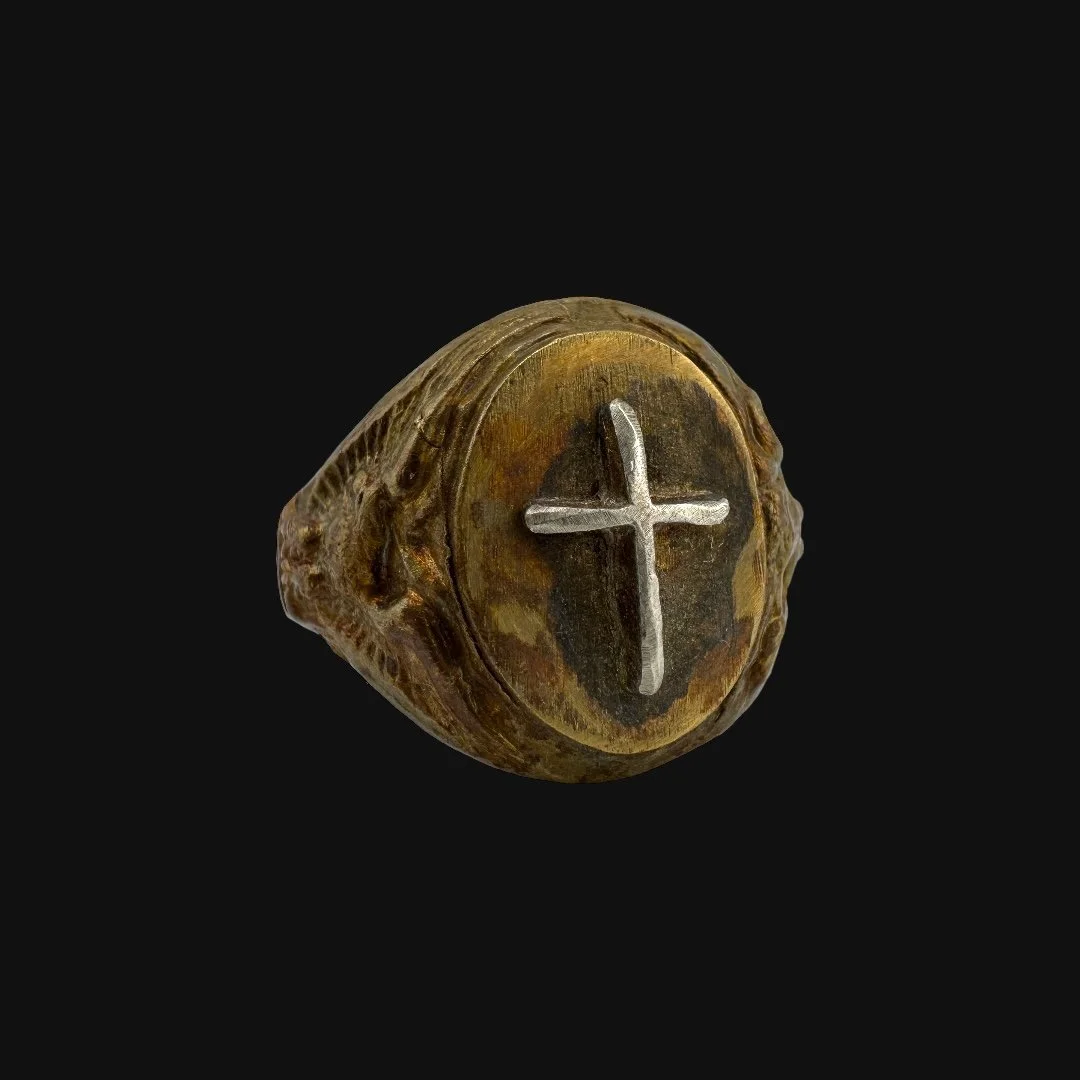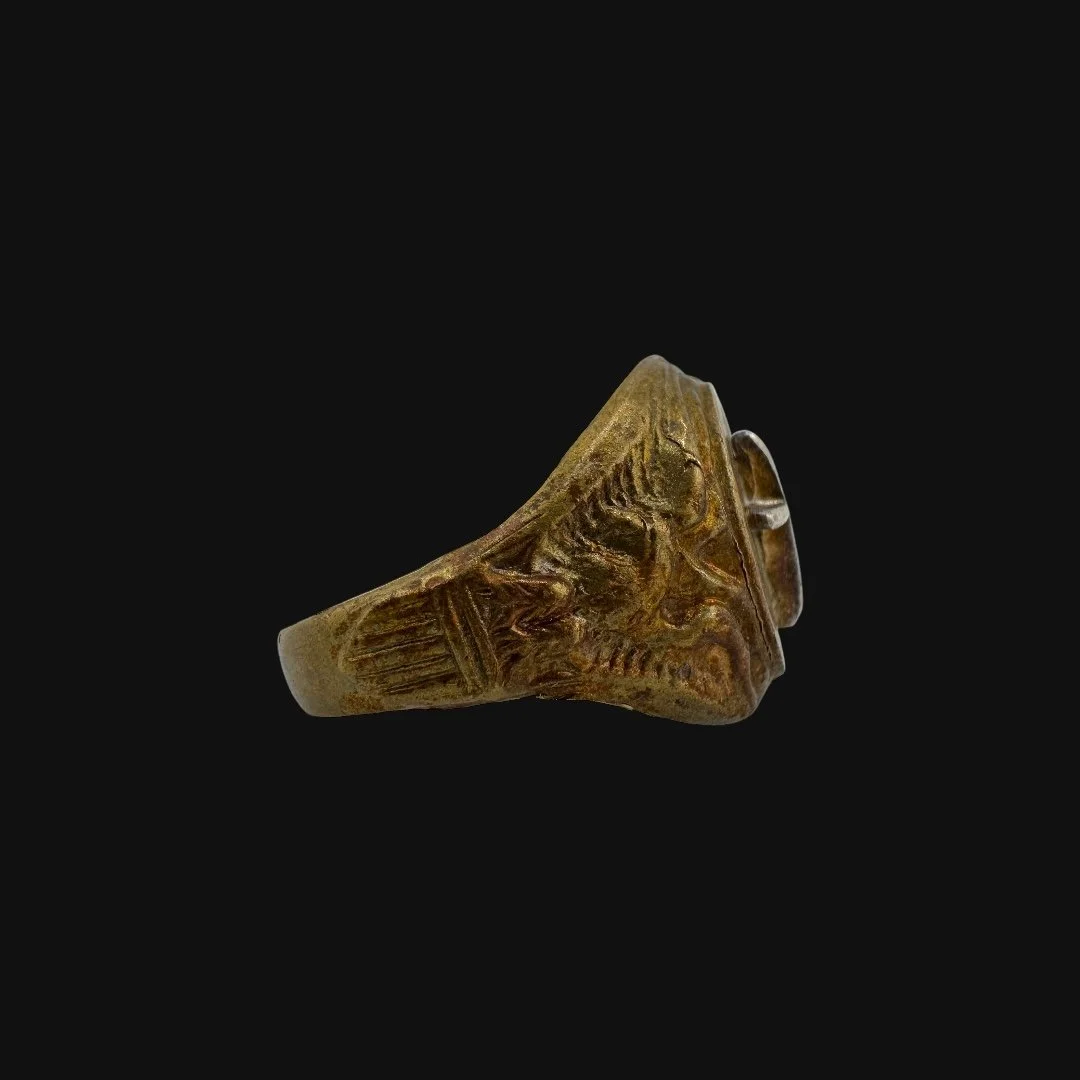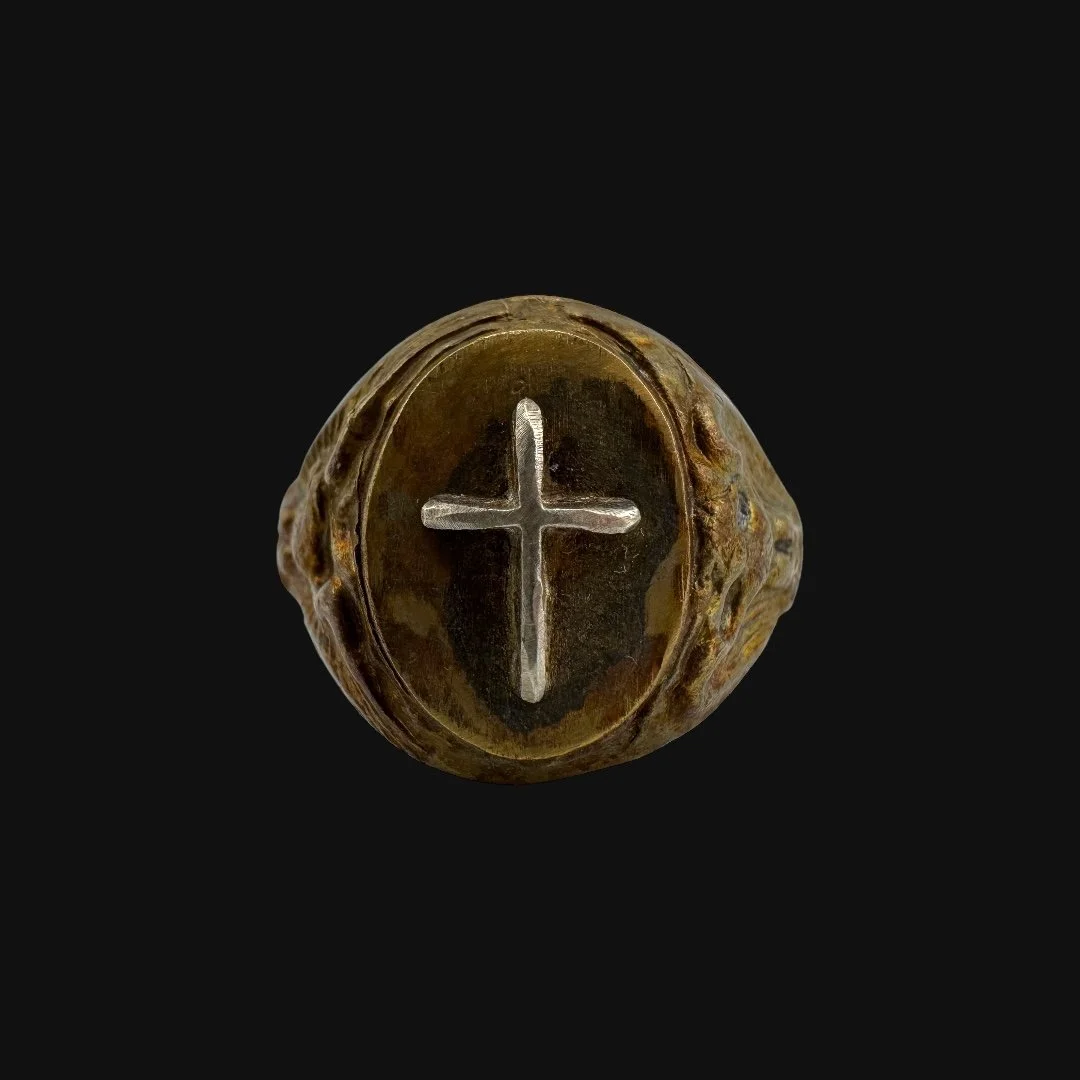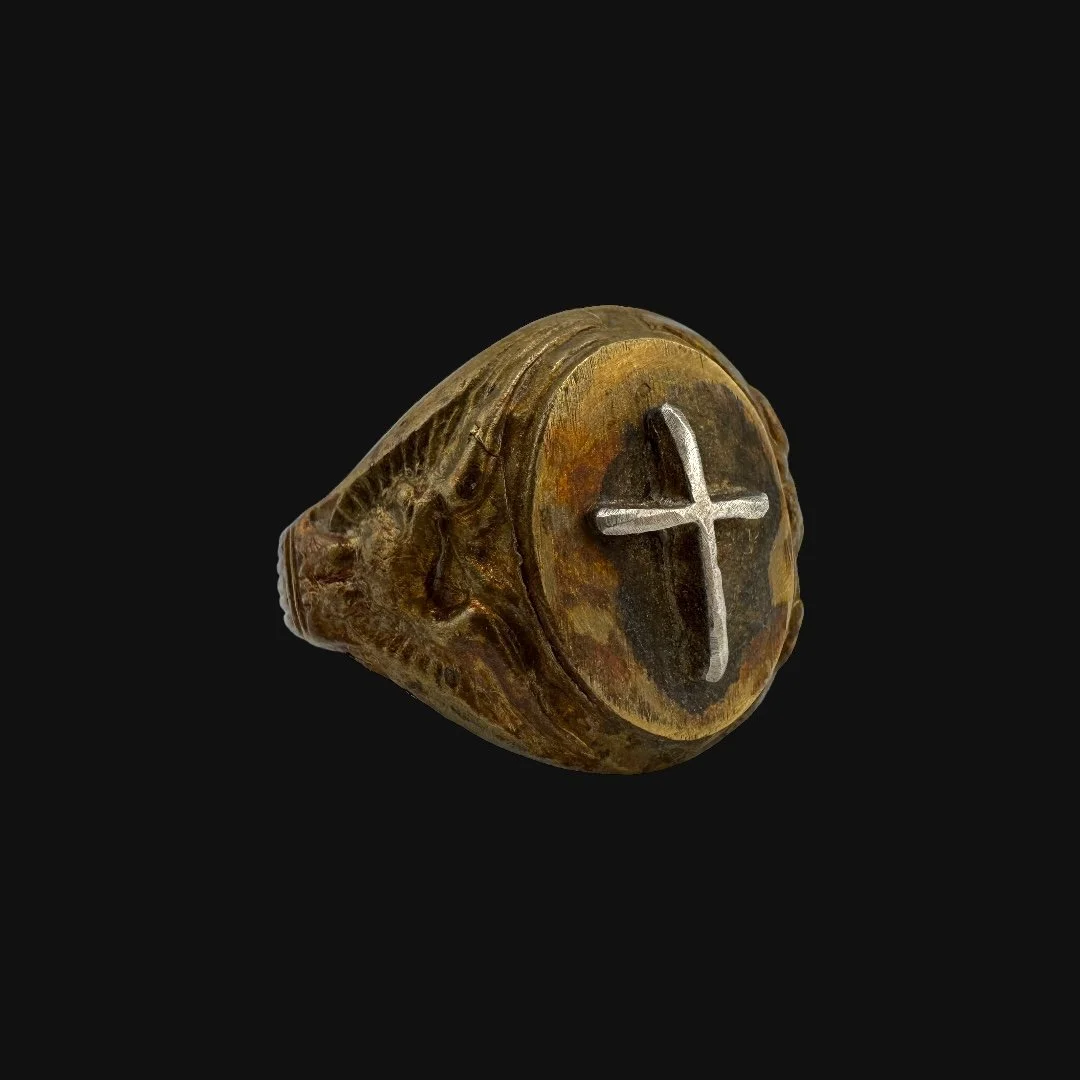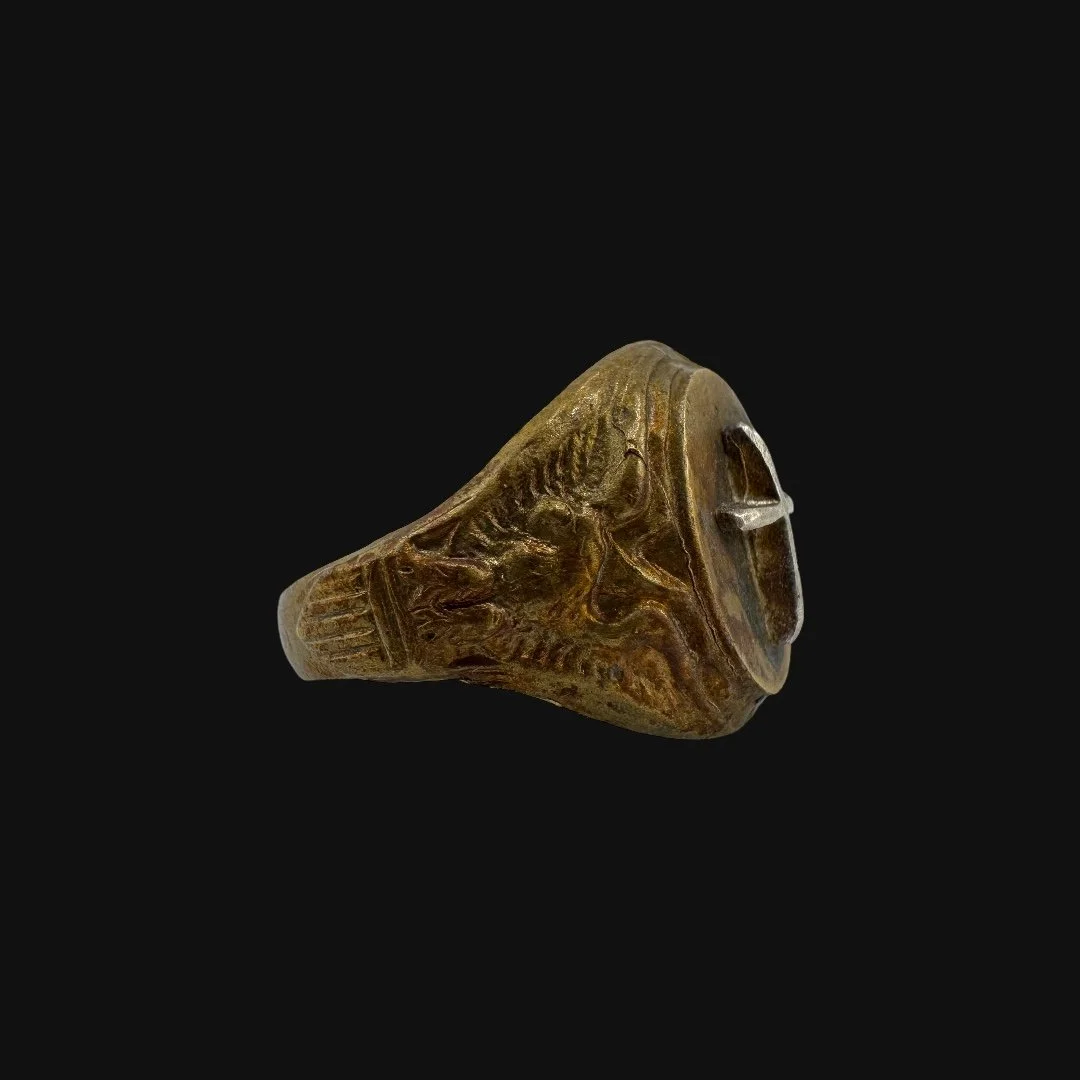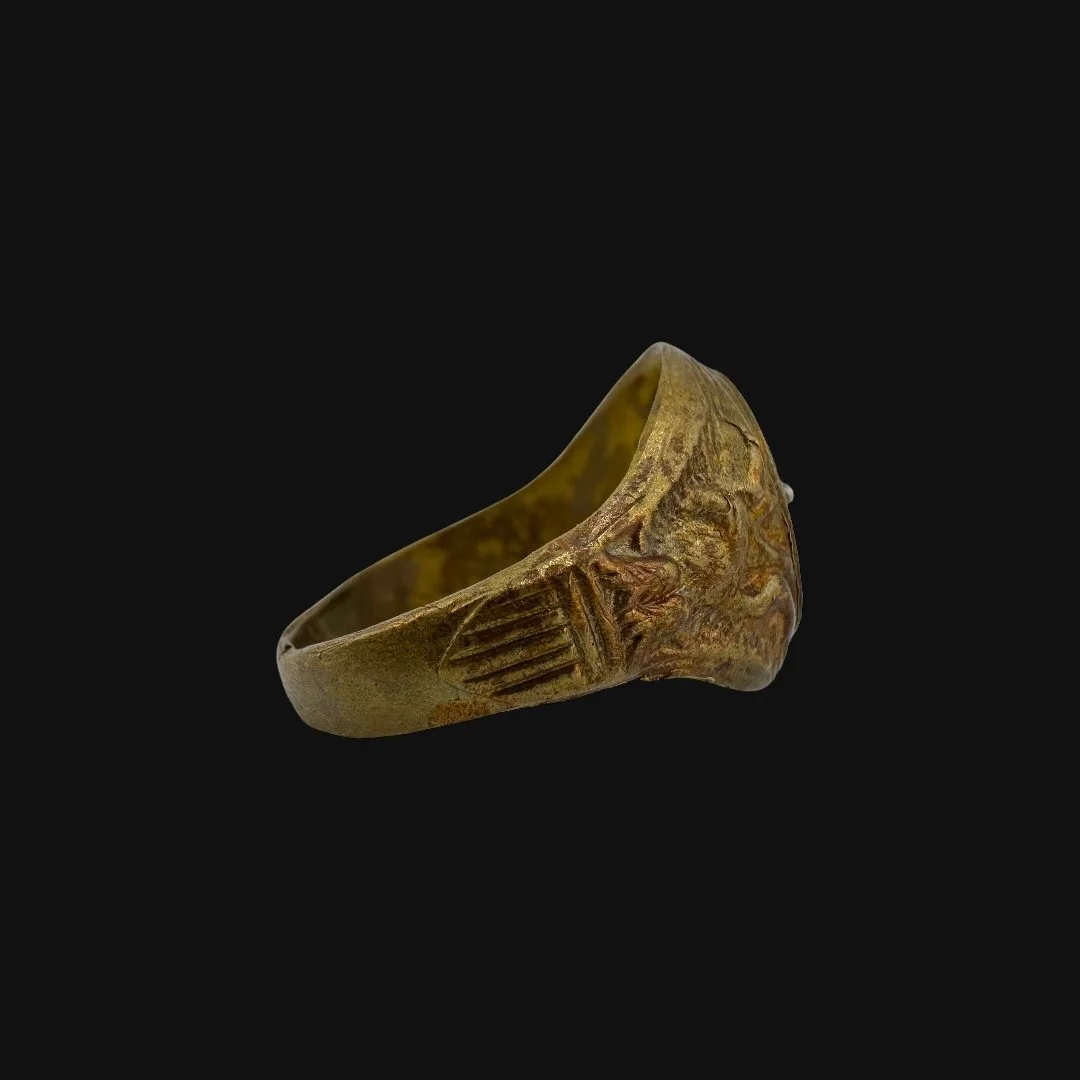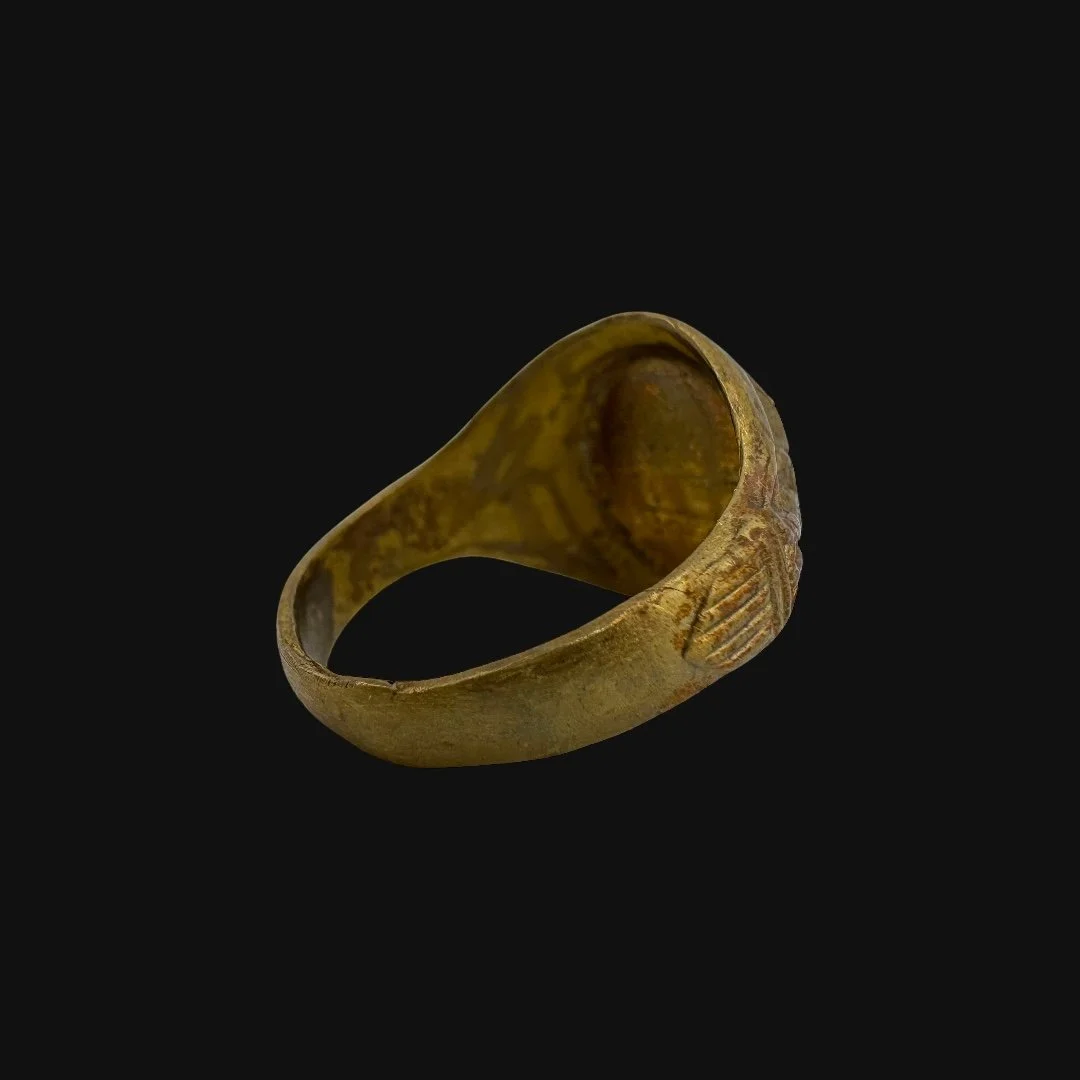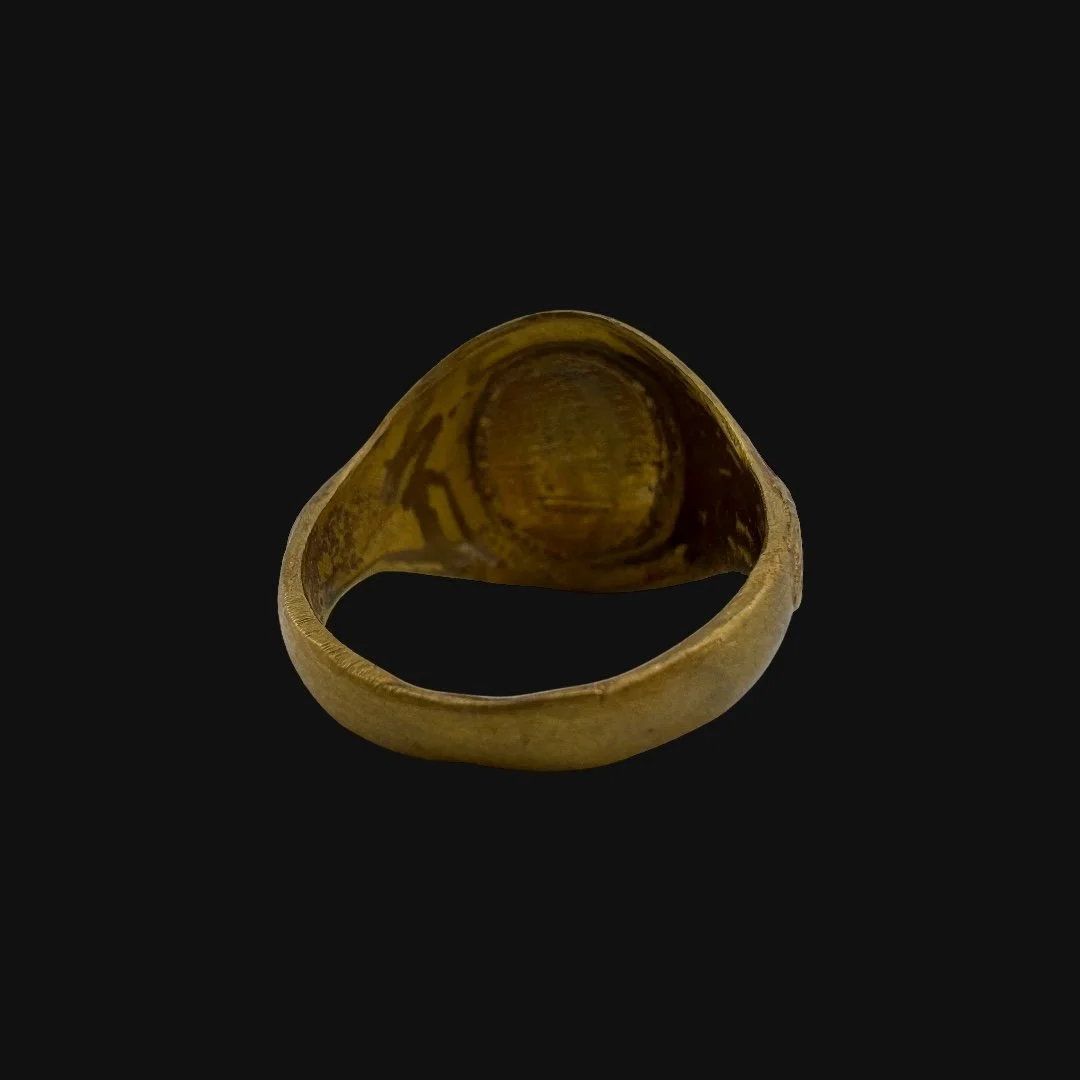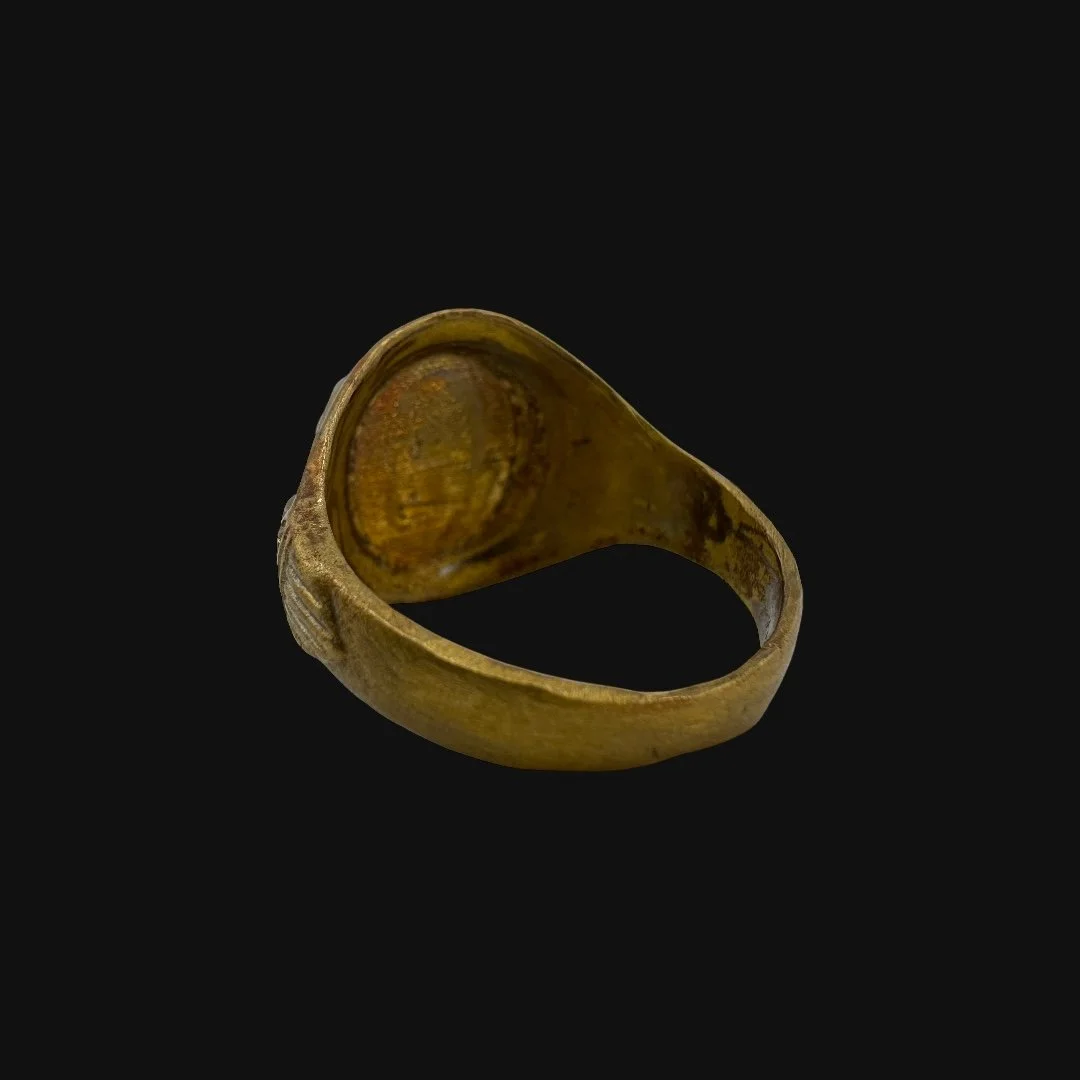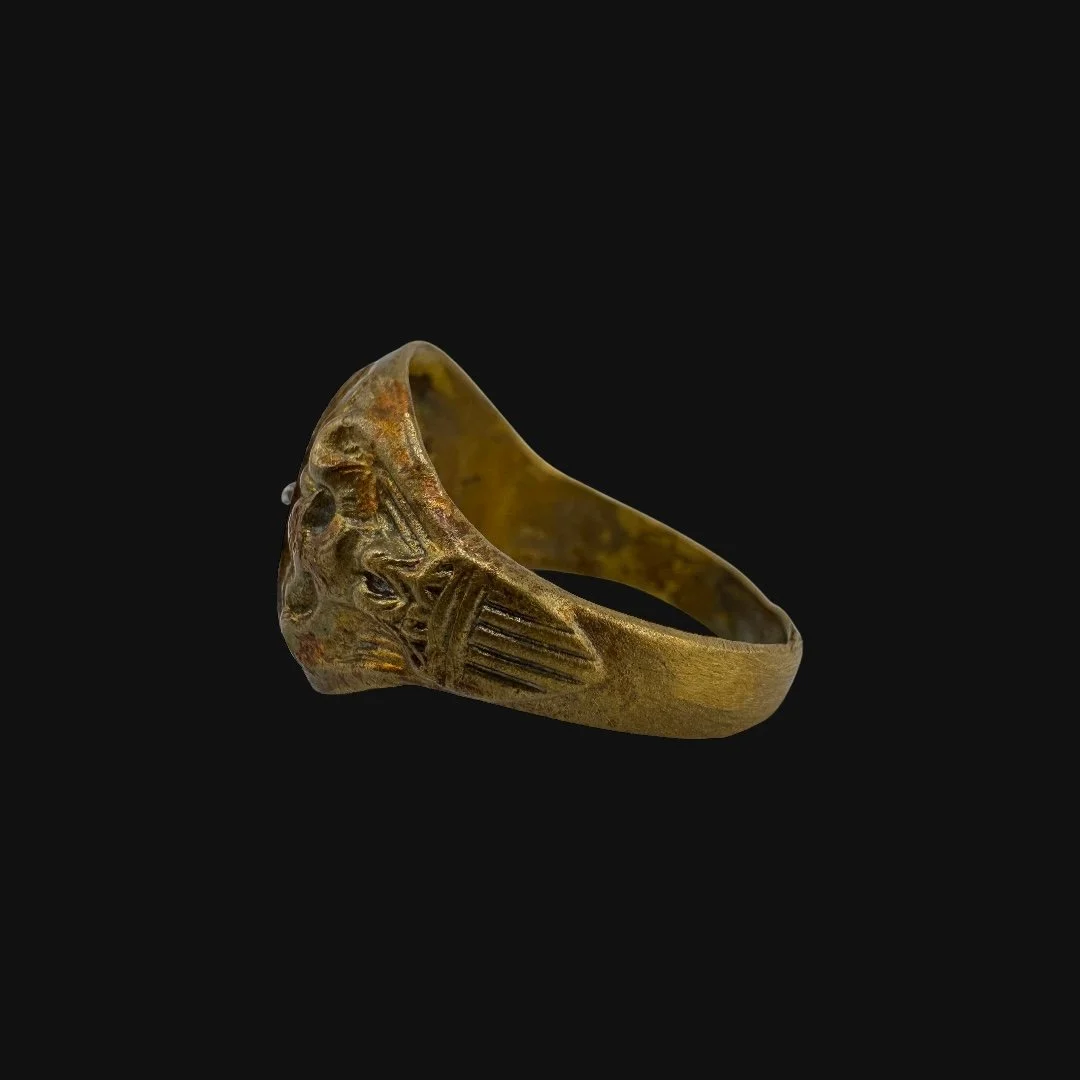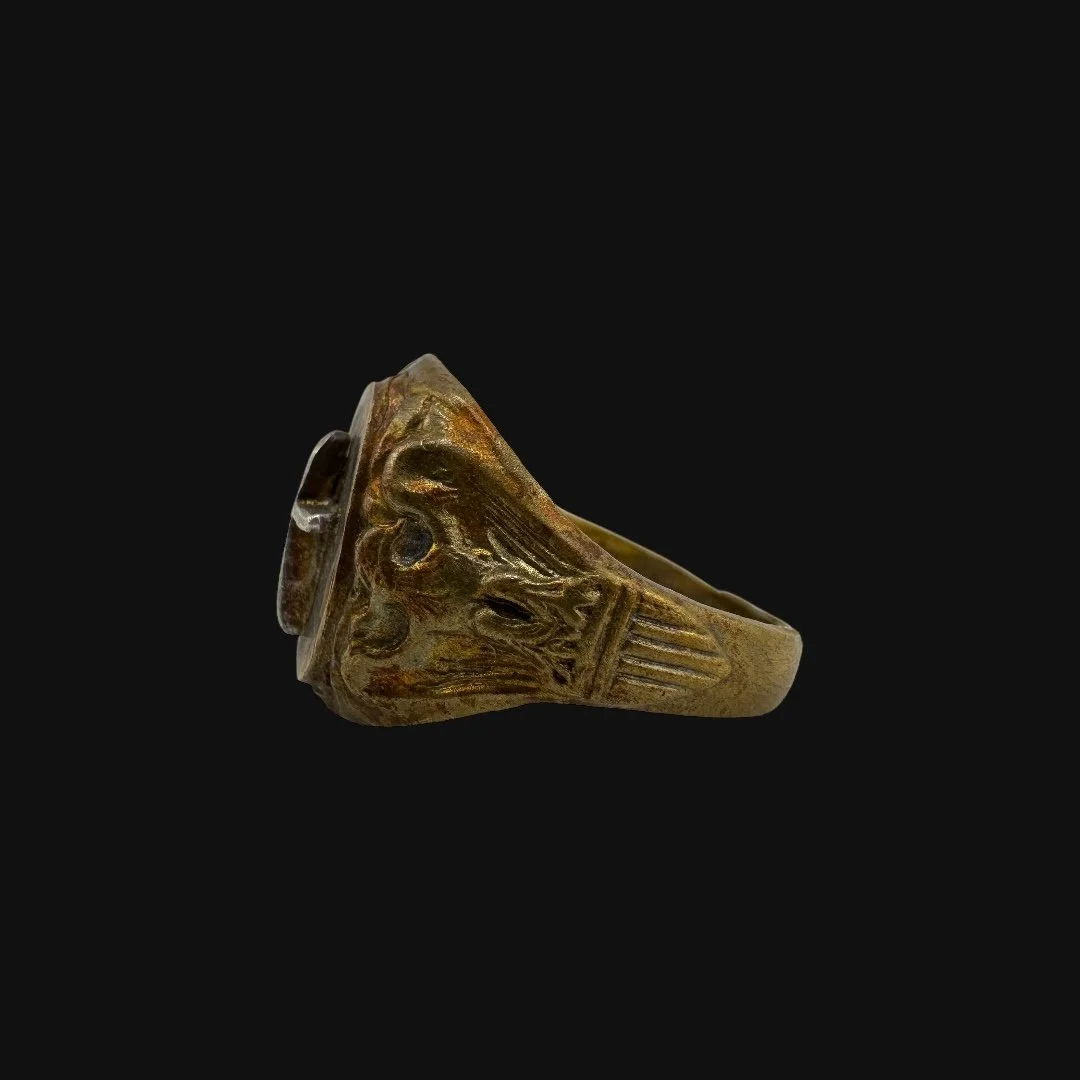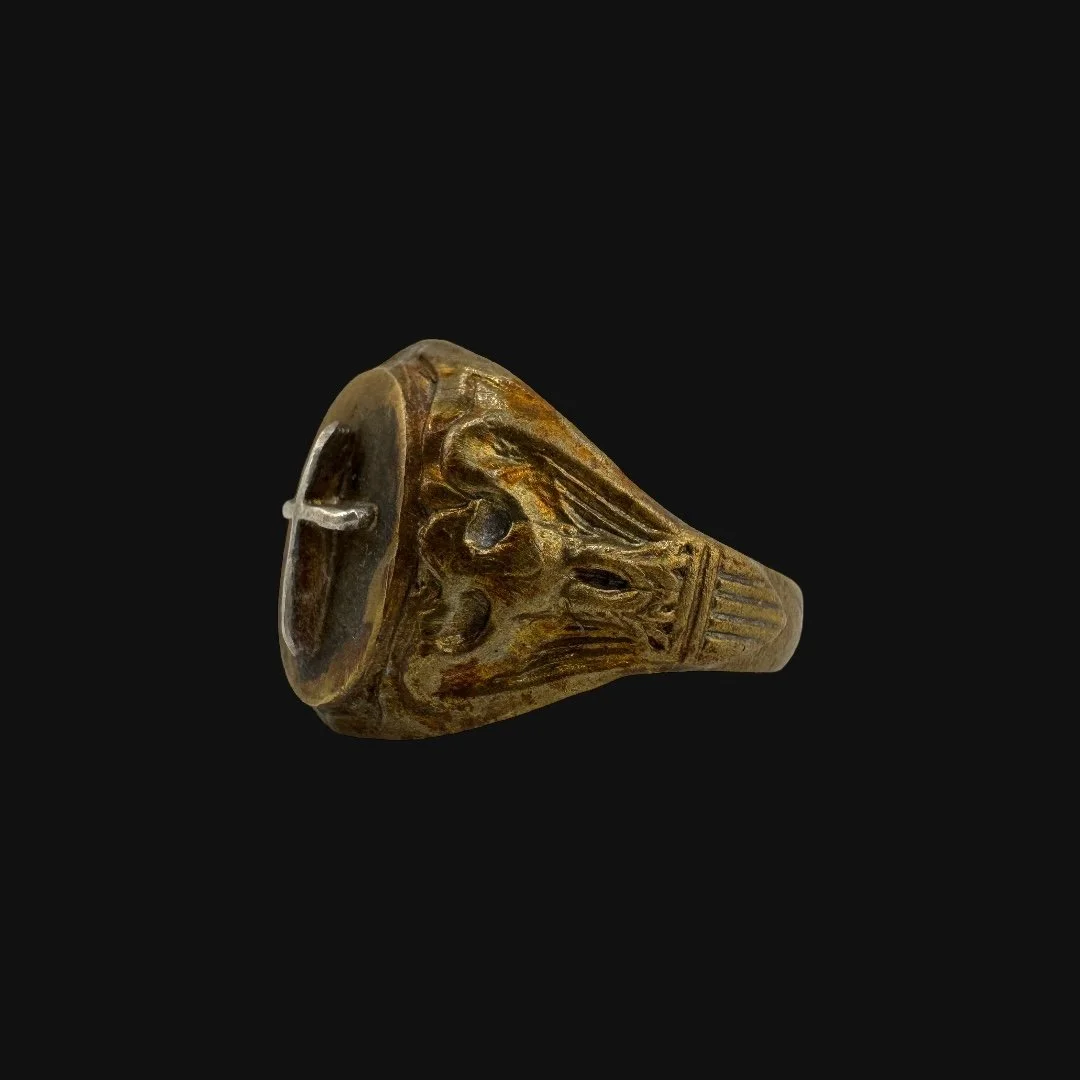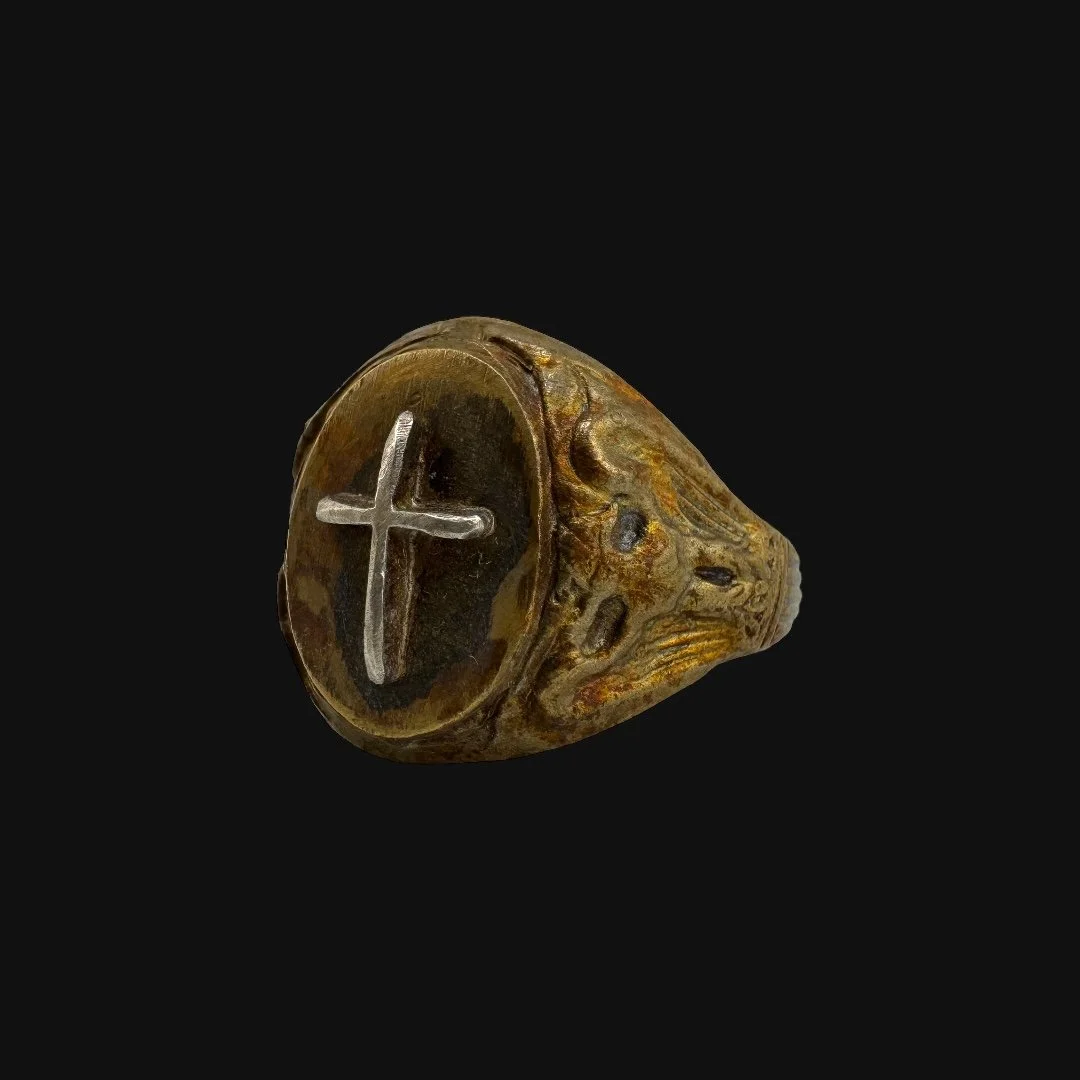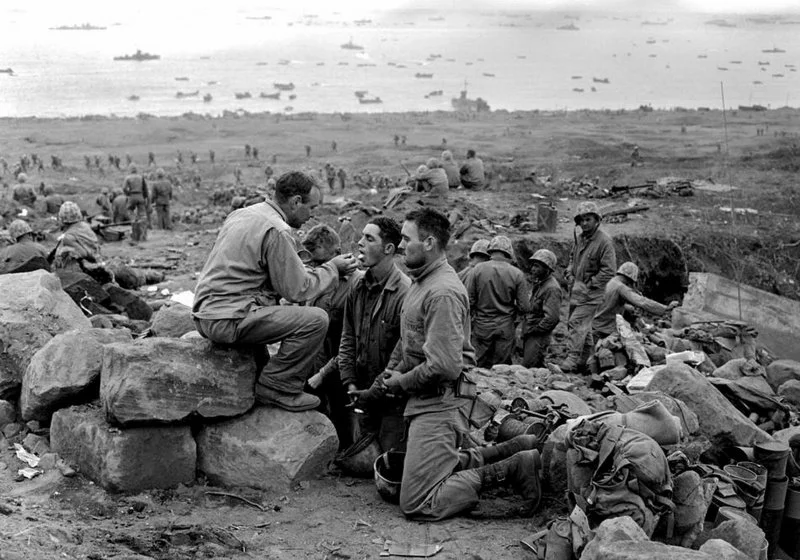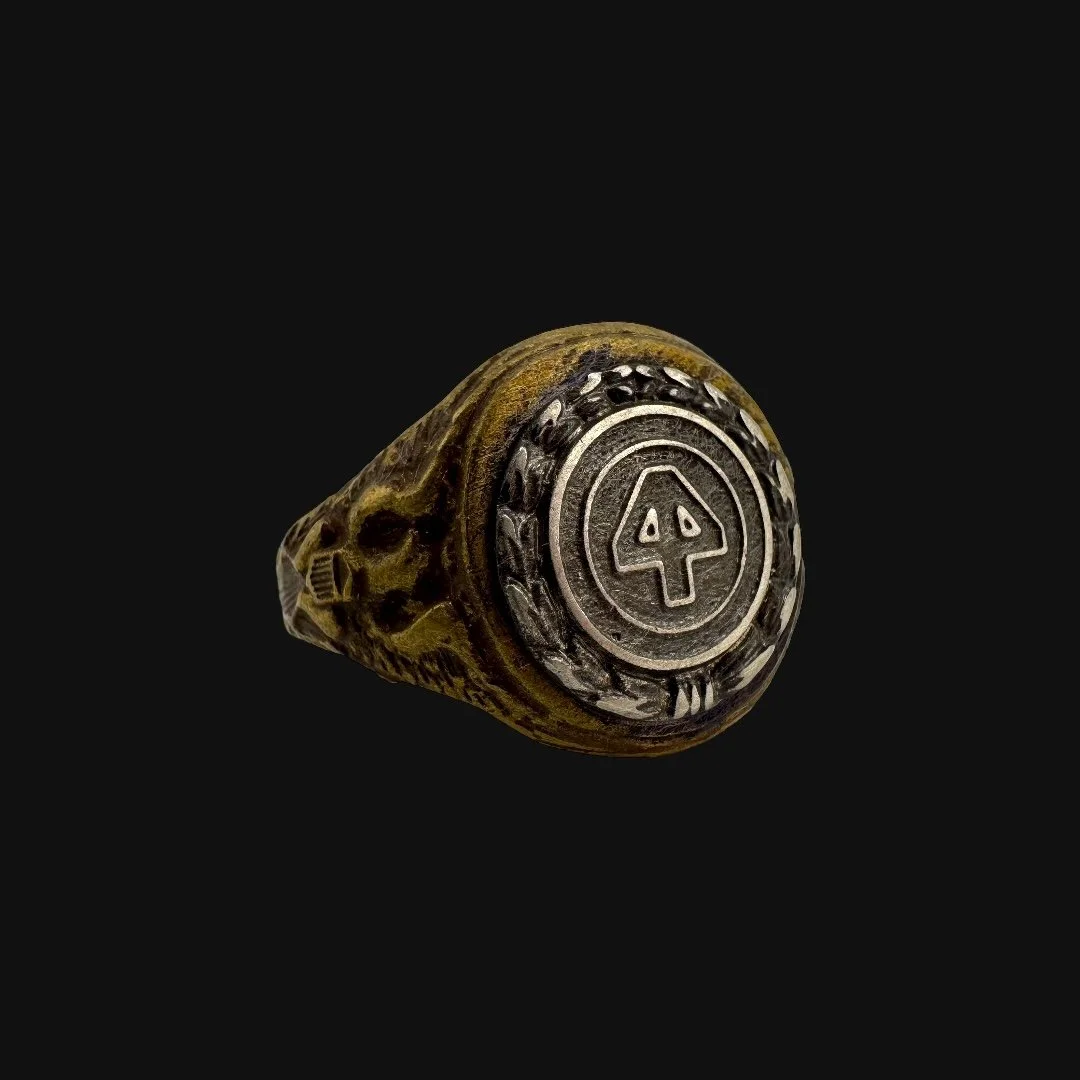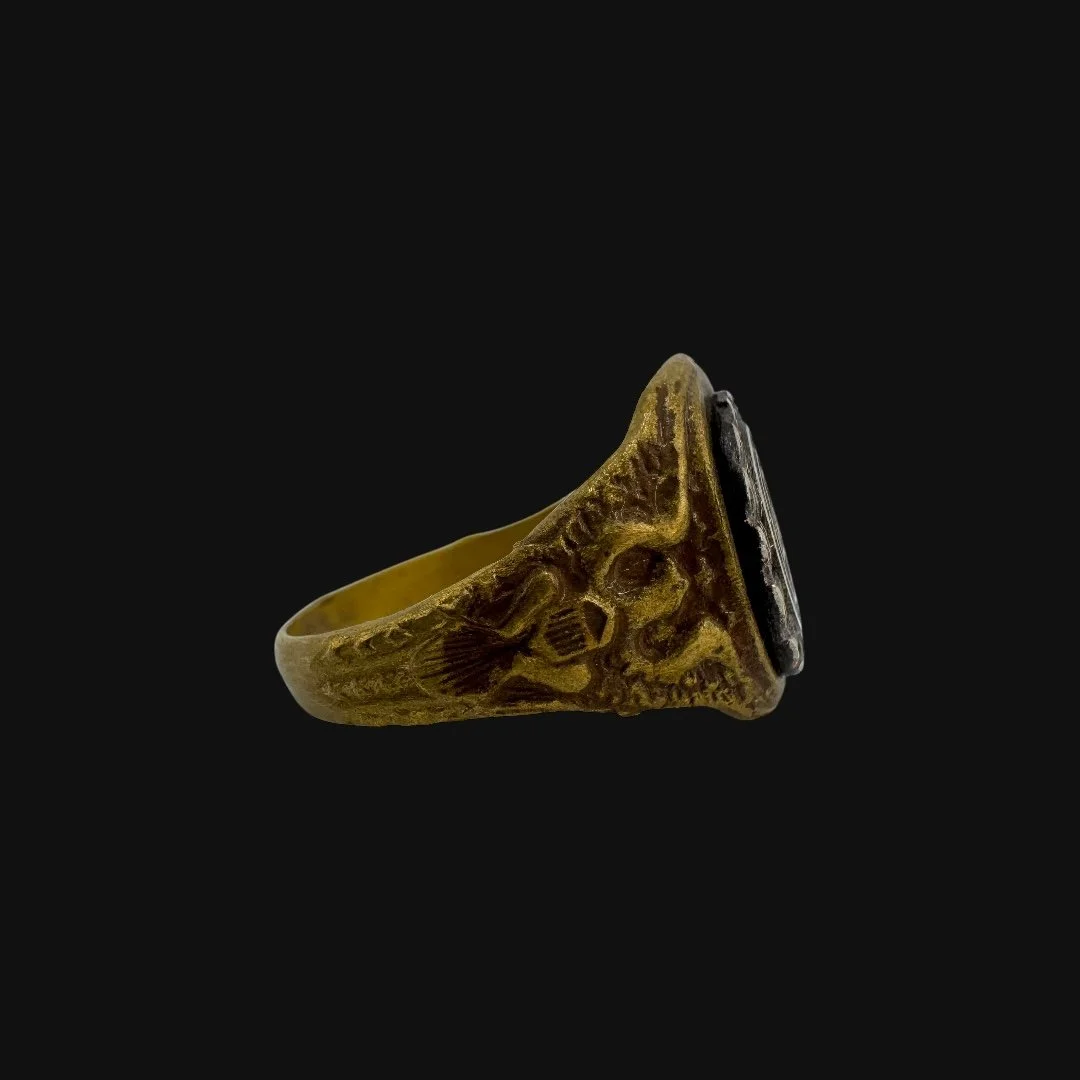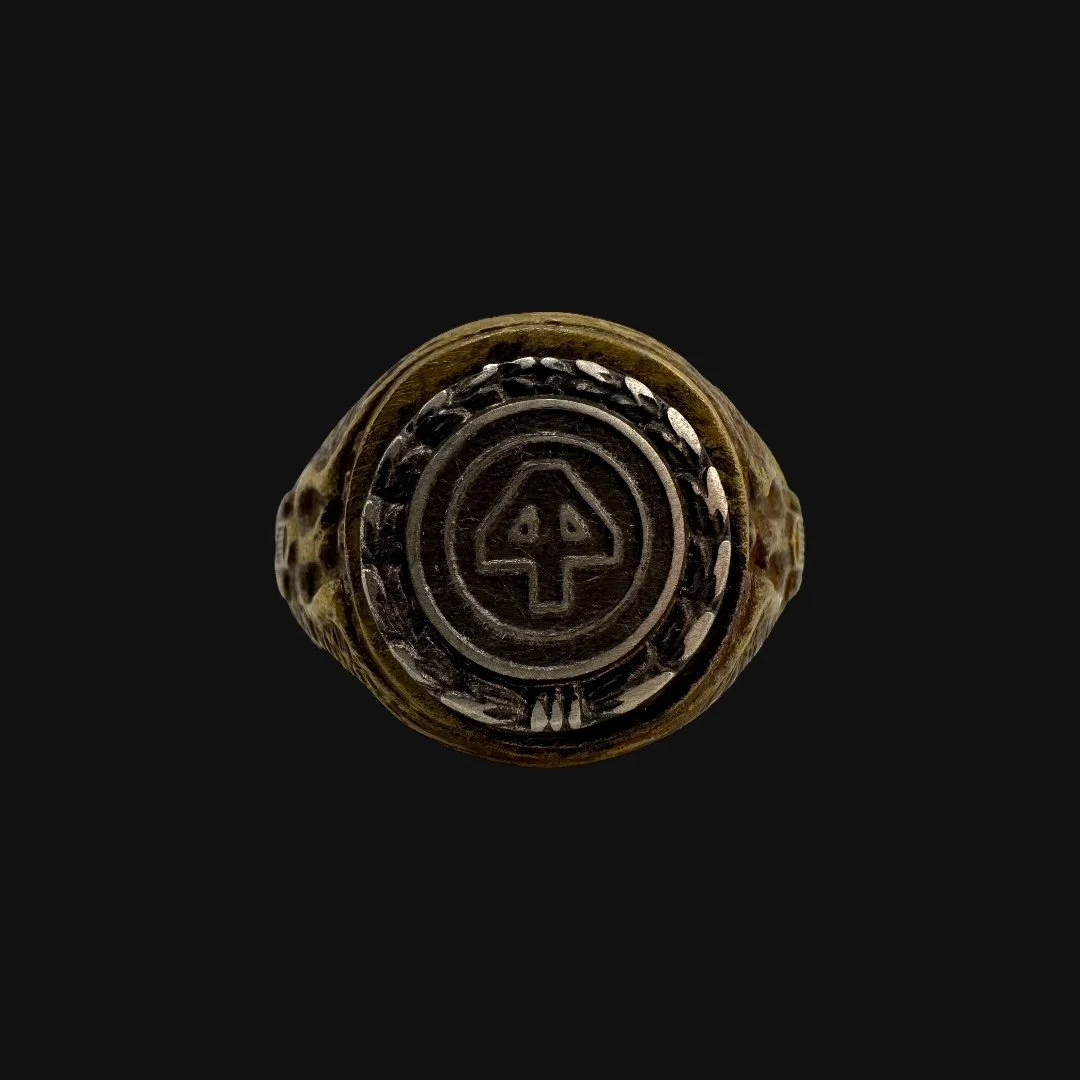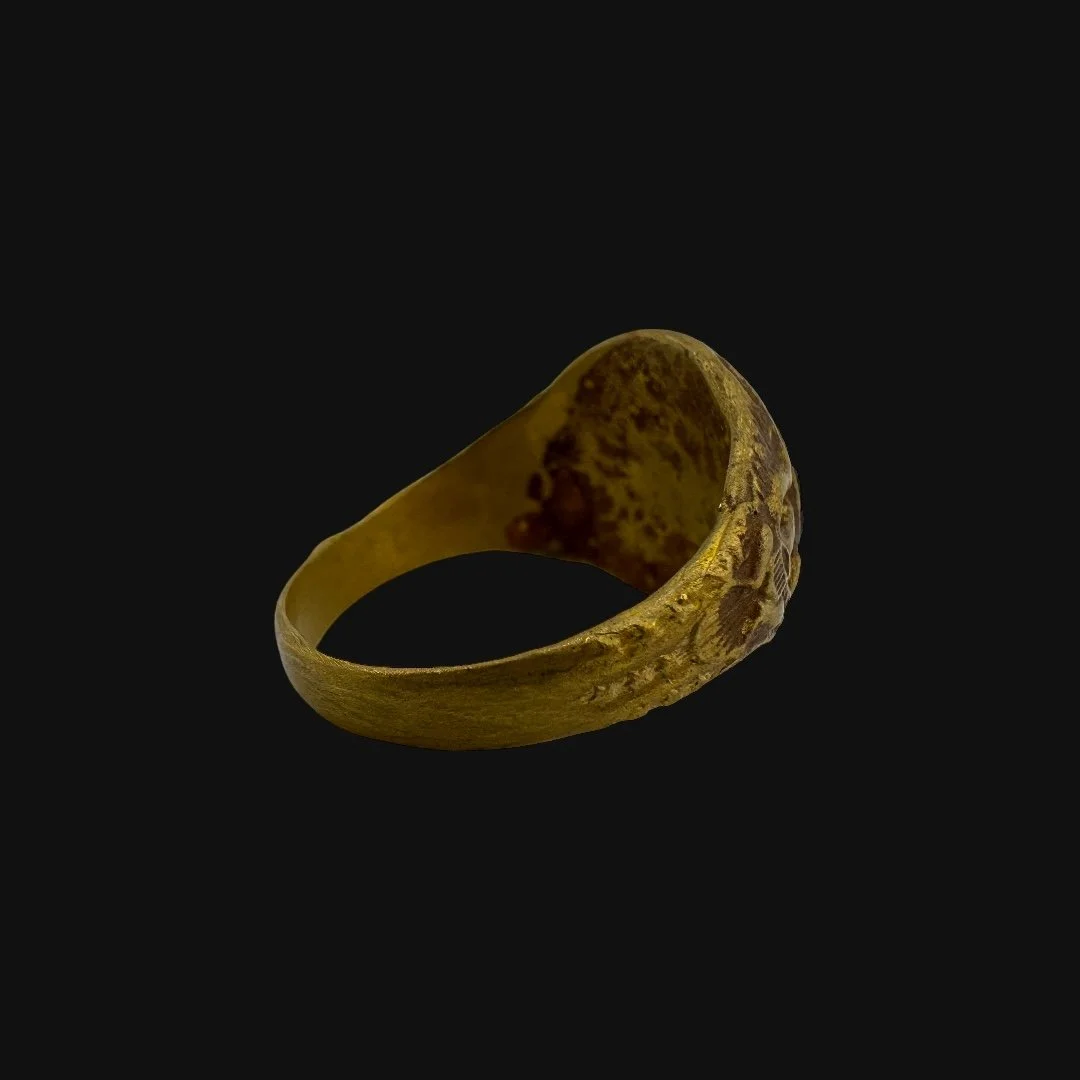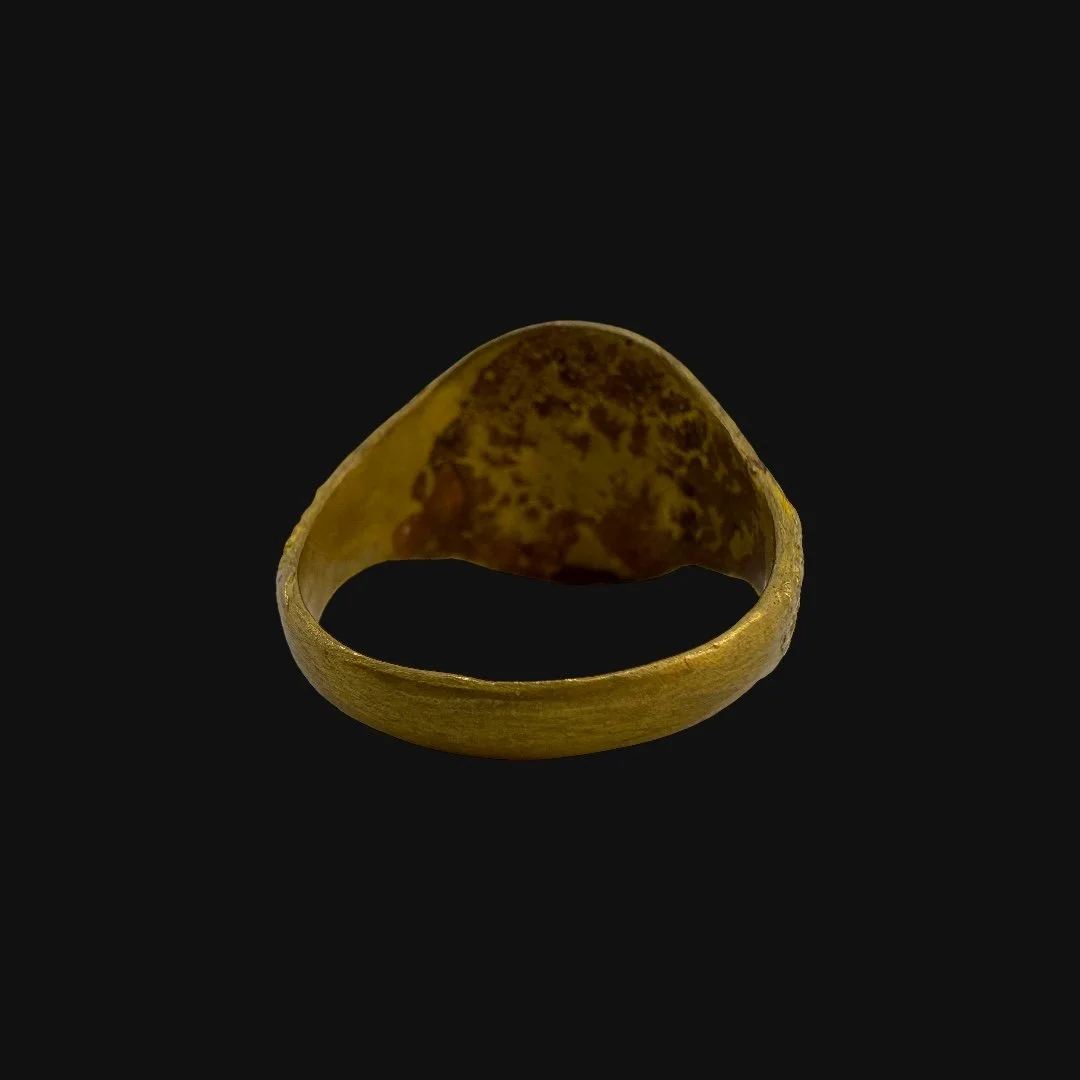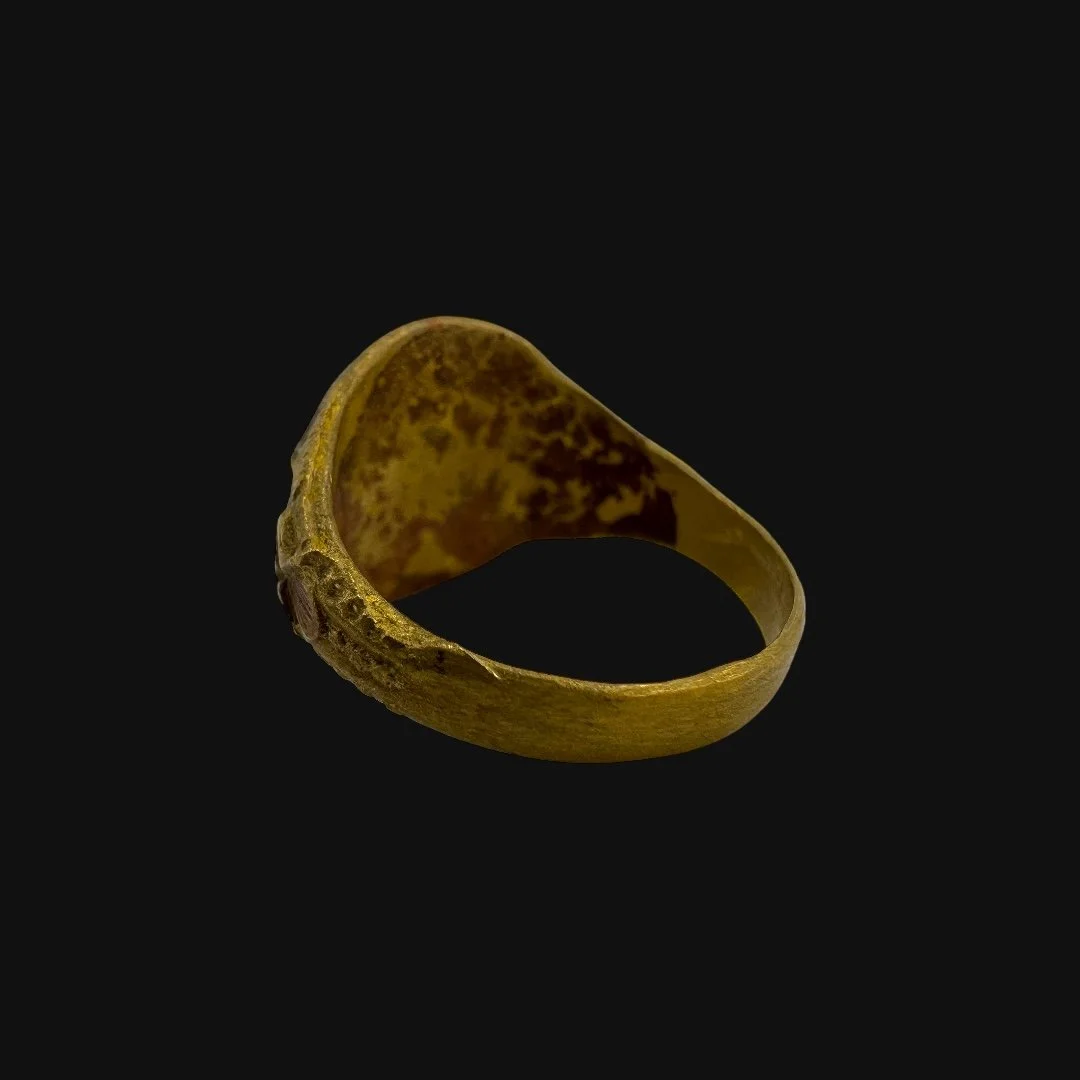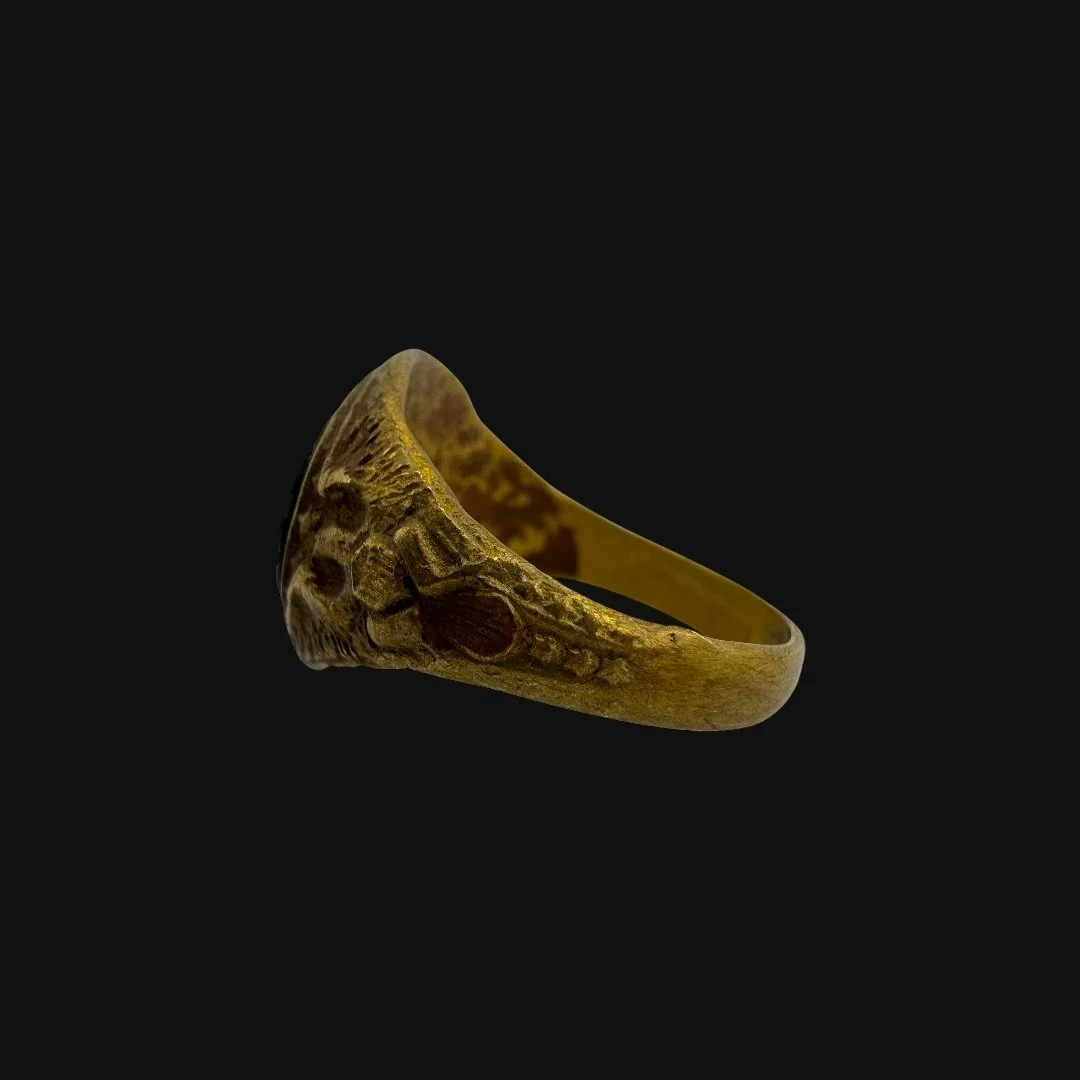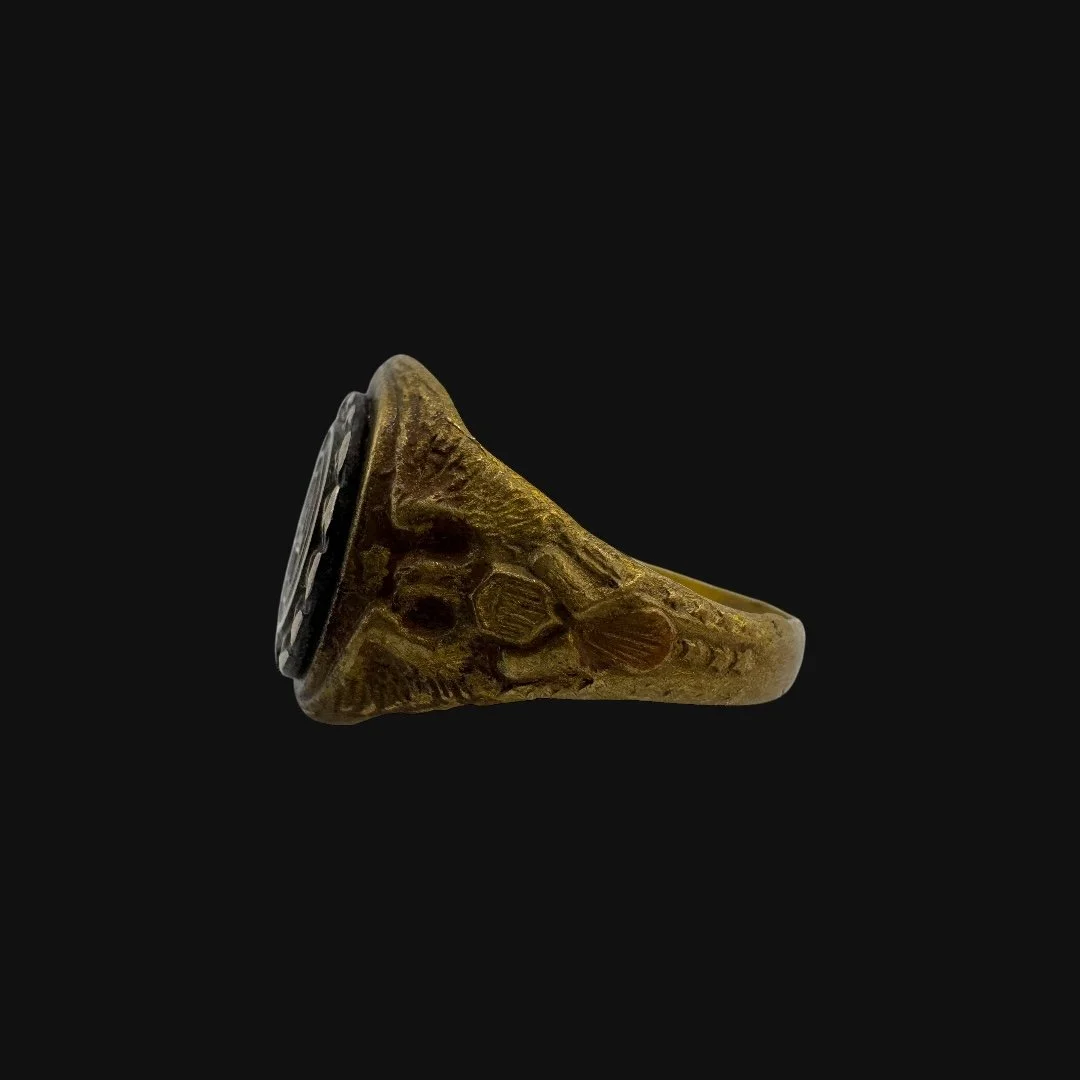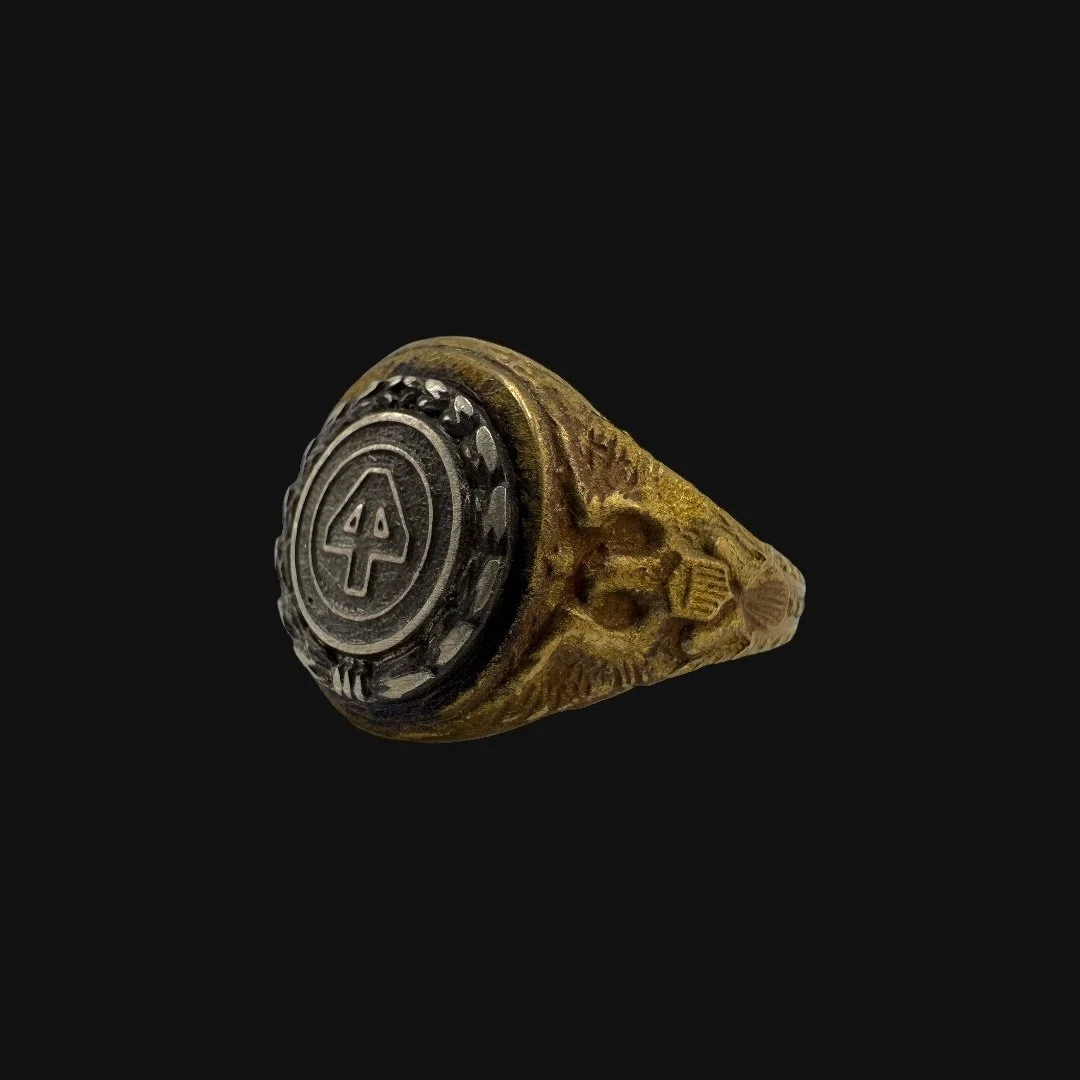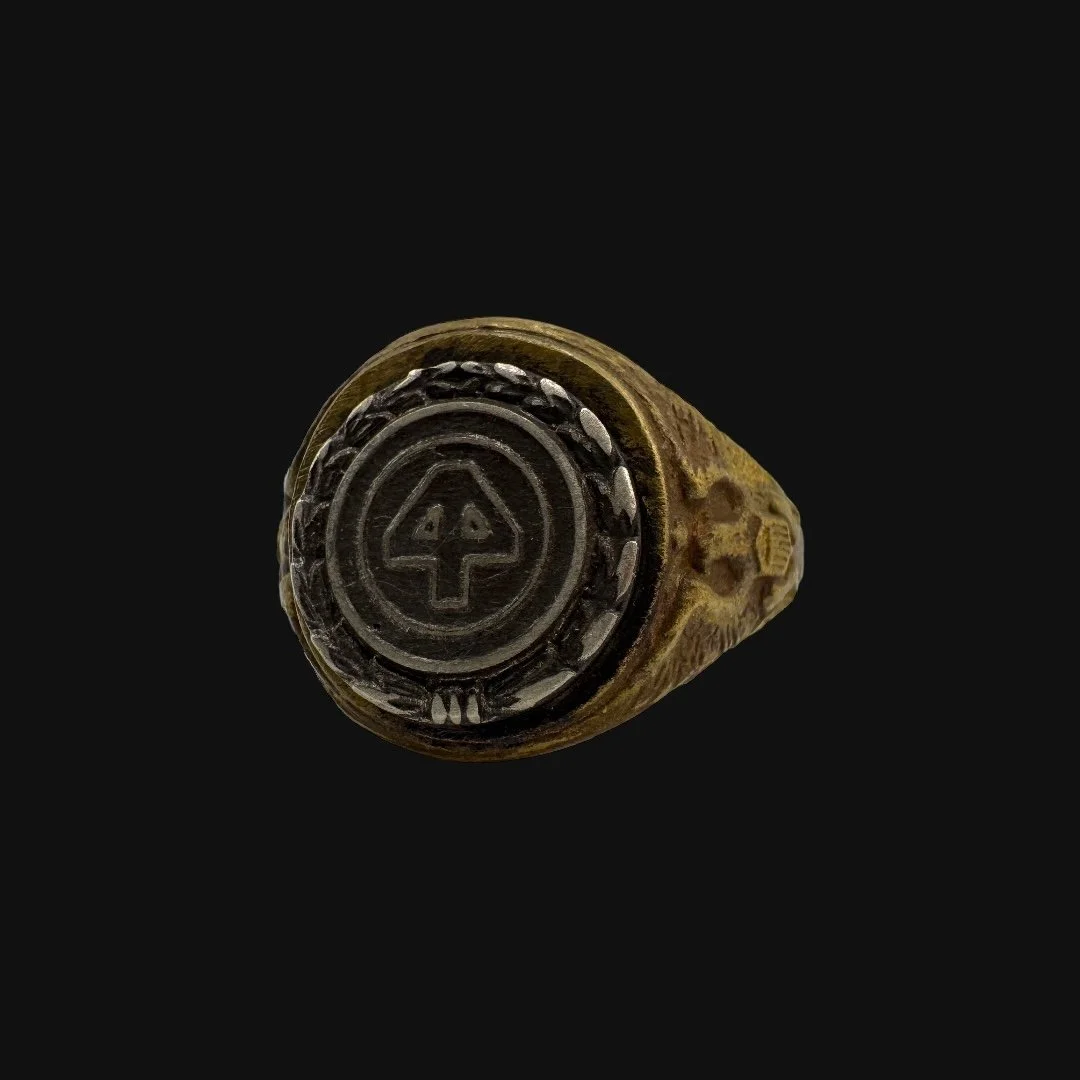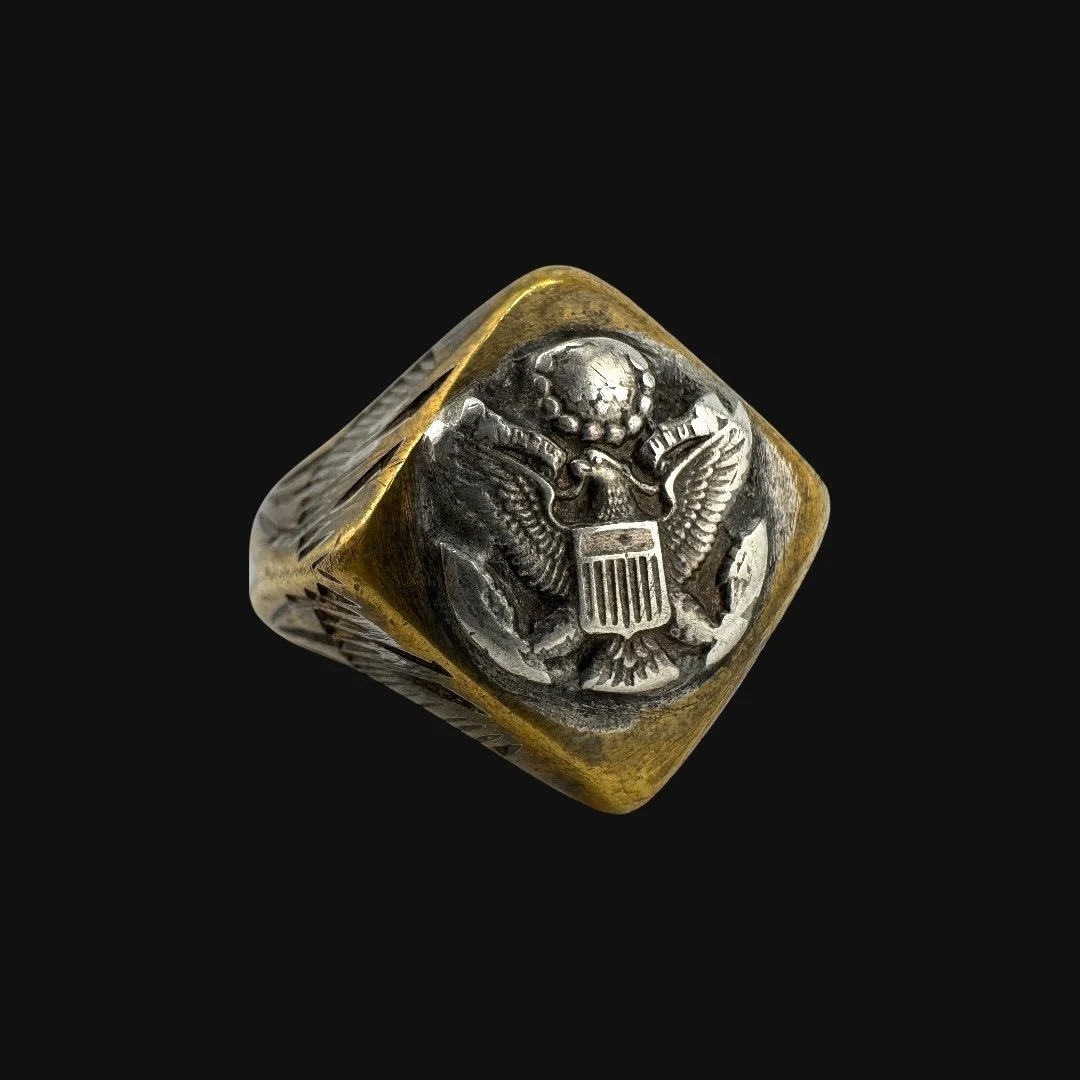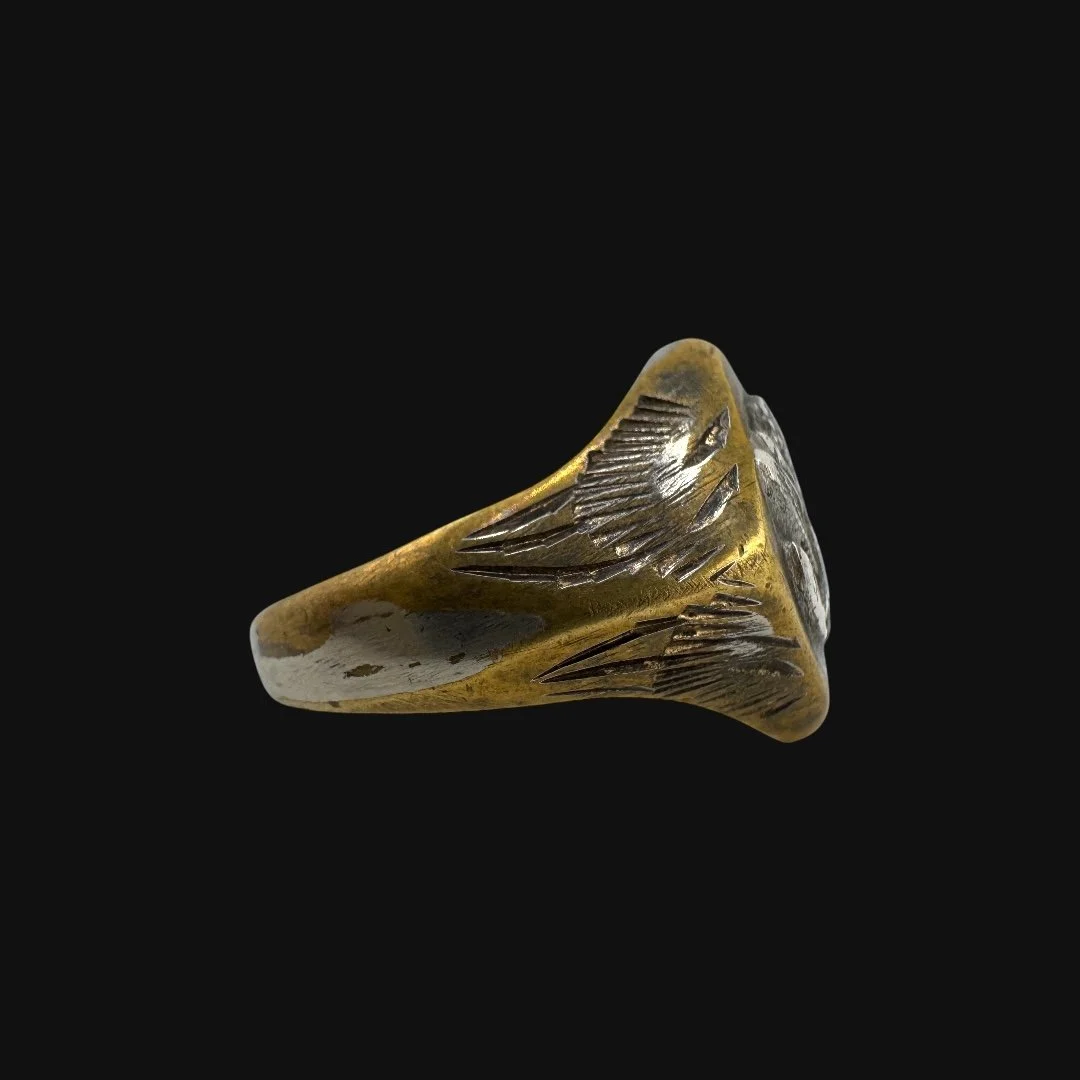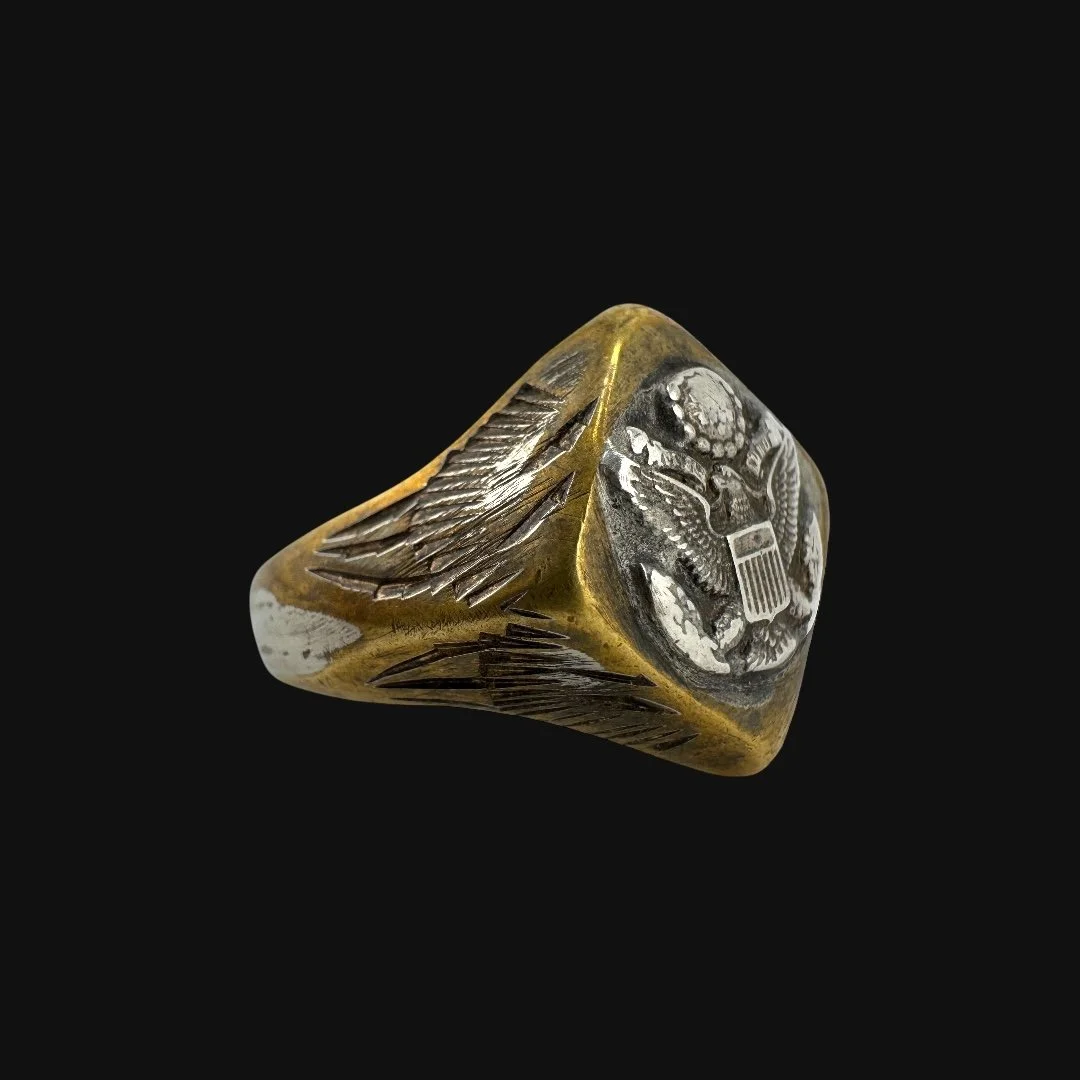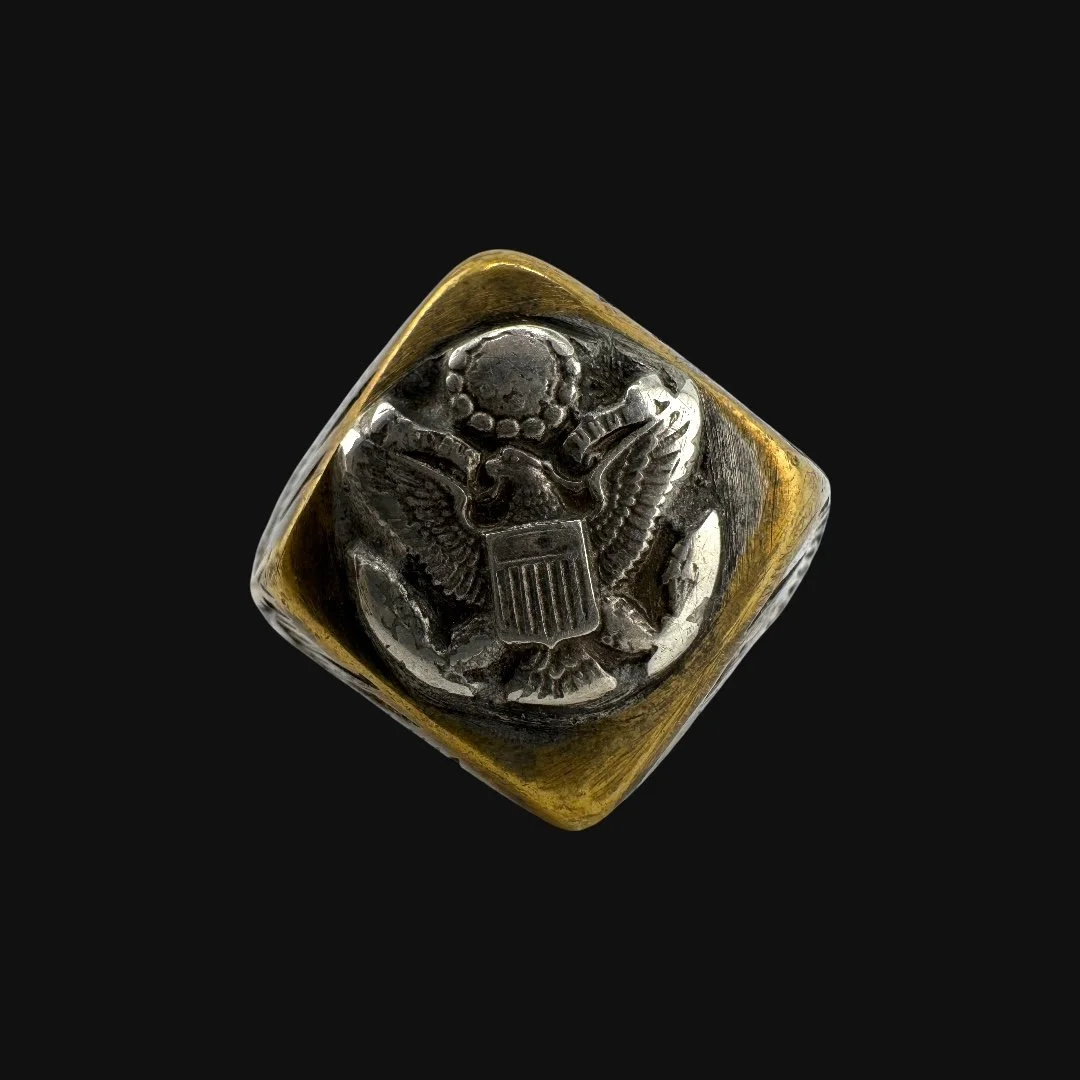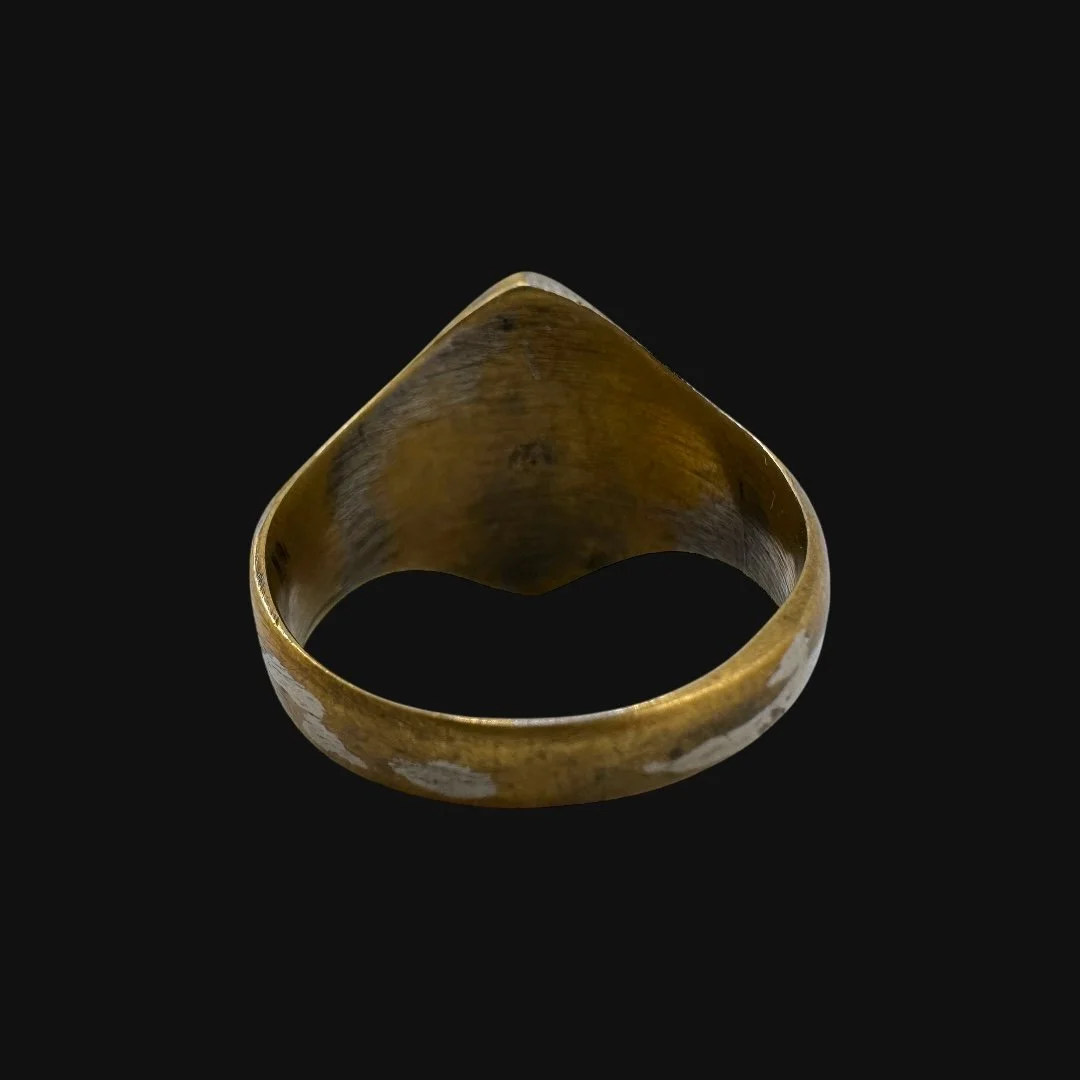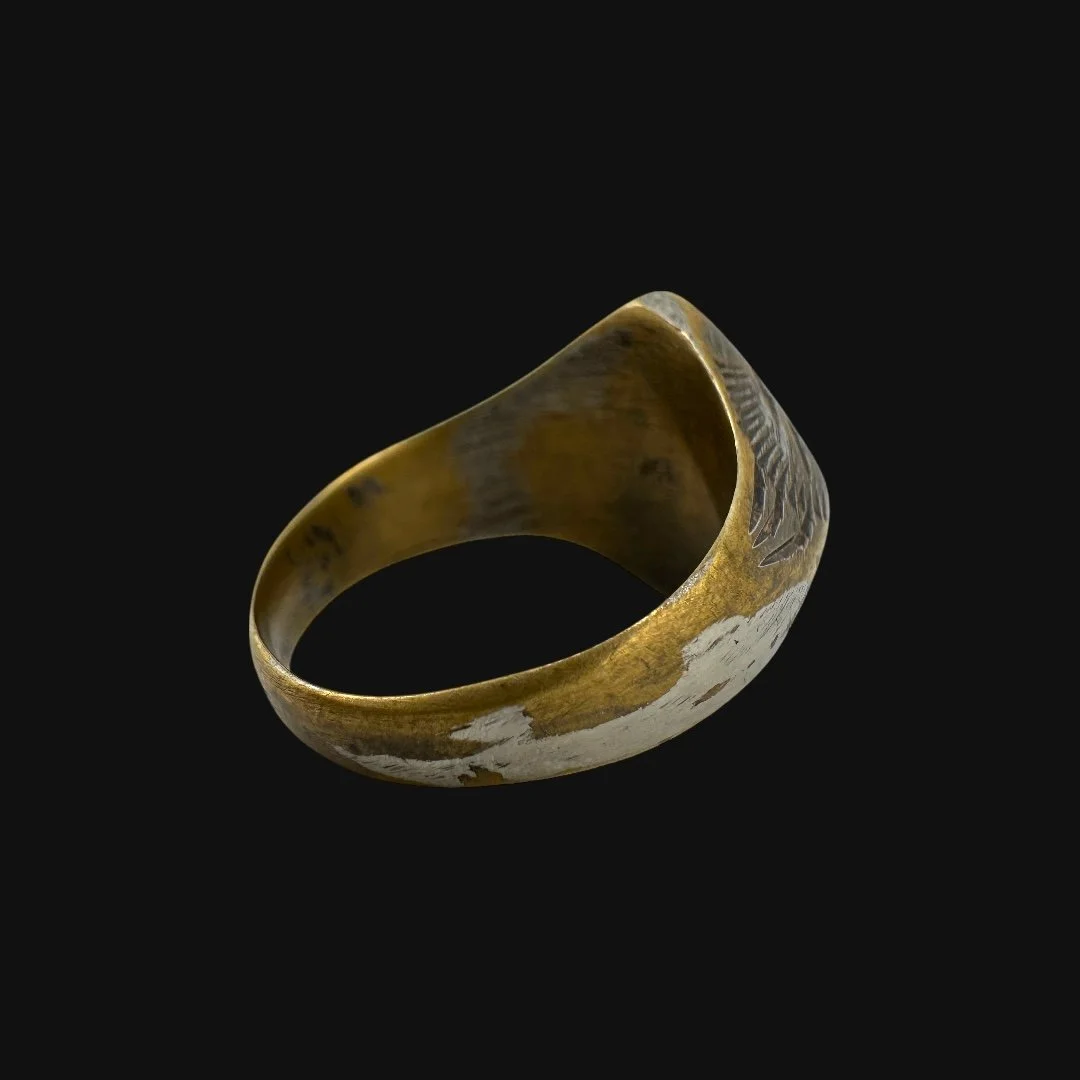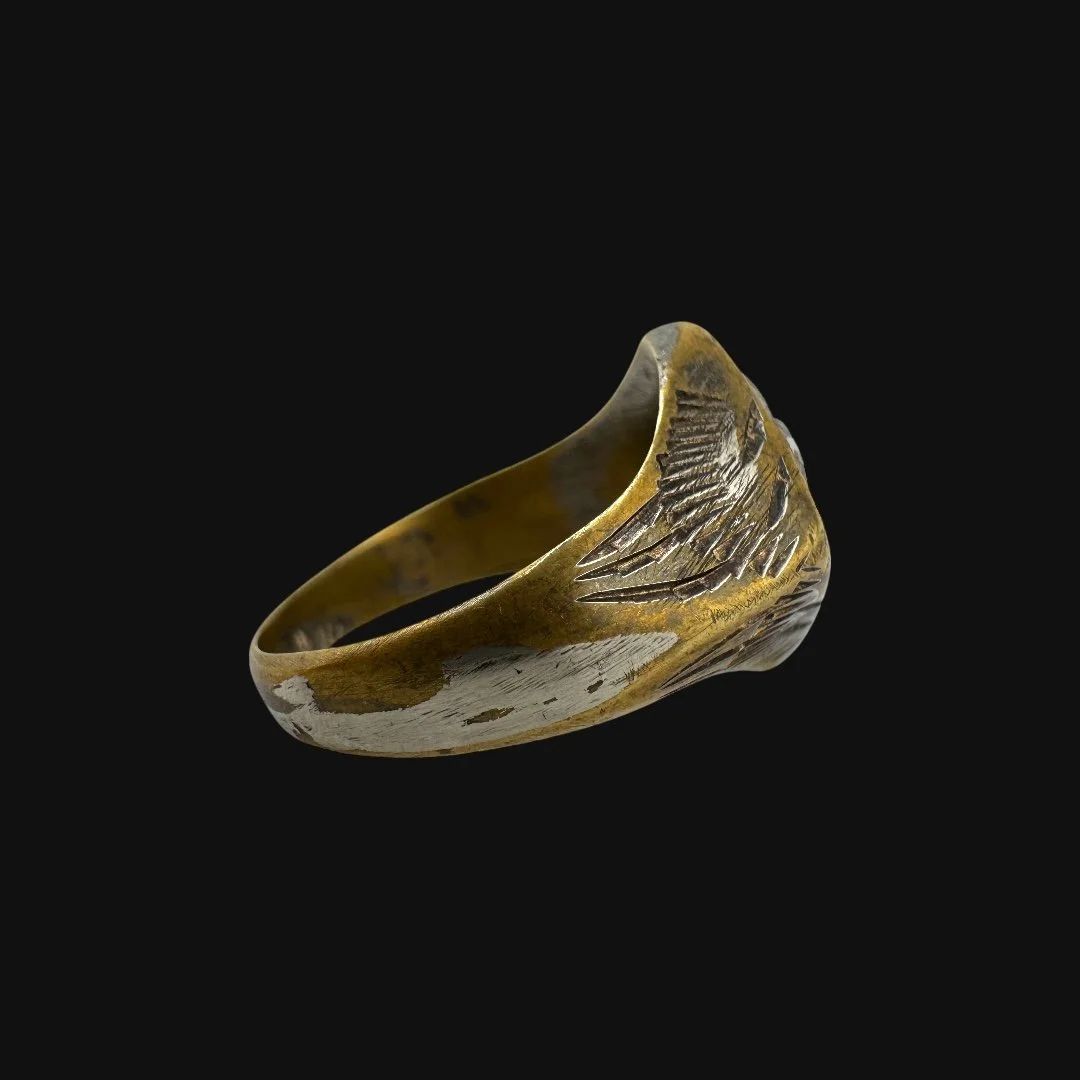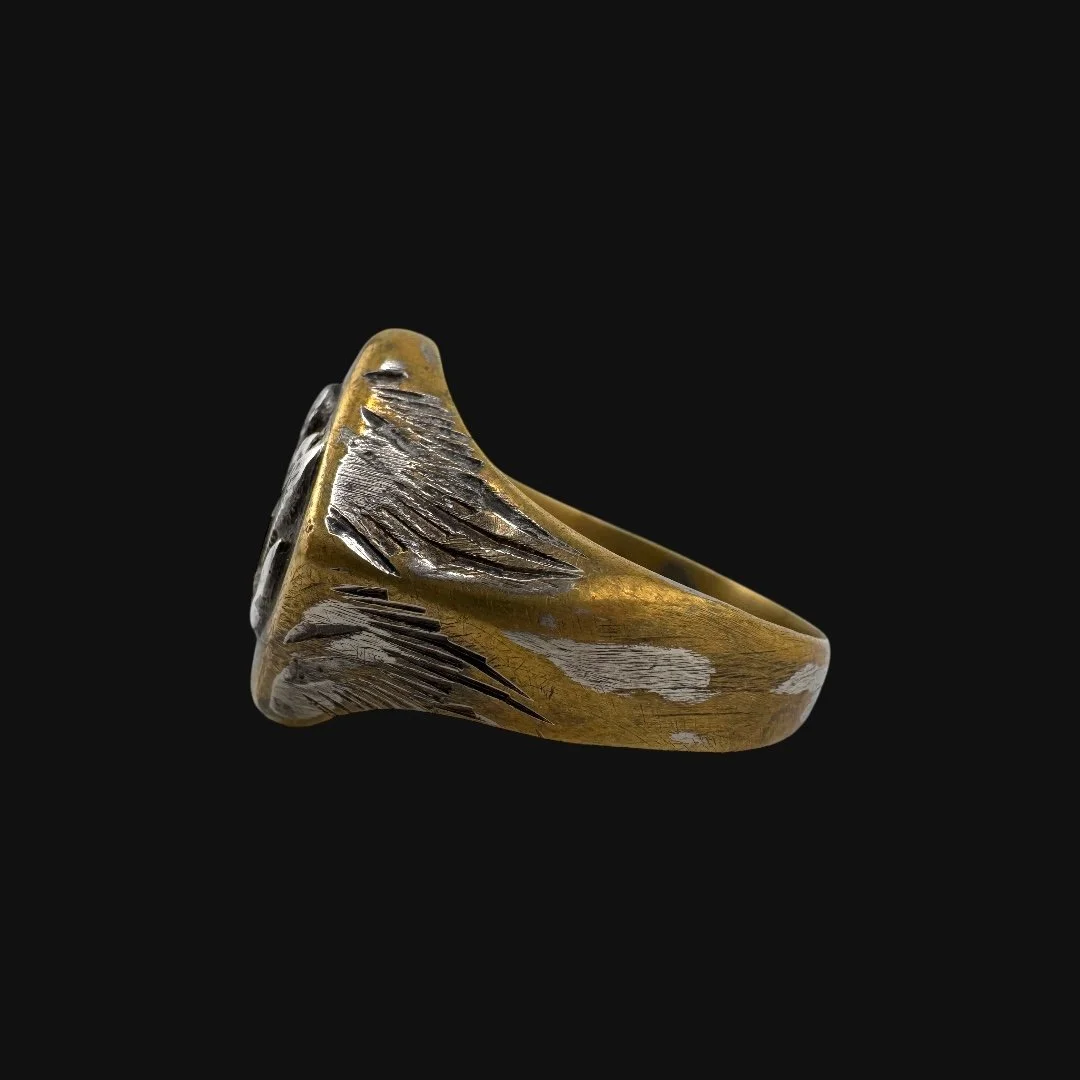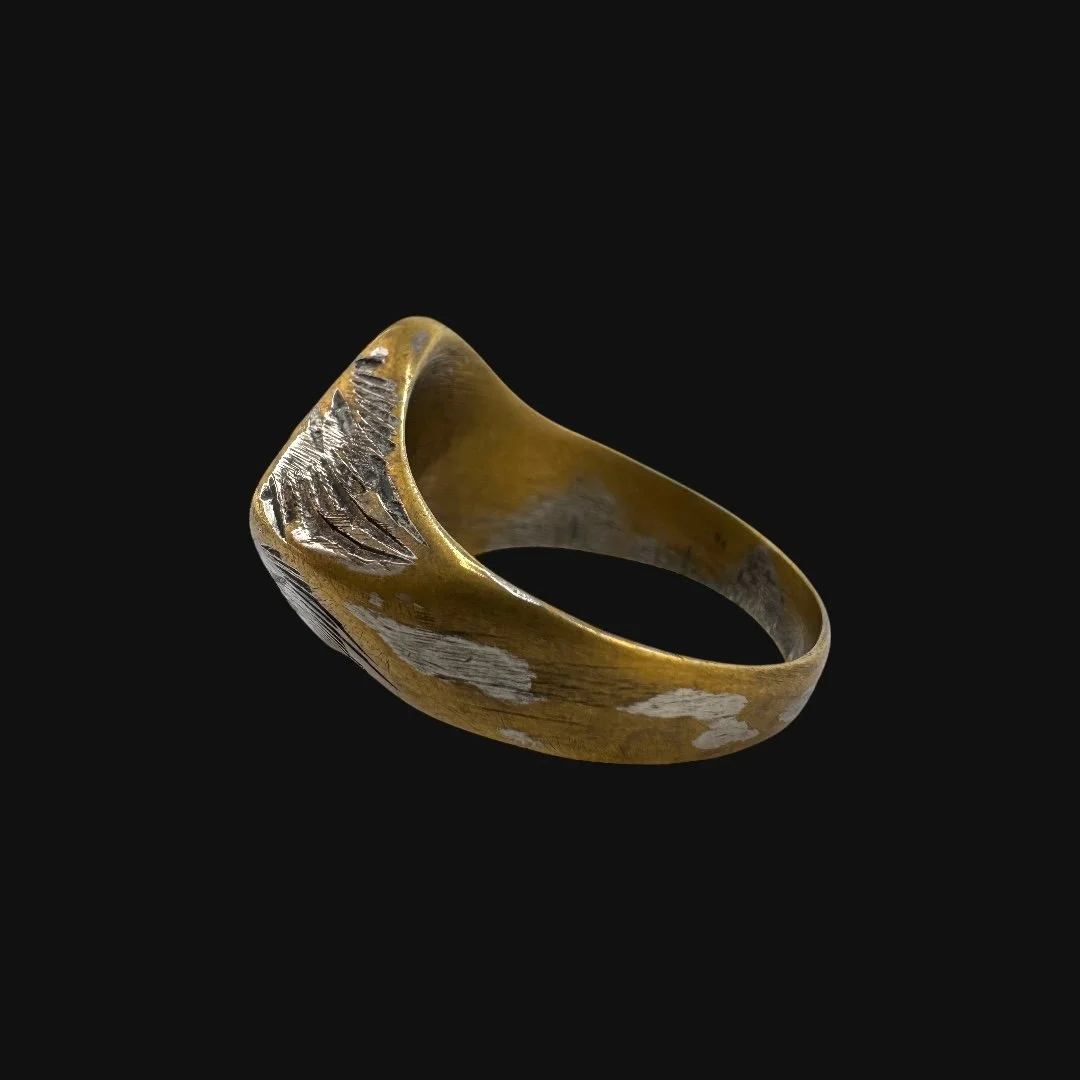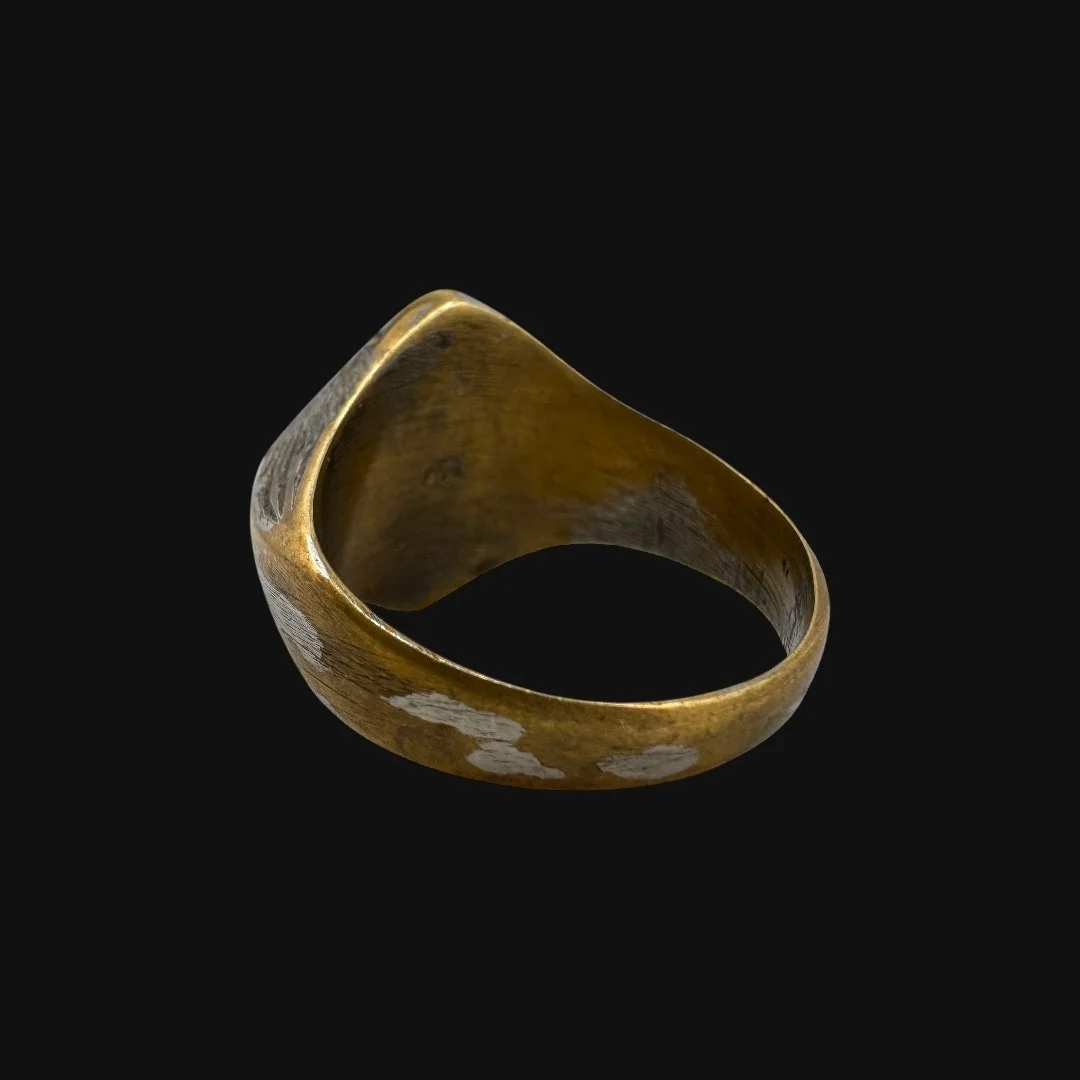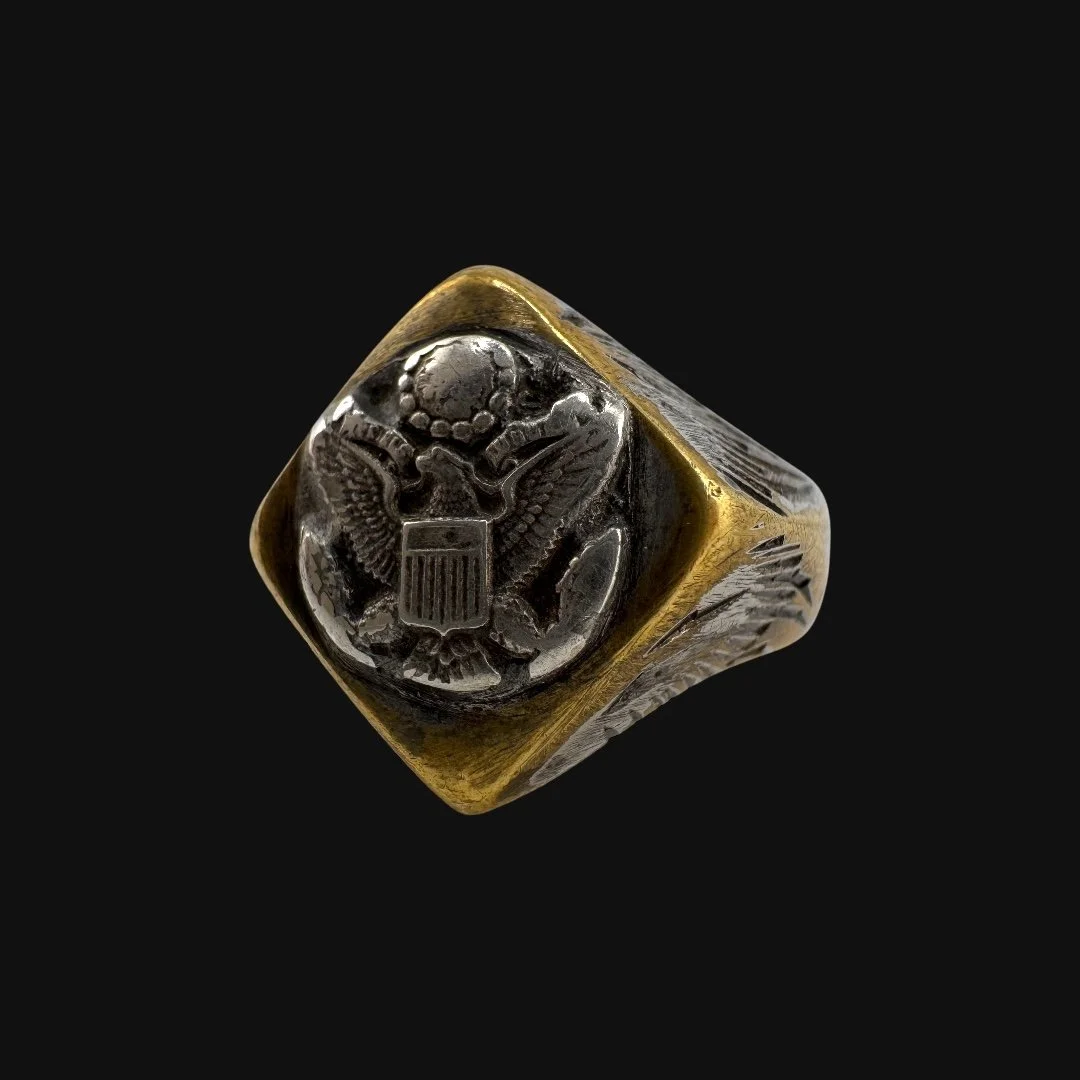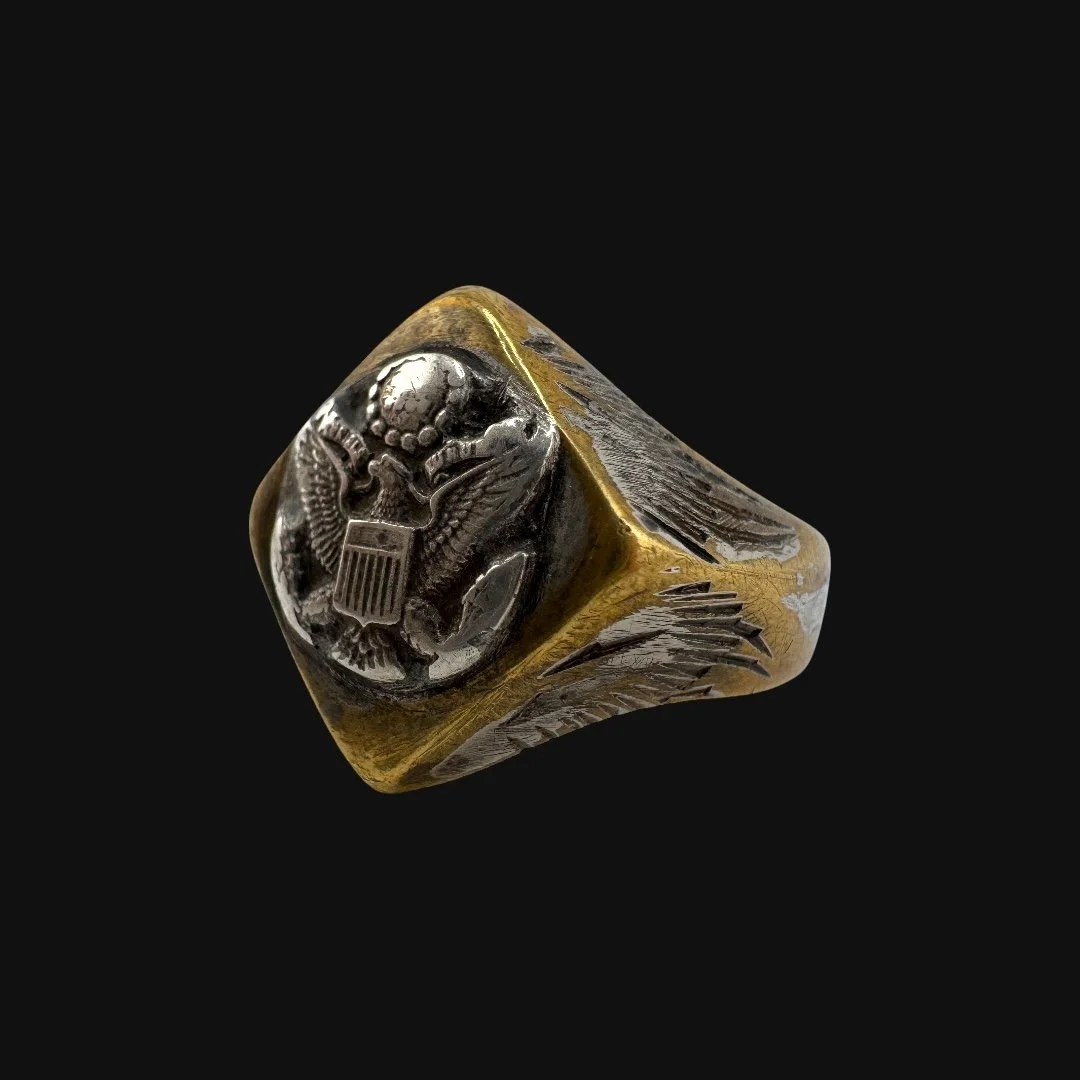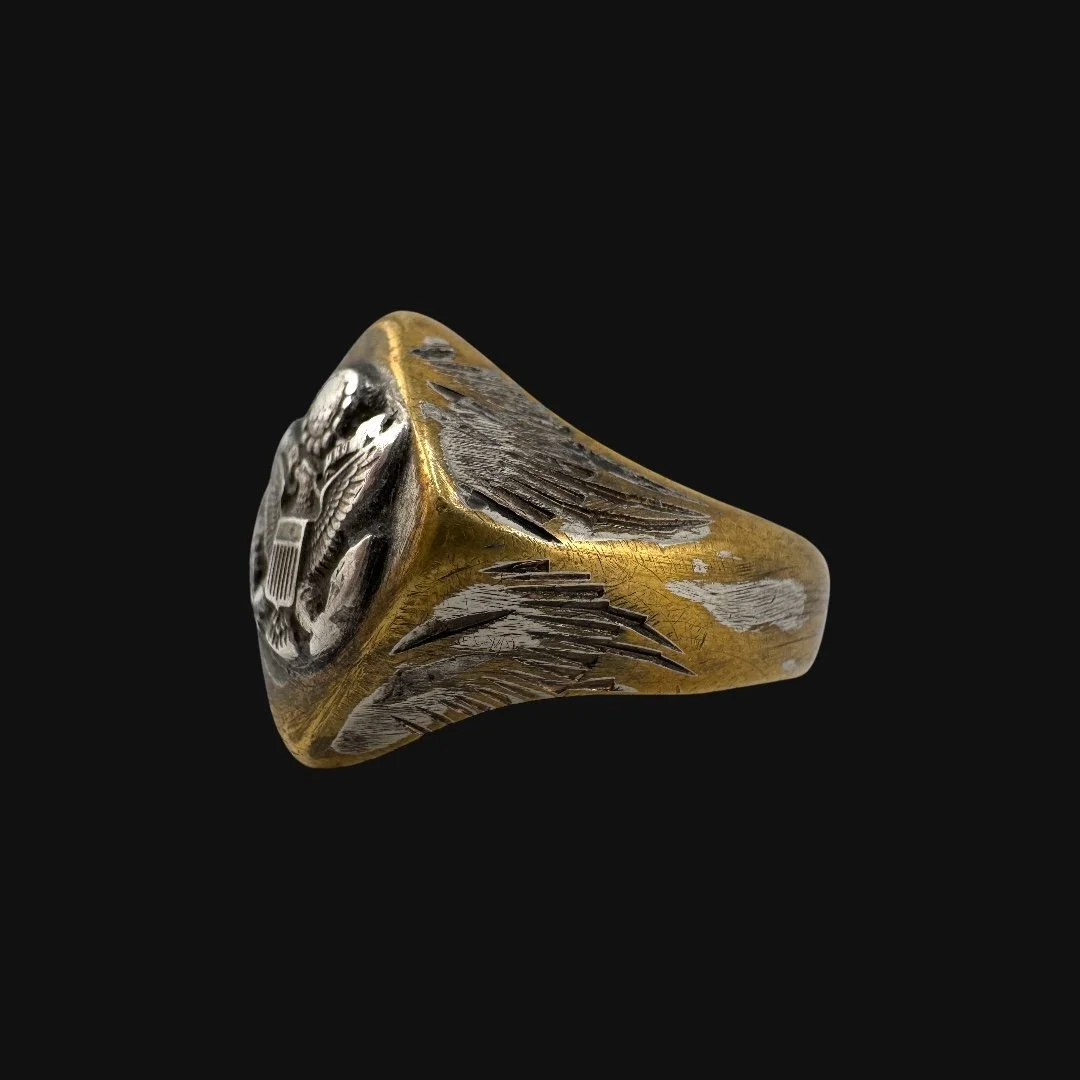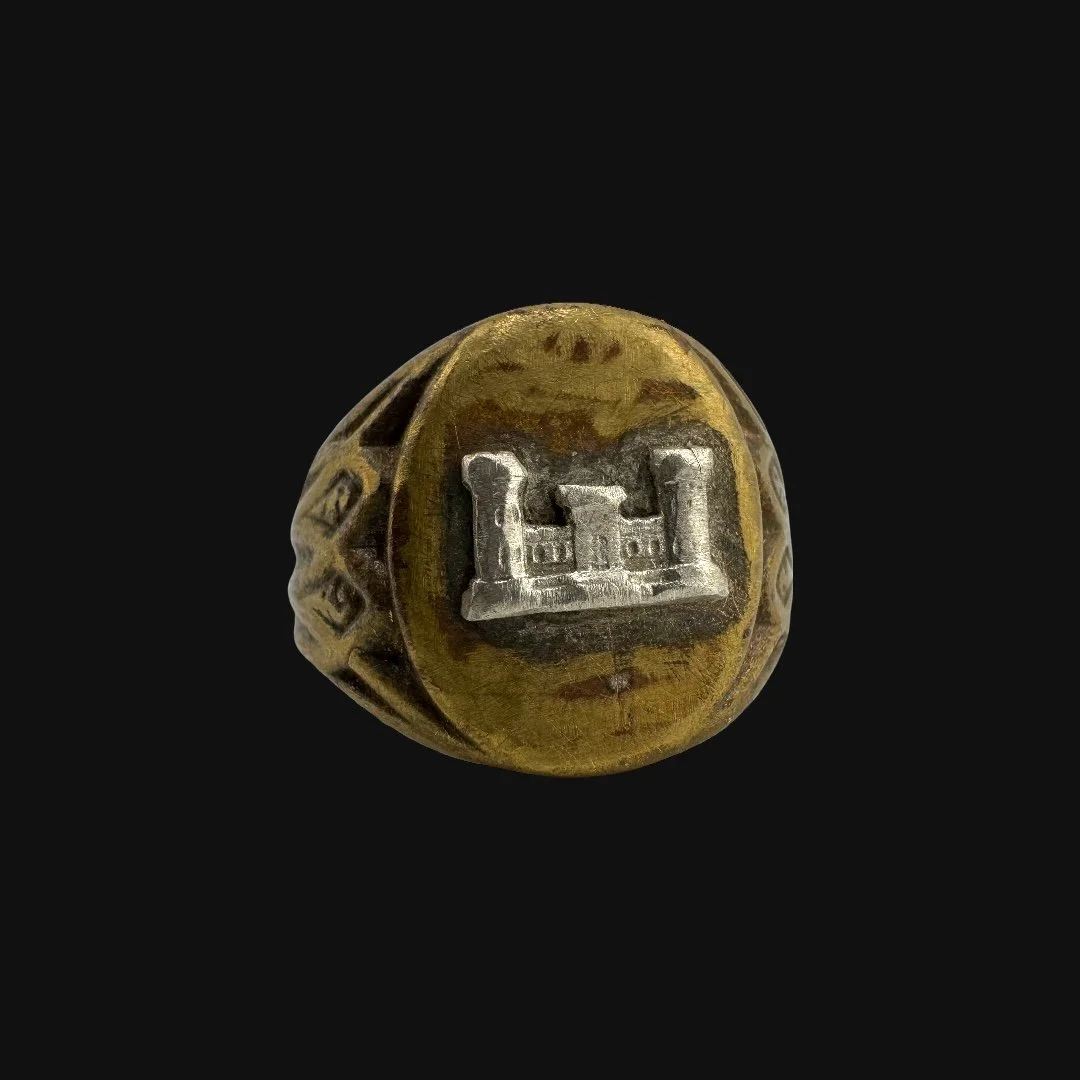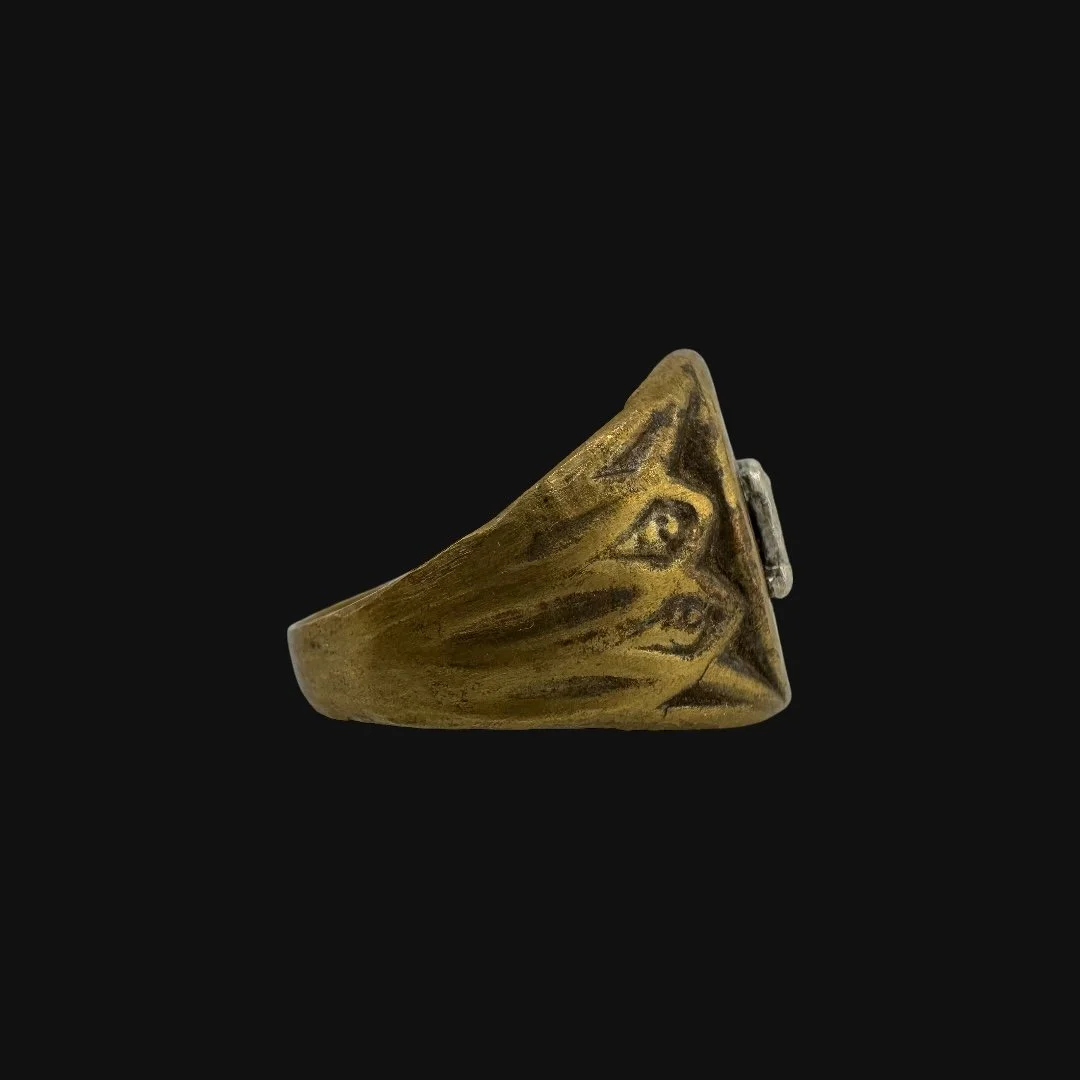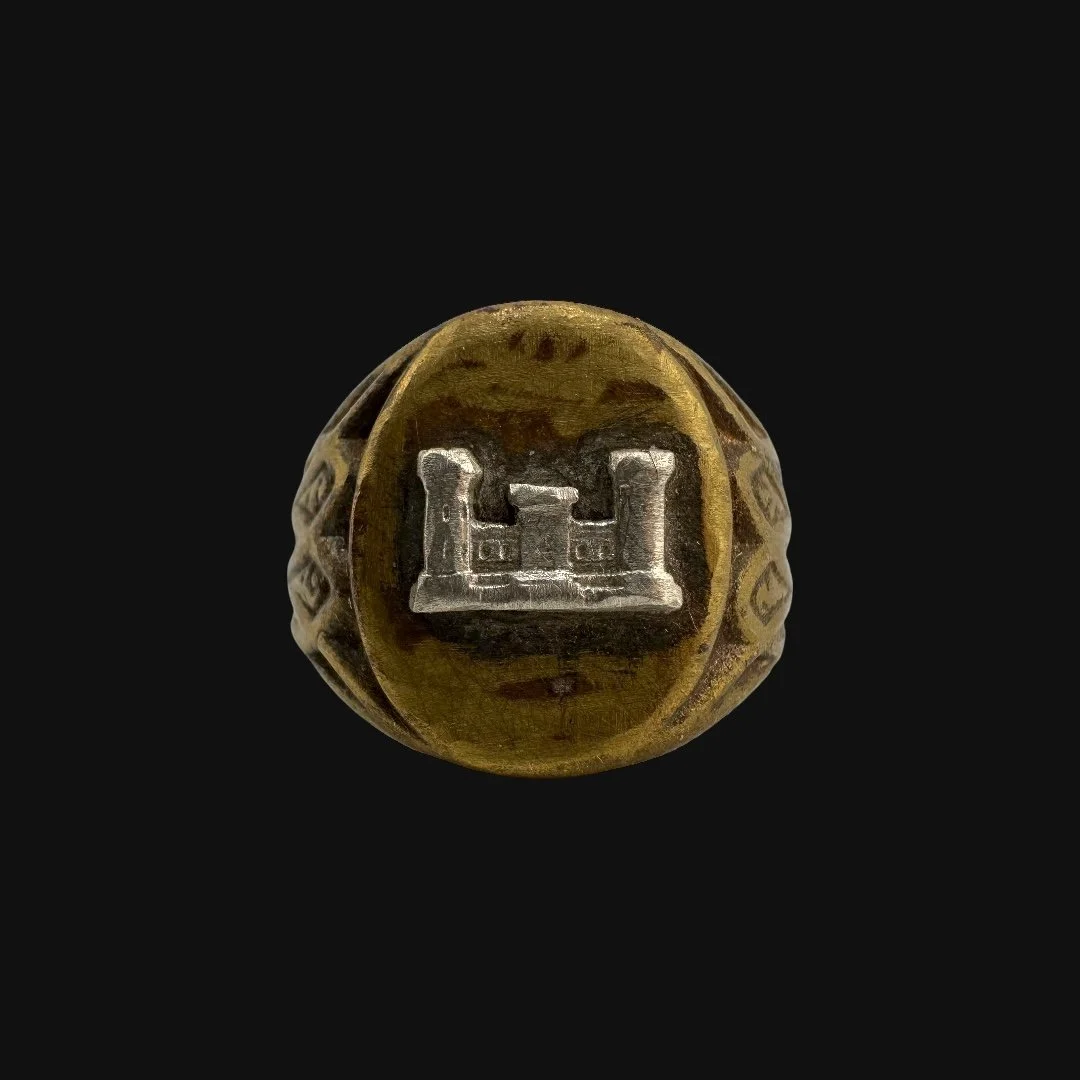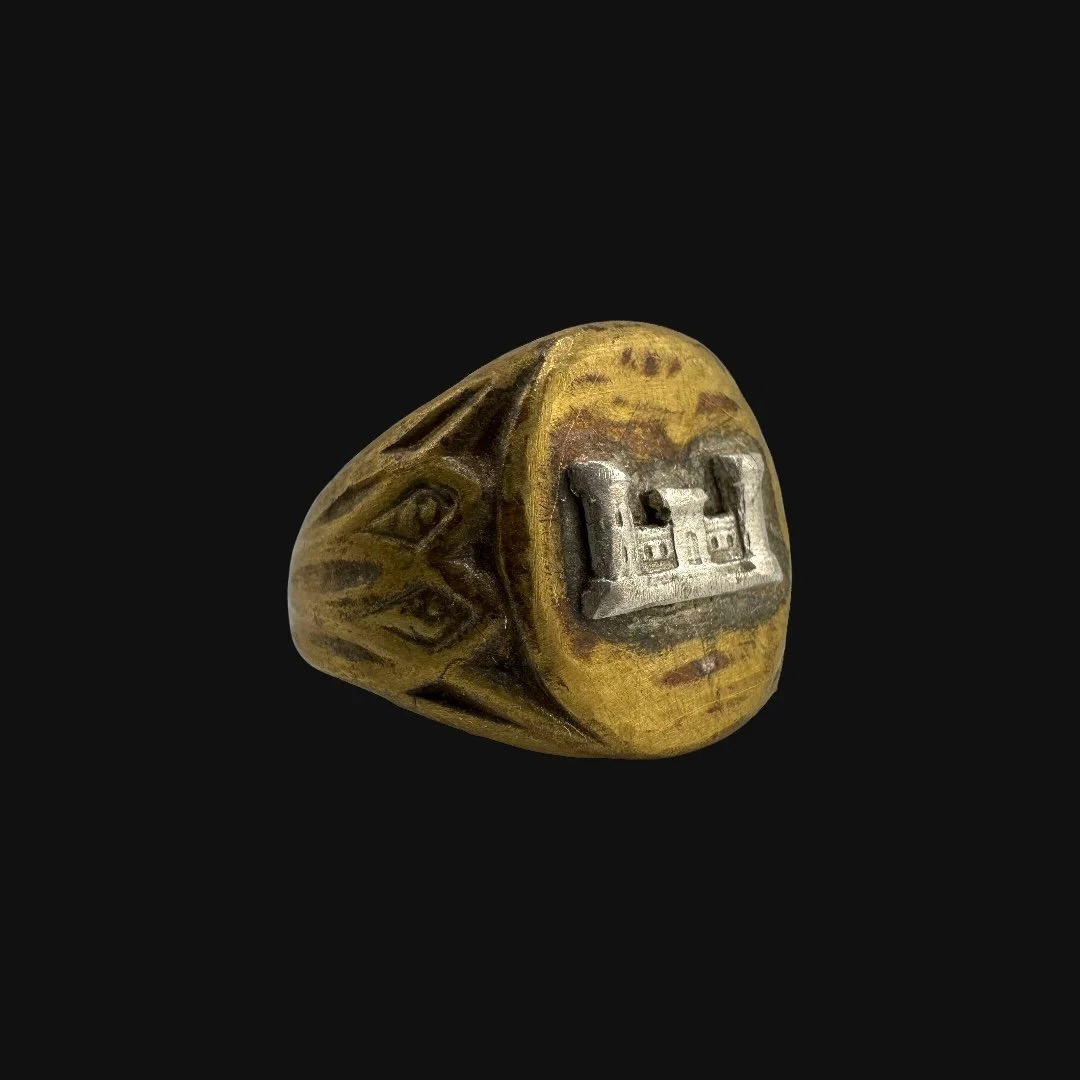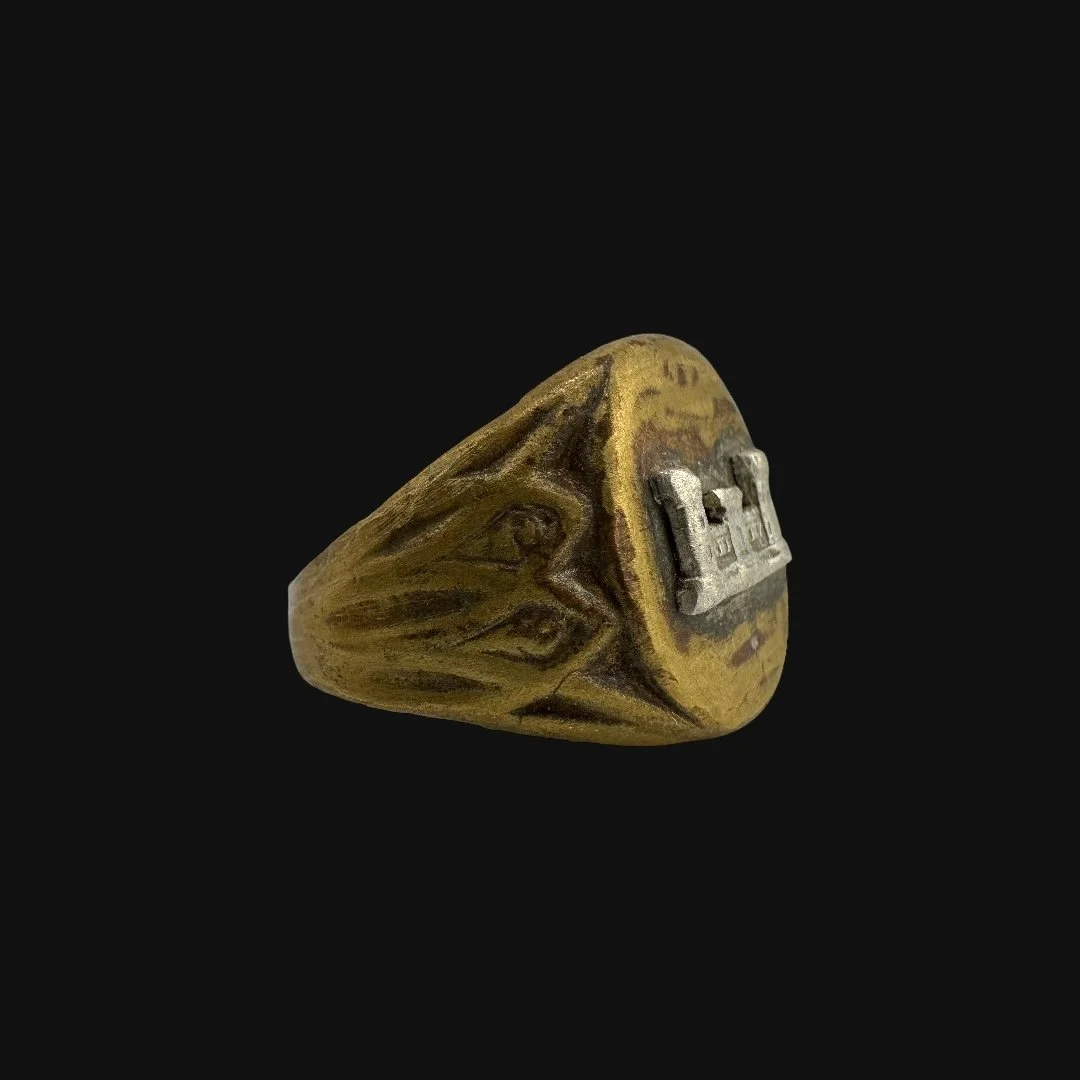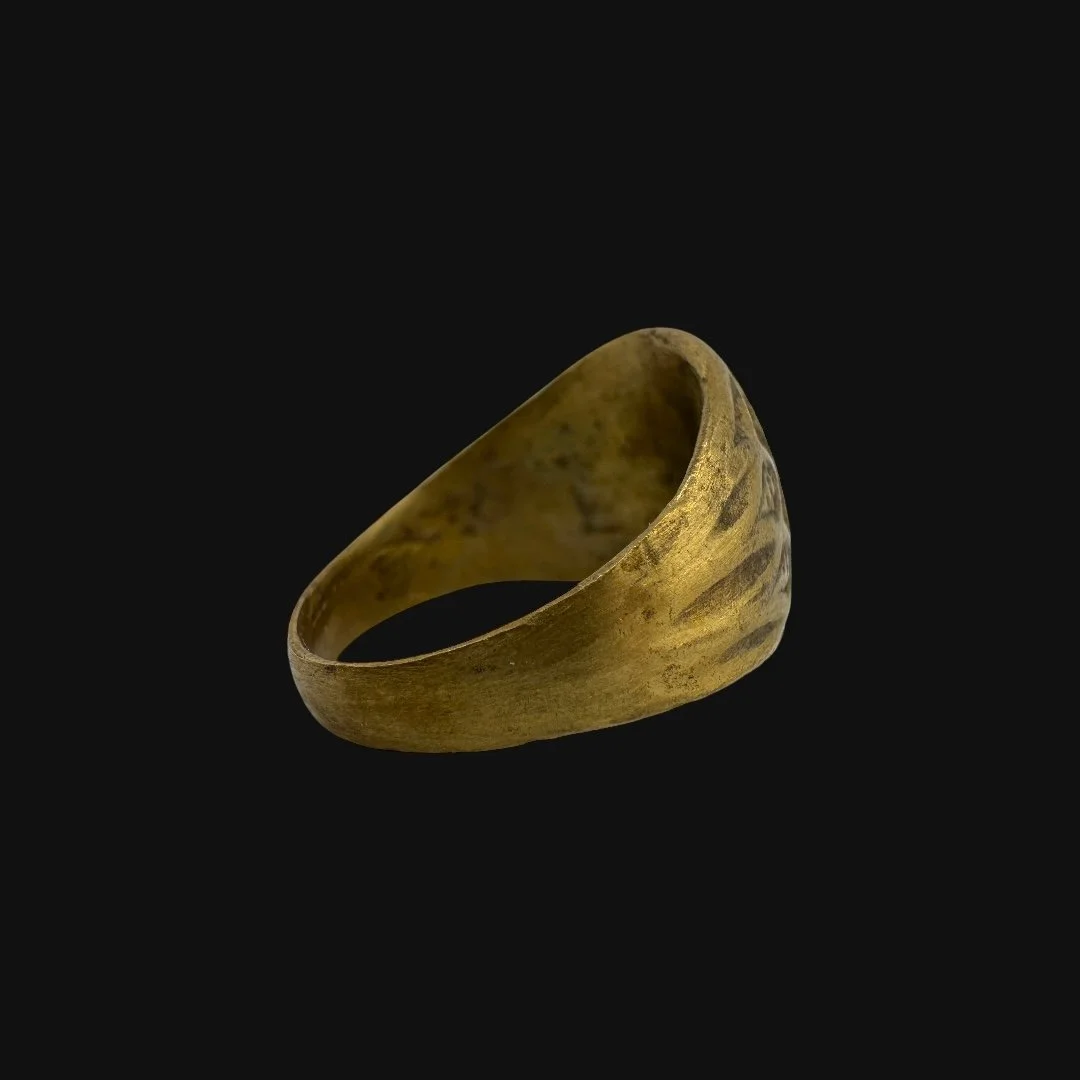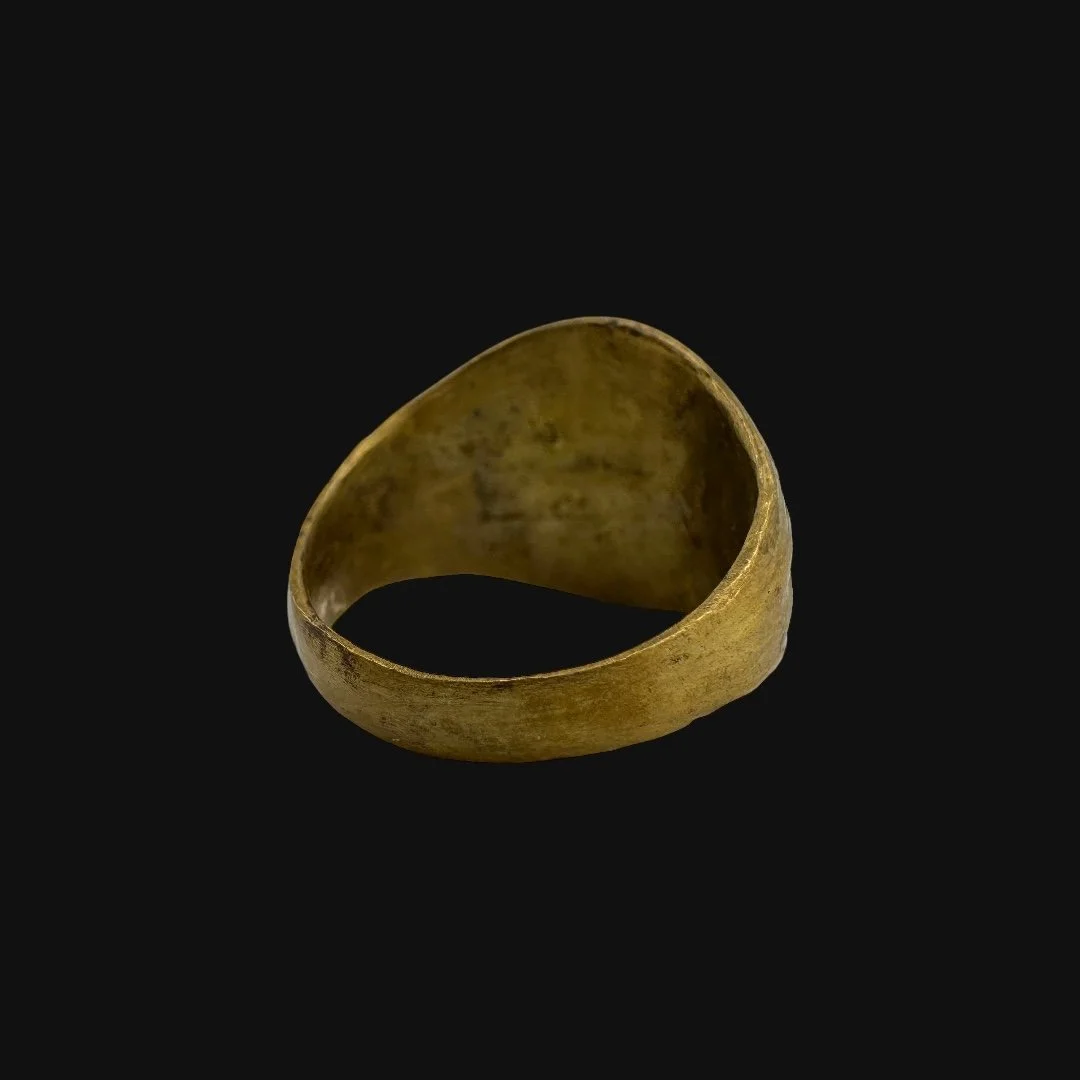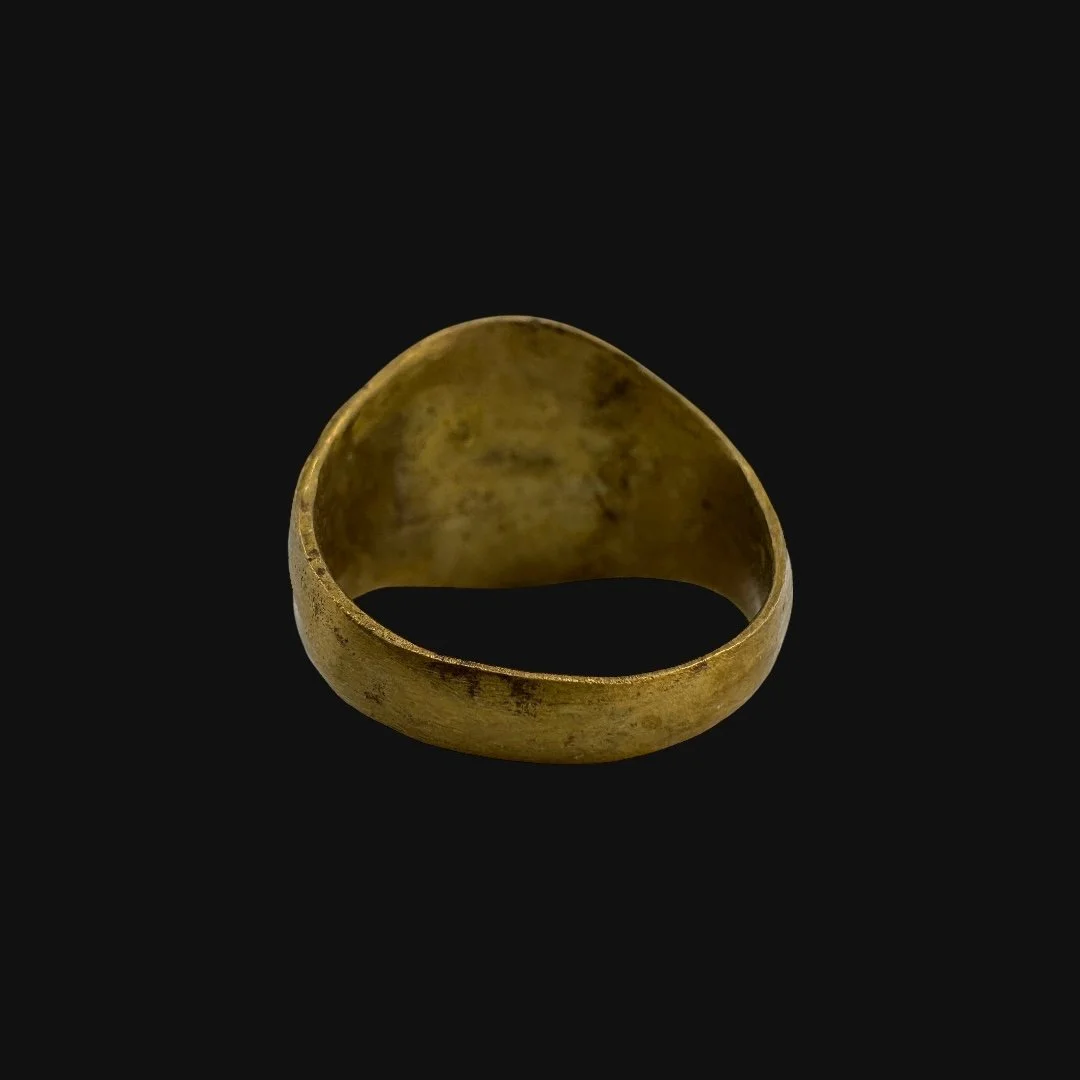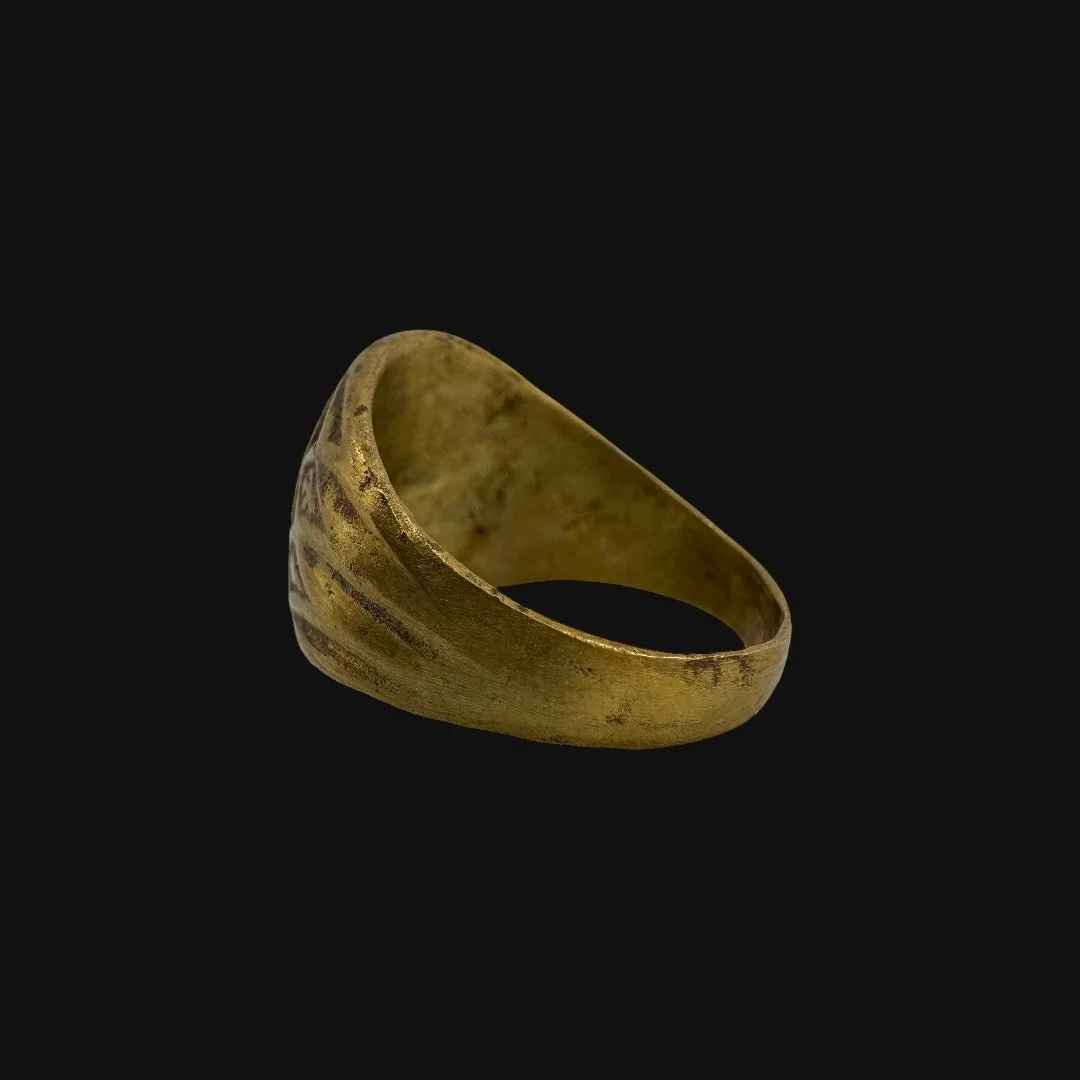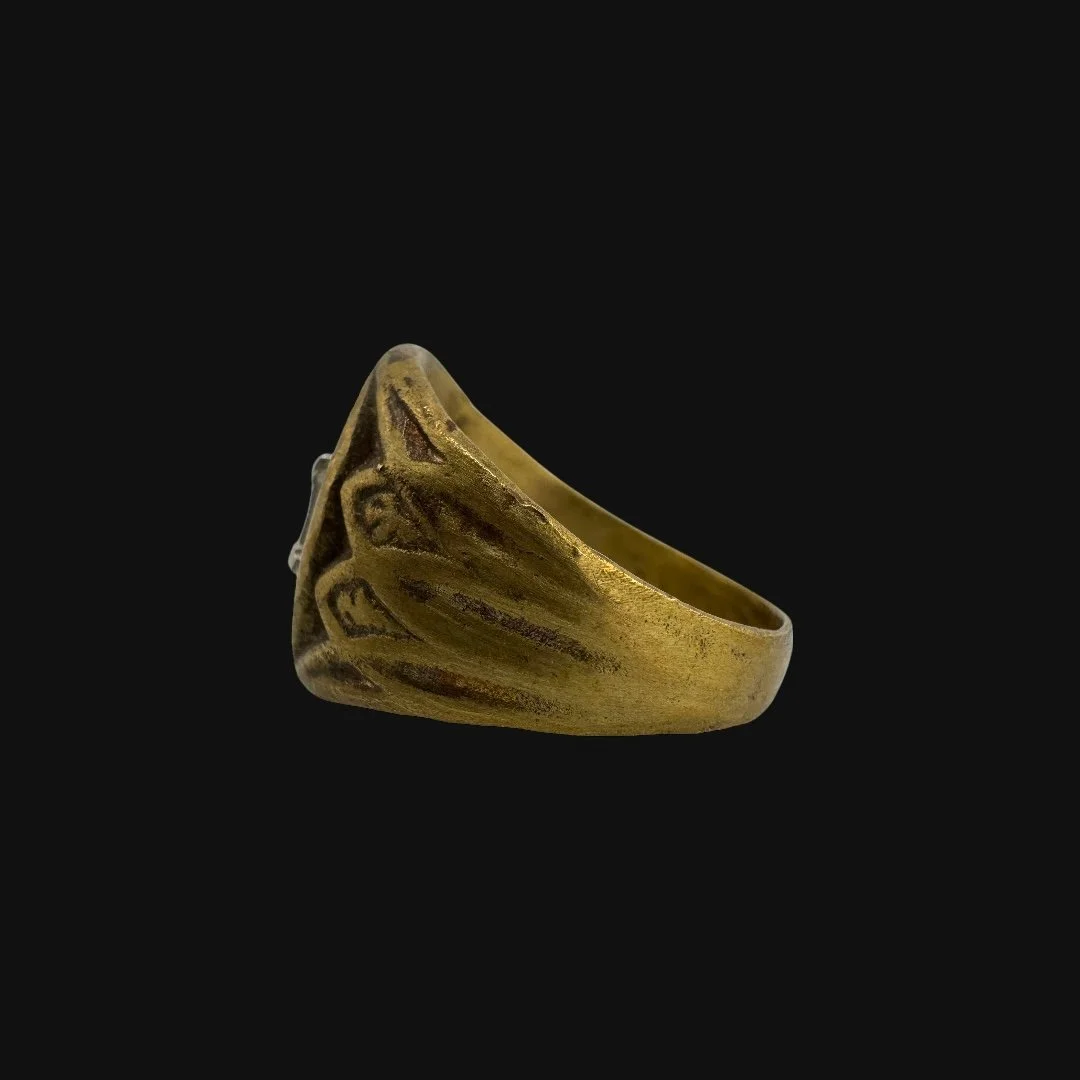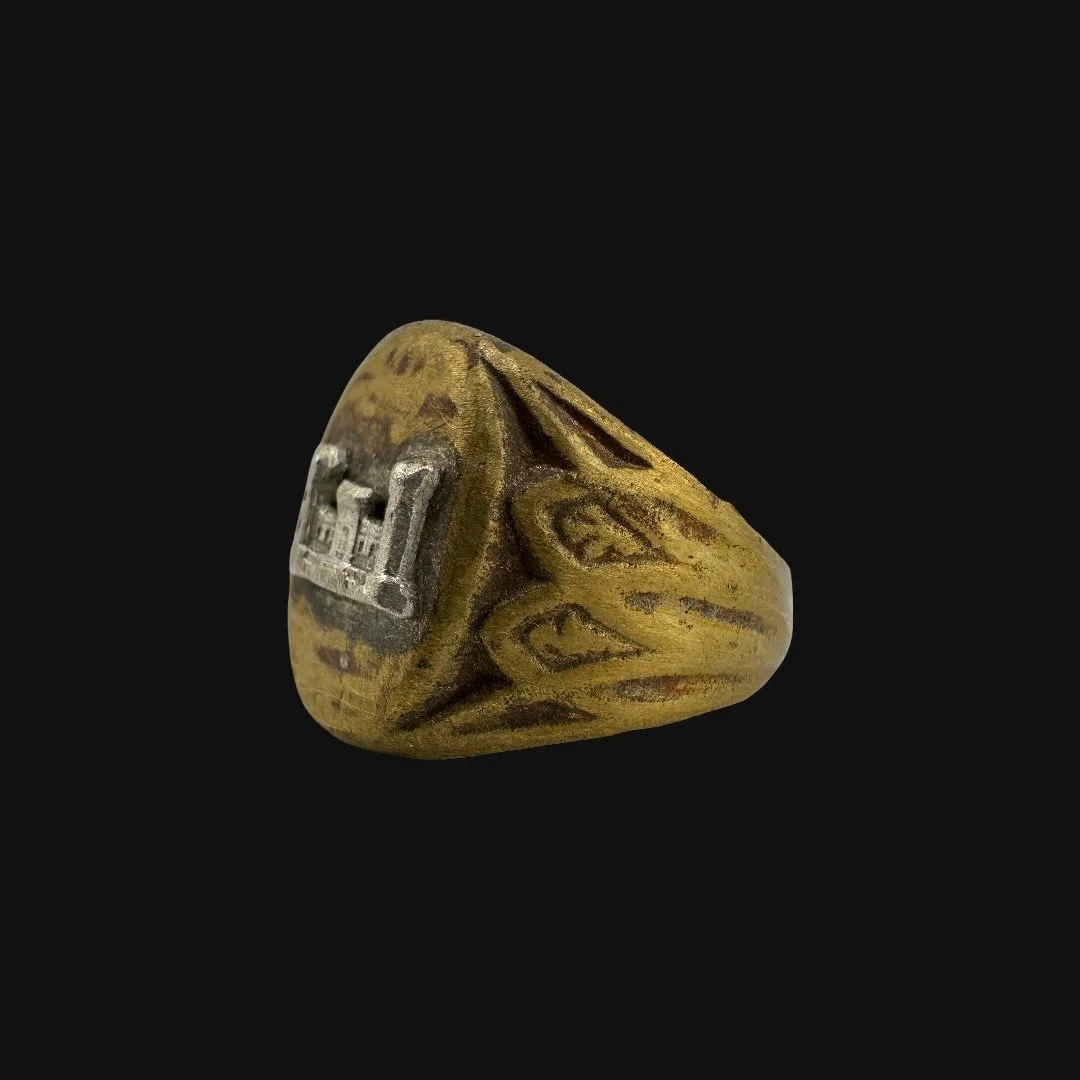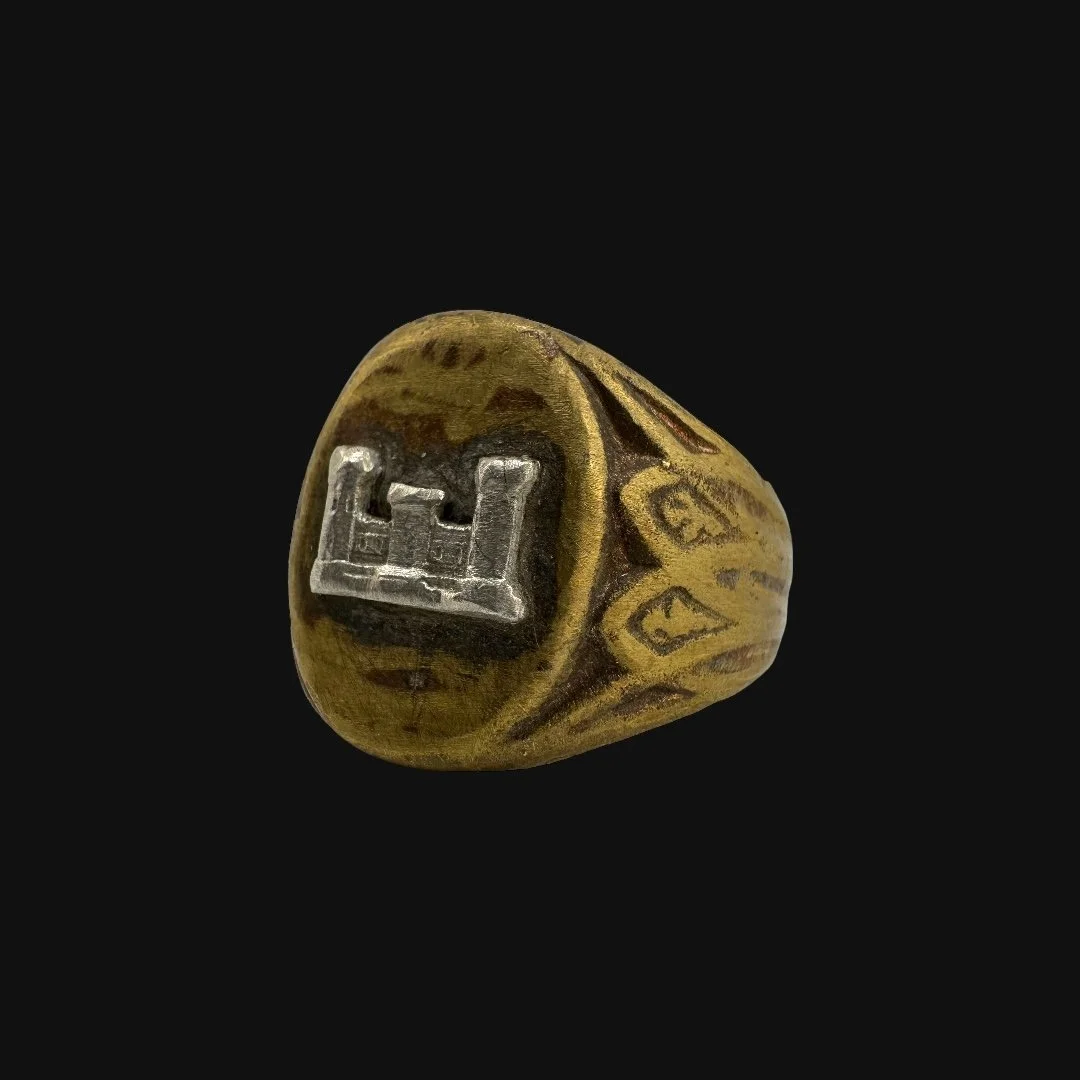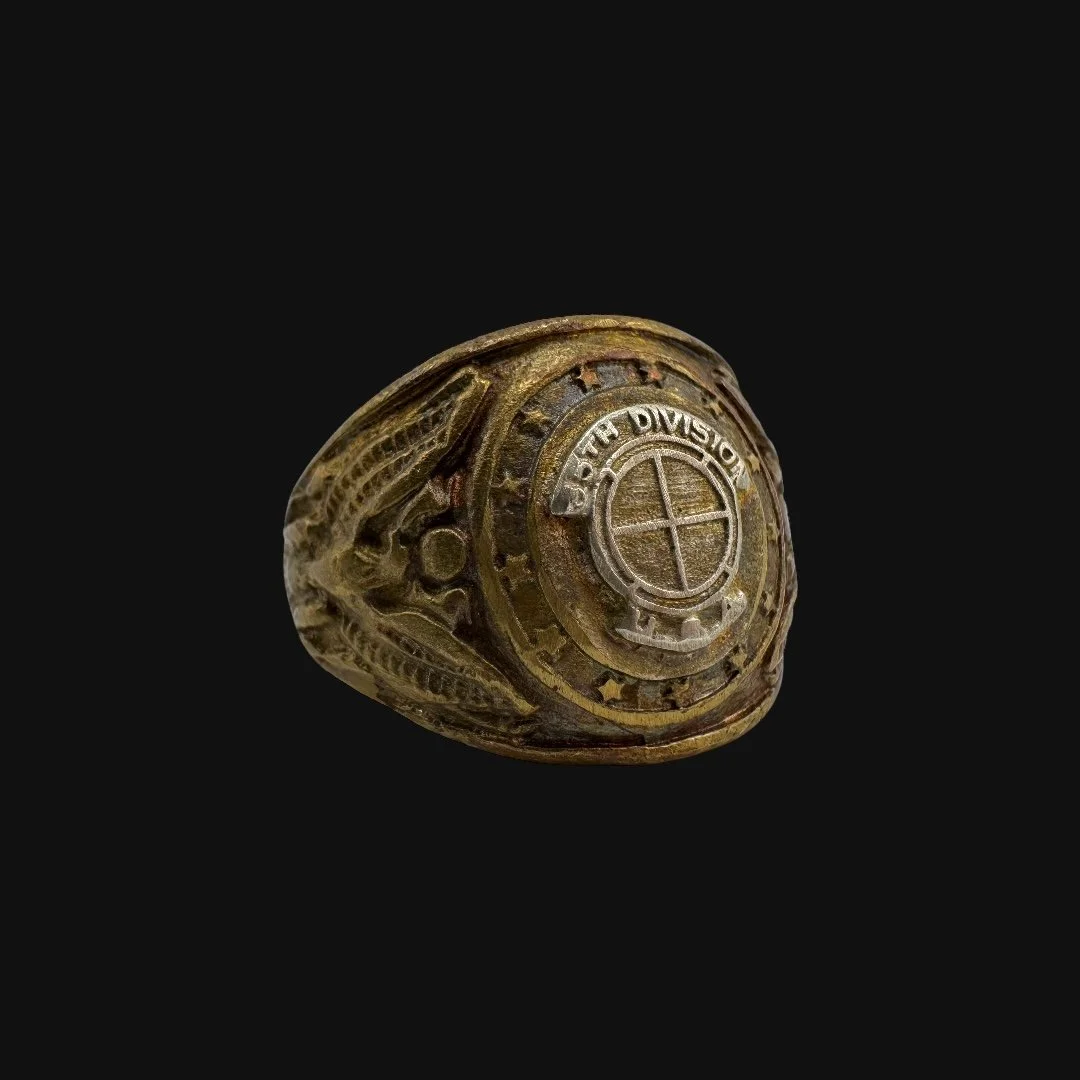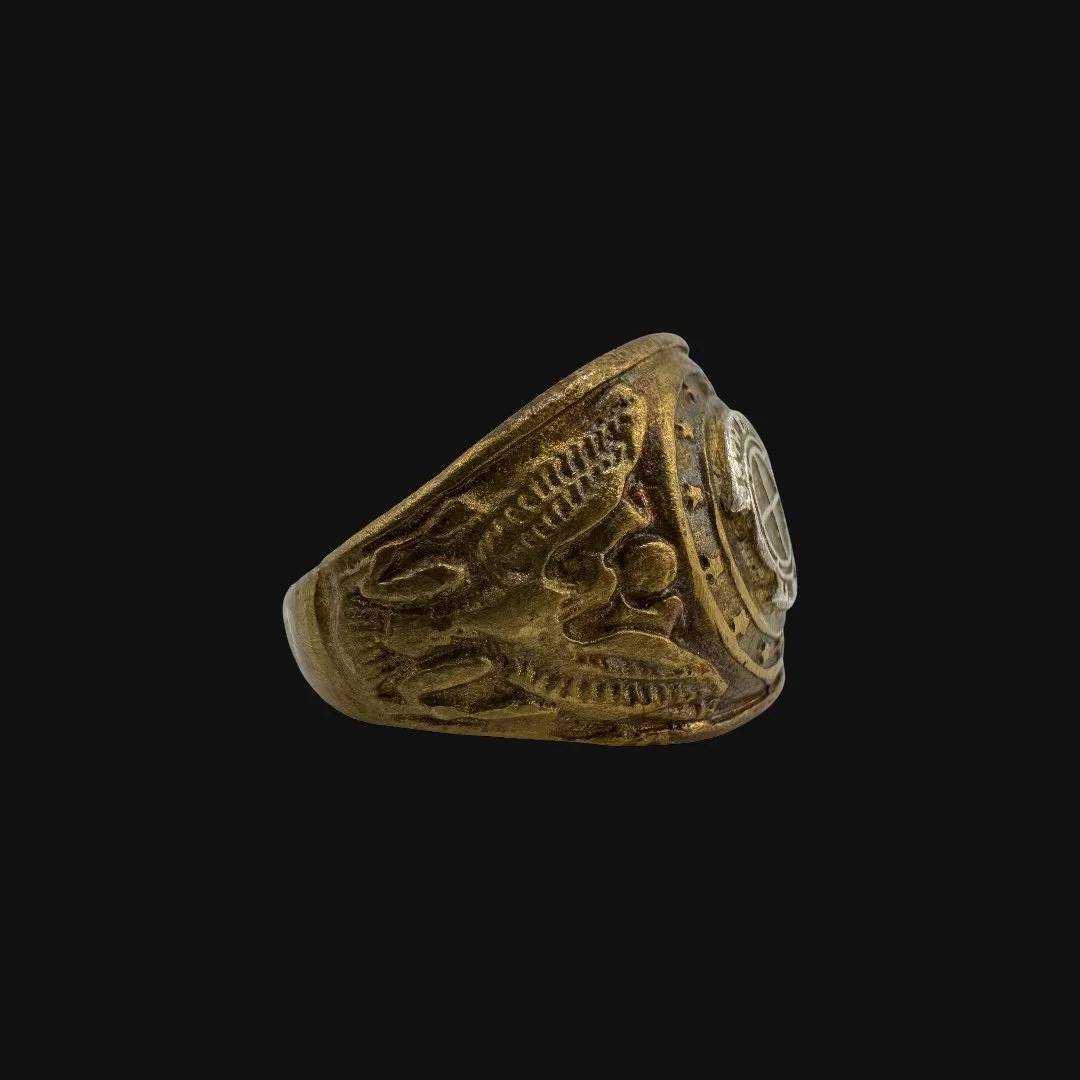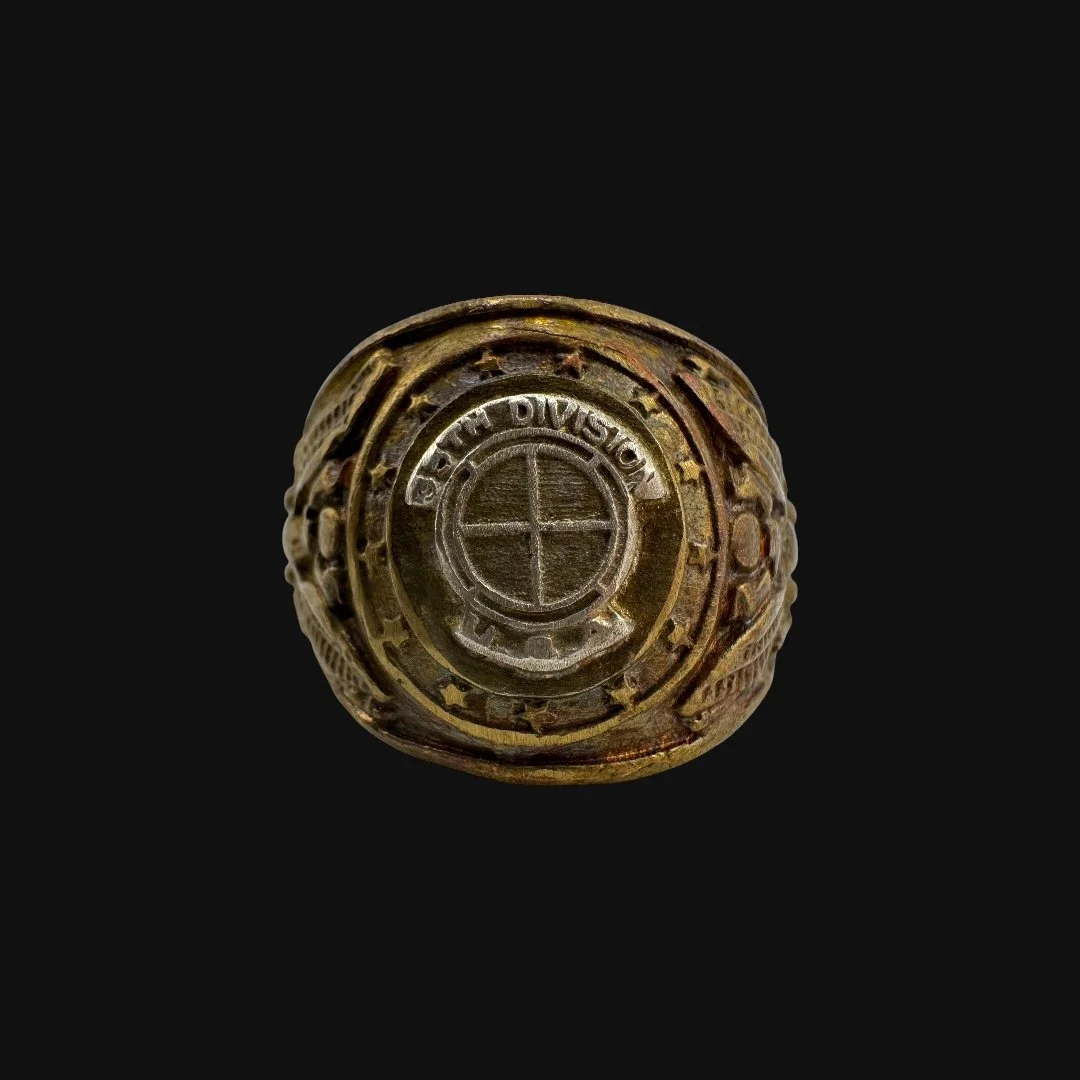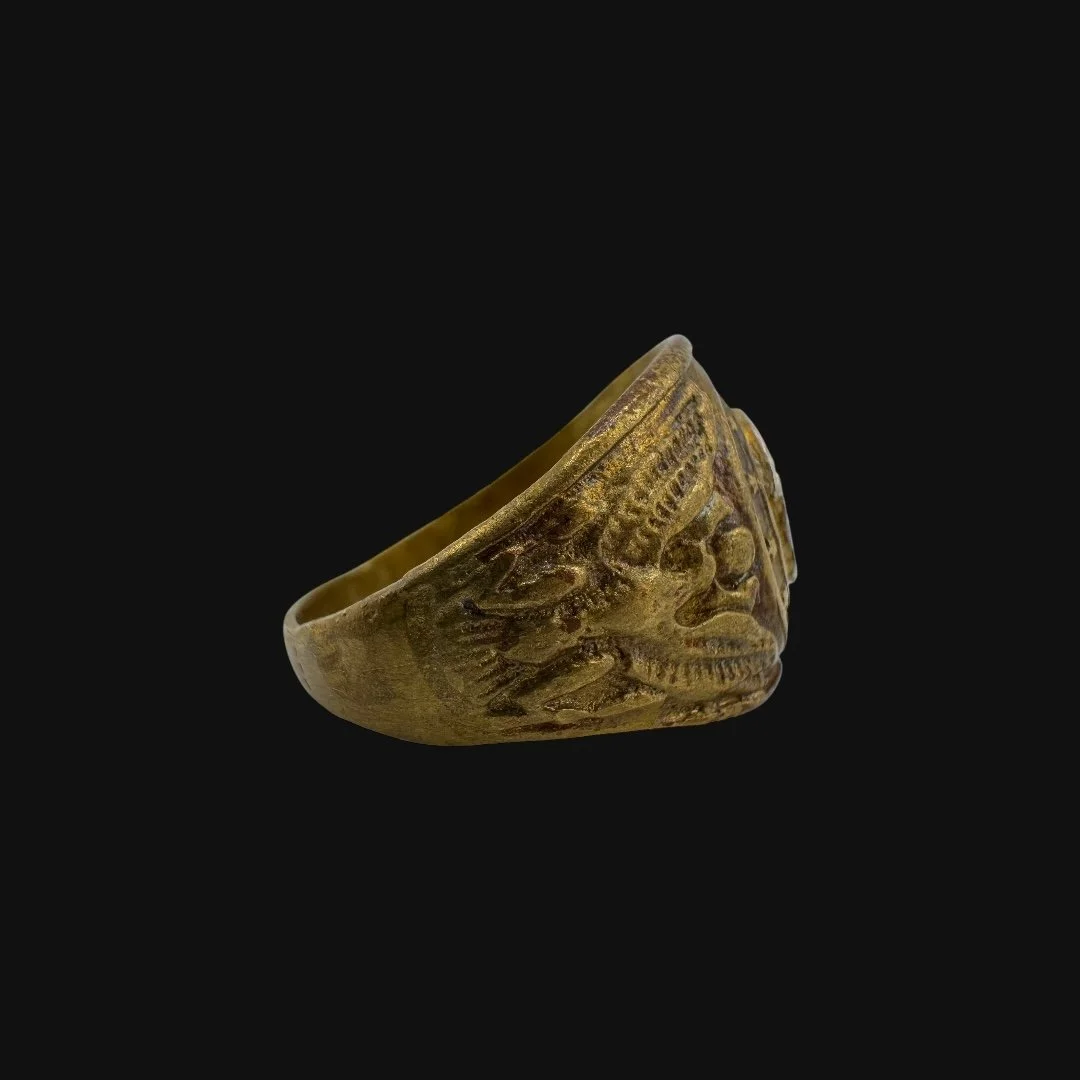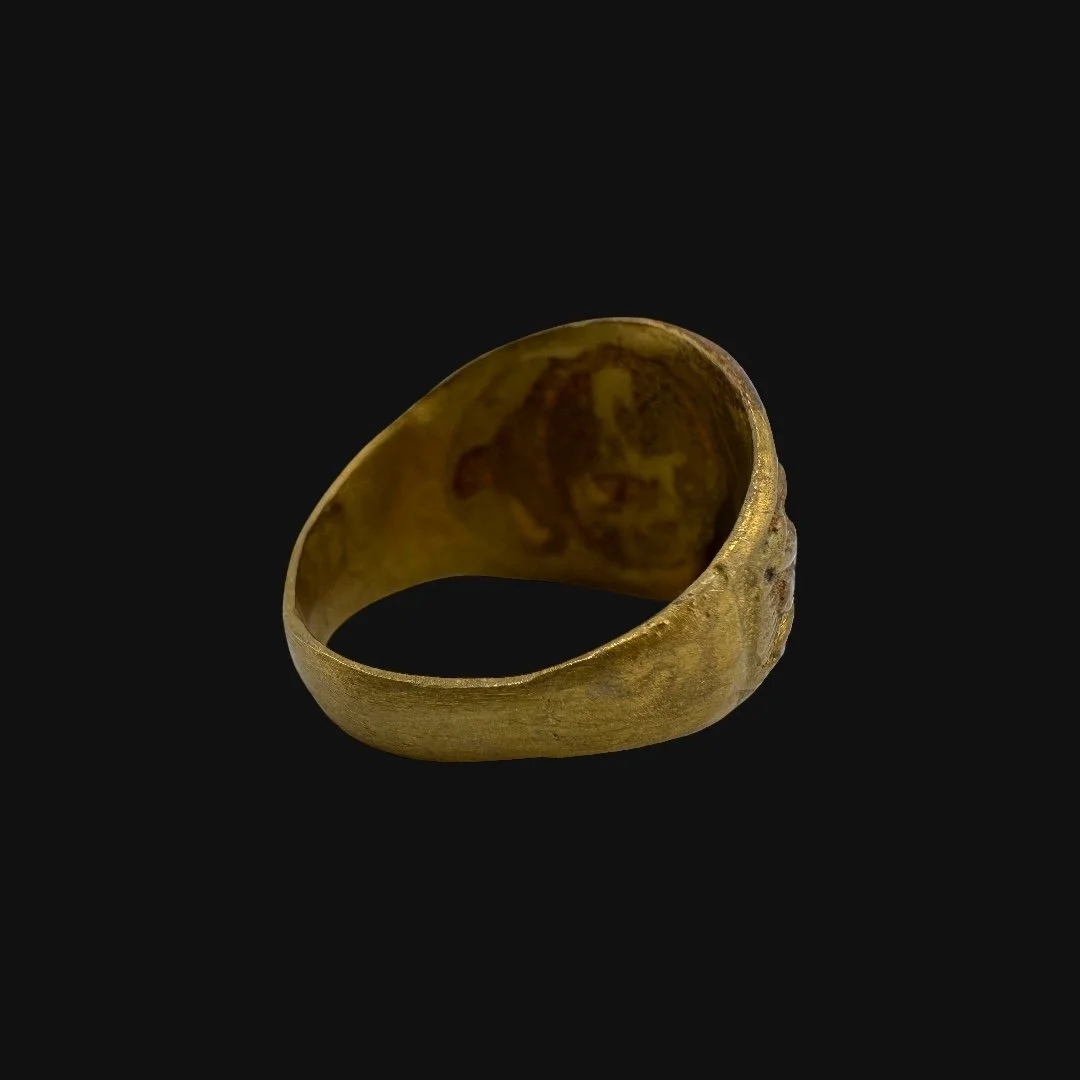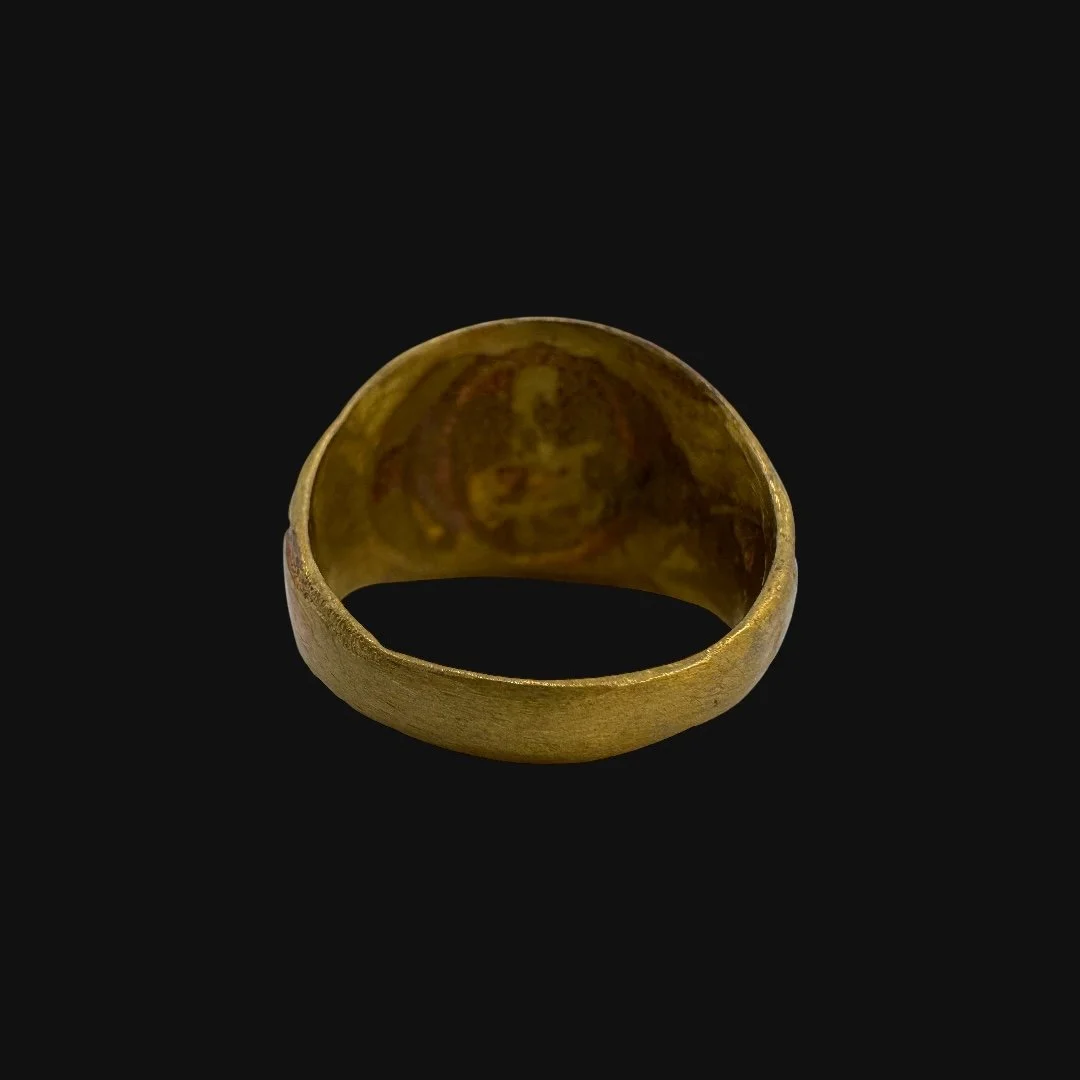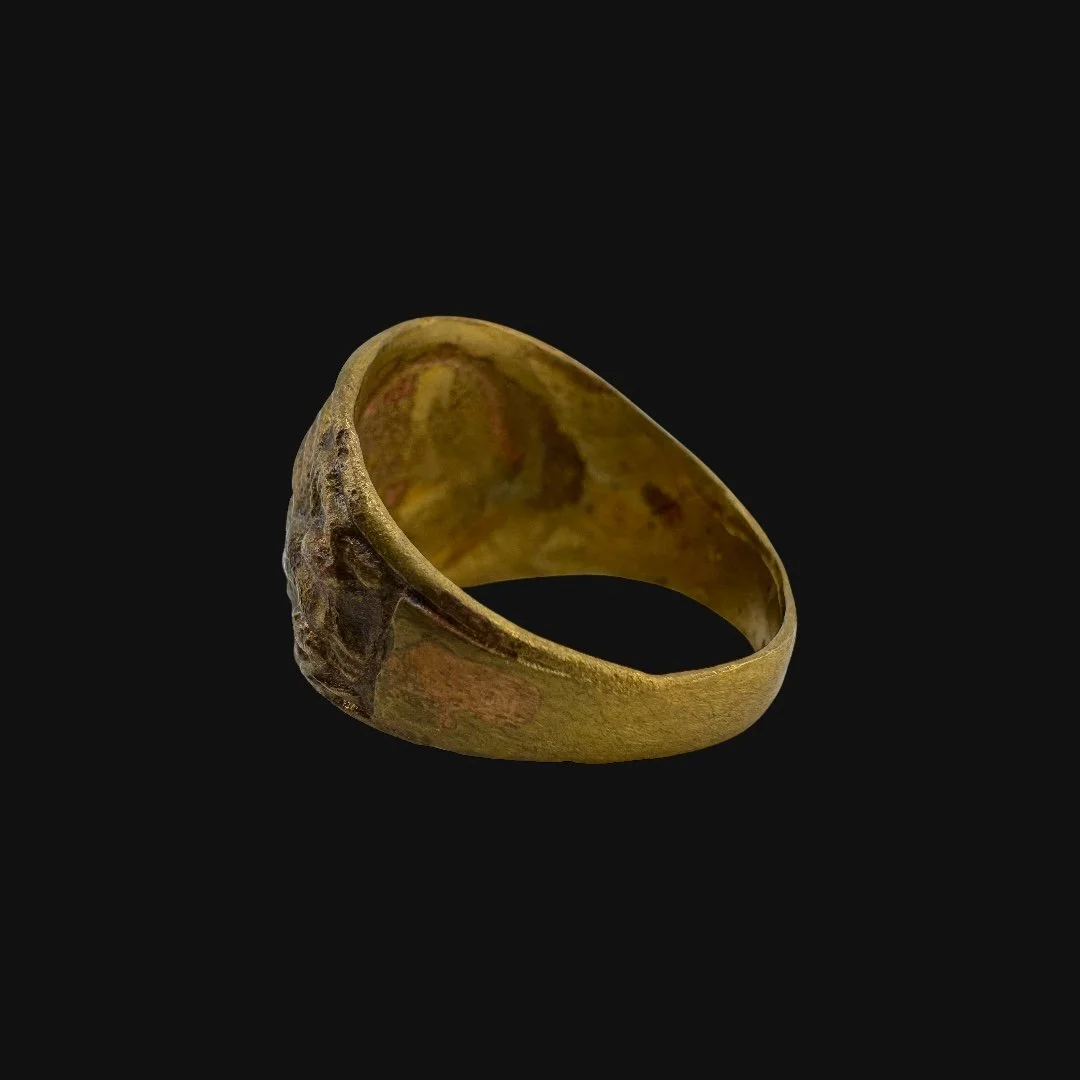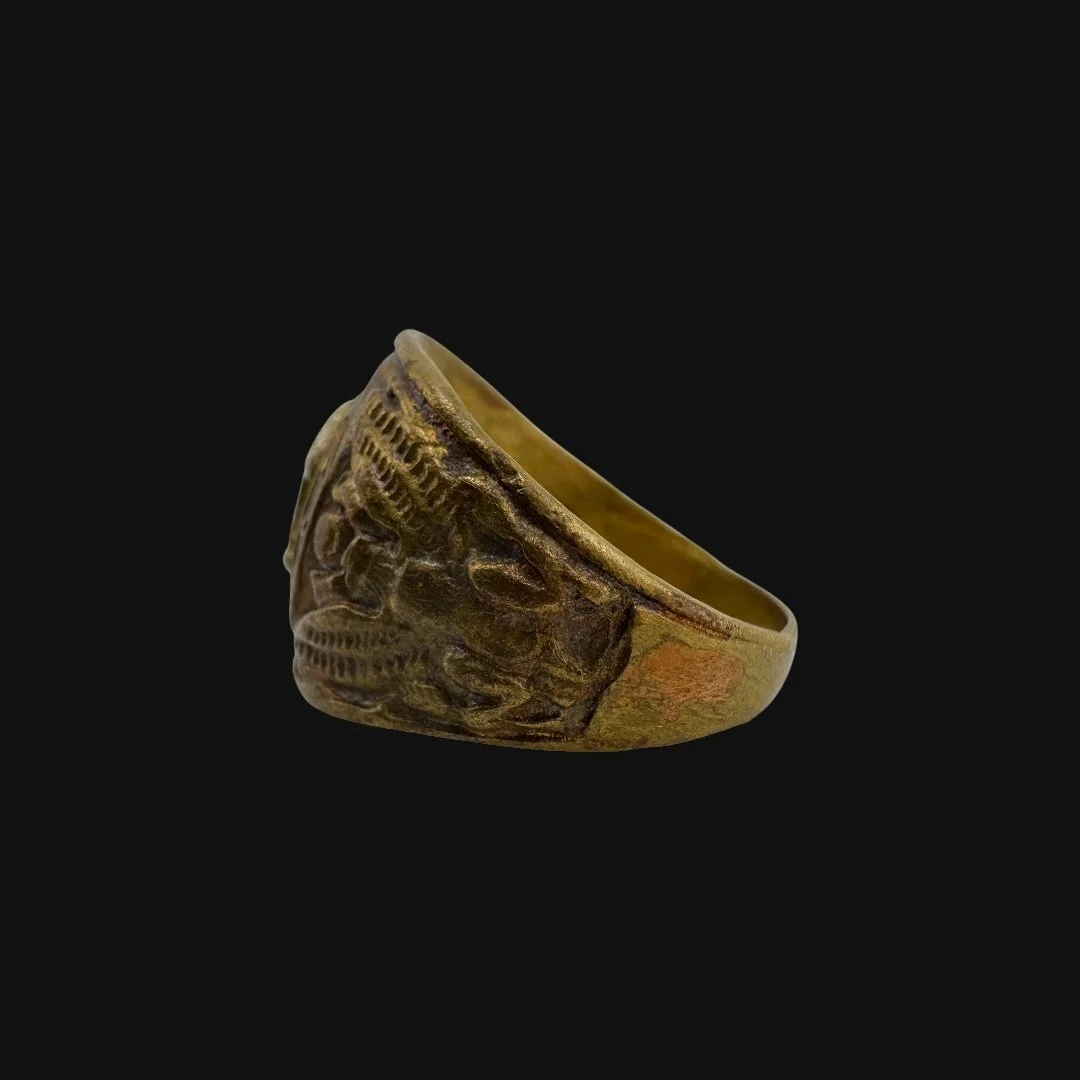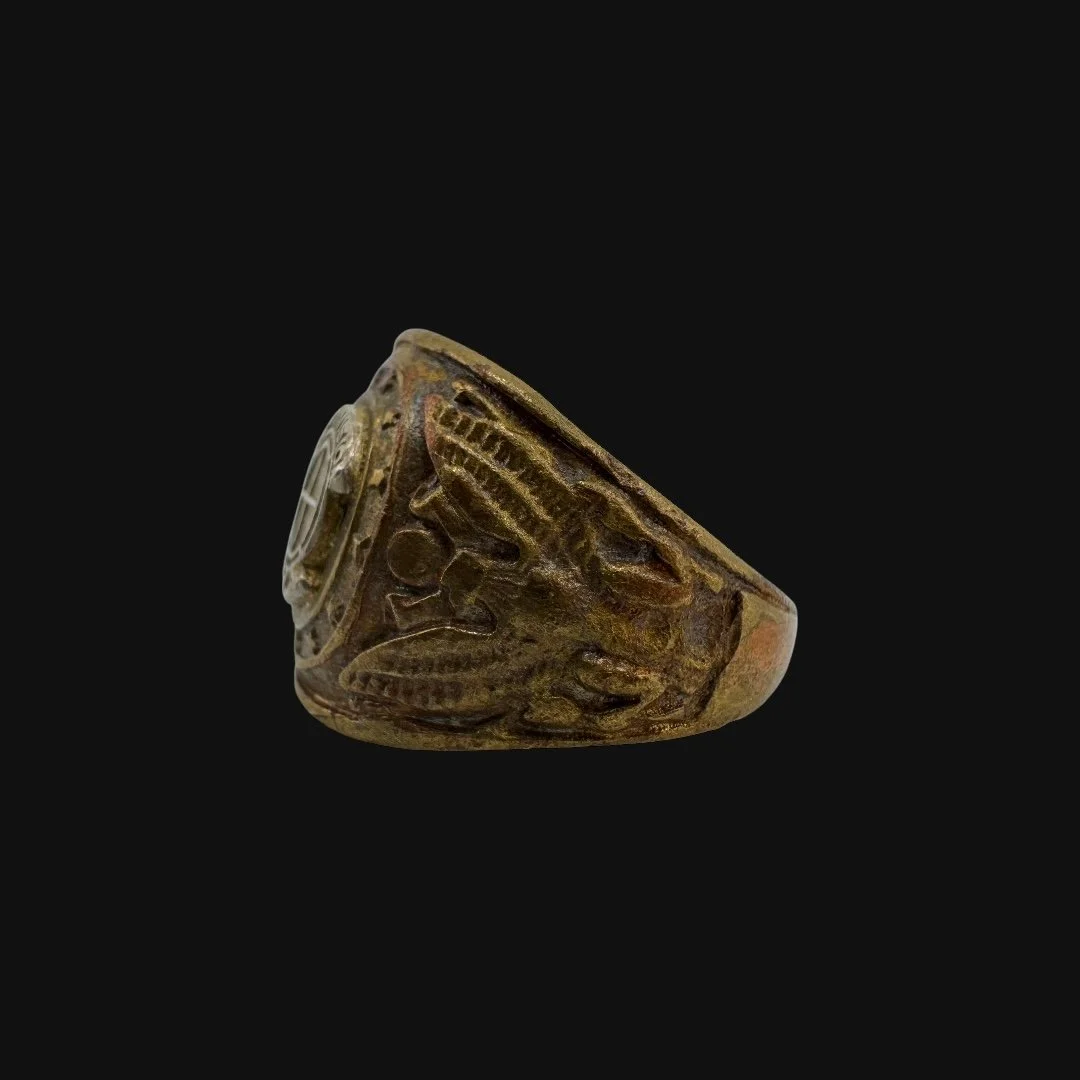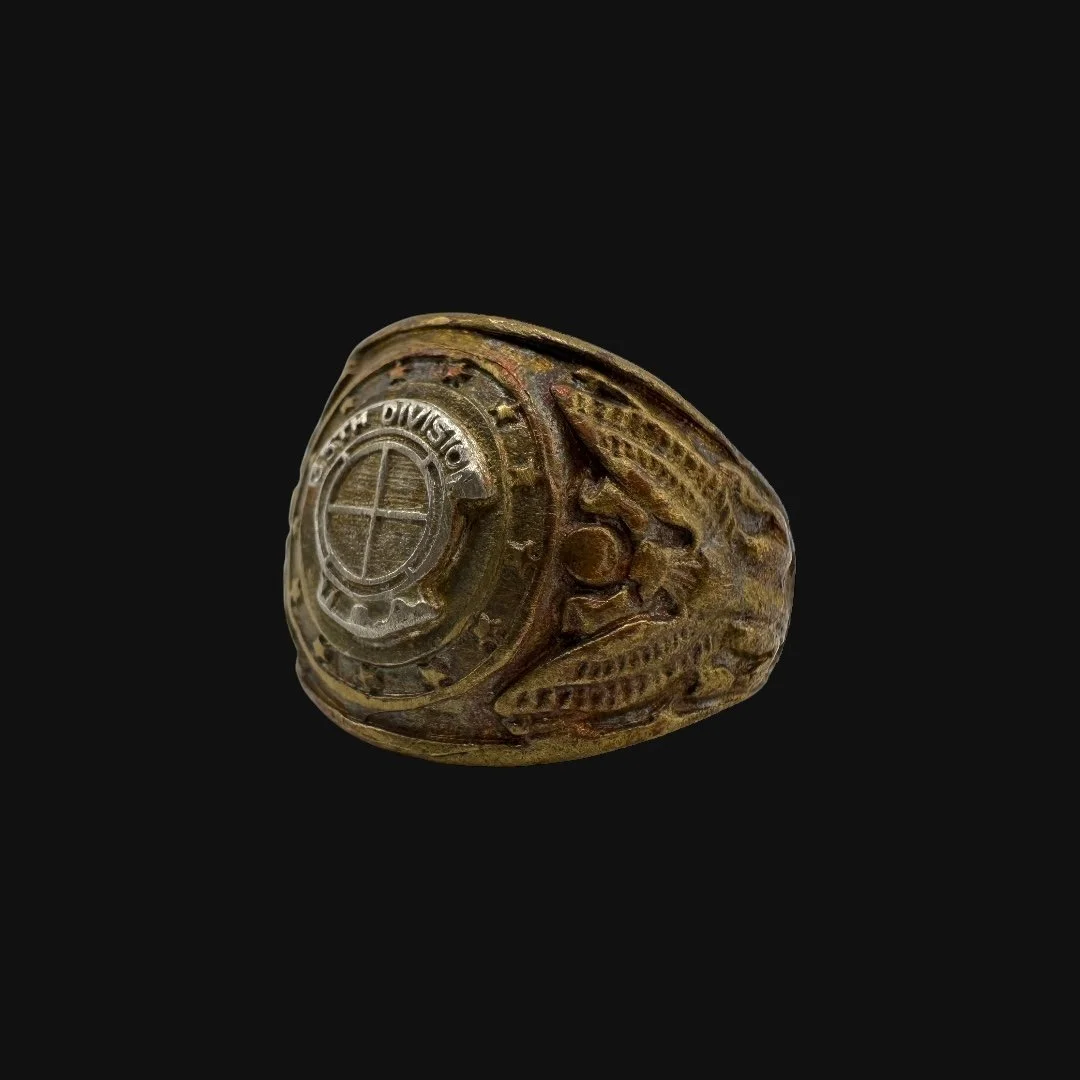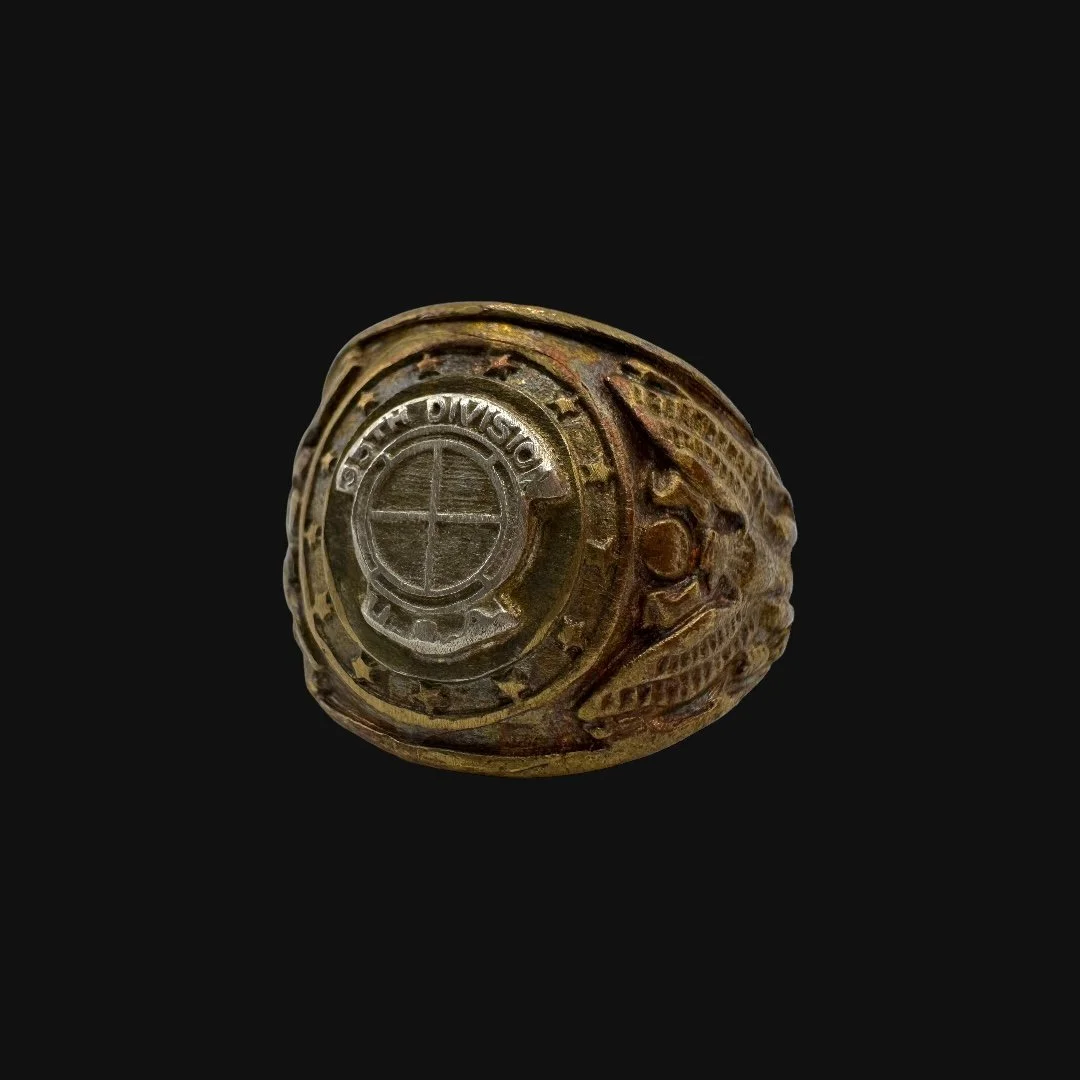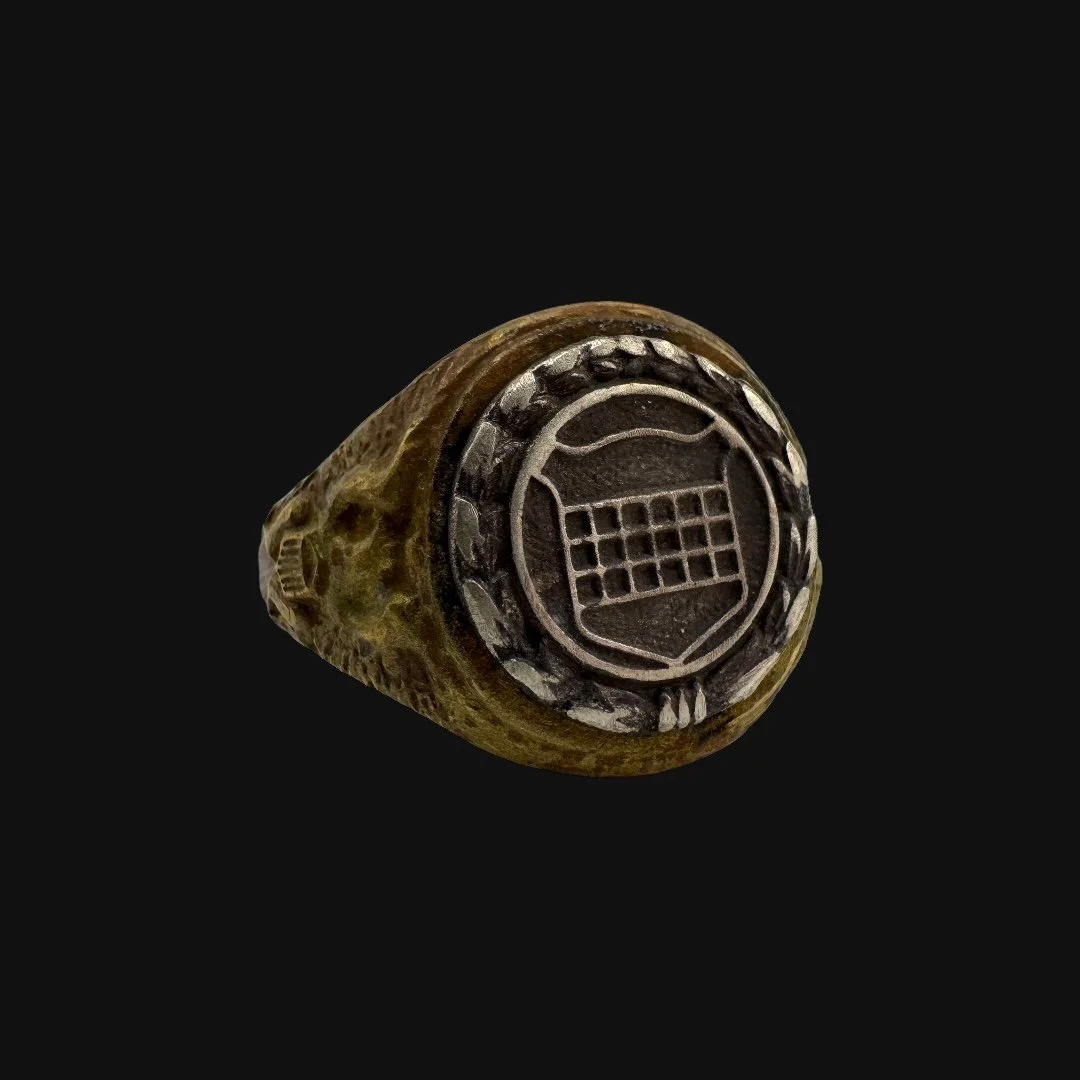 Image 1 of 15
Image 1 of 15

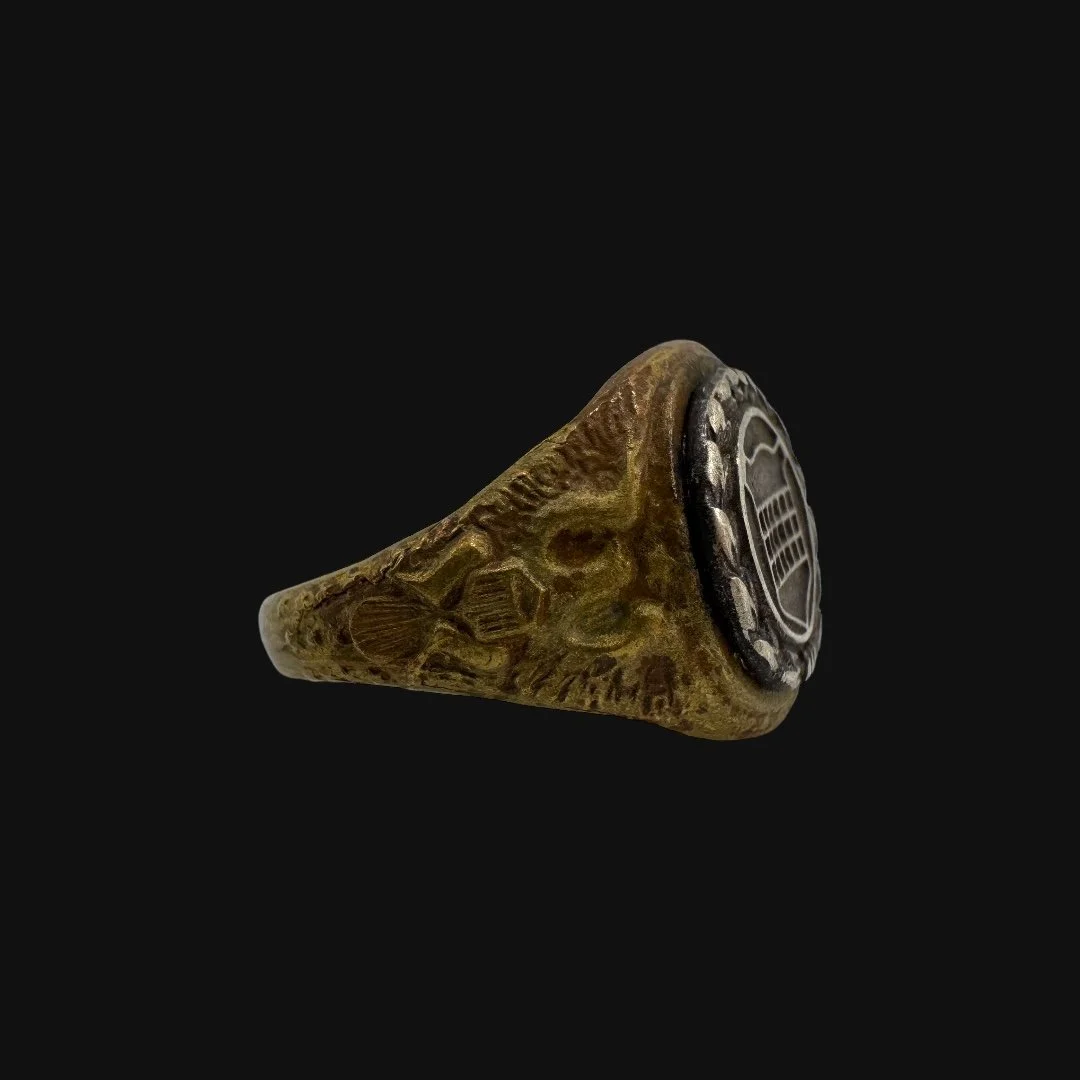 Image 2 of 15
Image 2 of 15

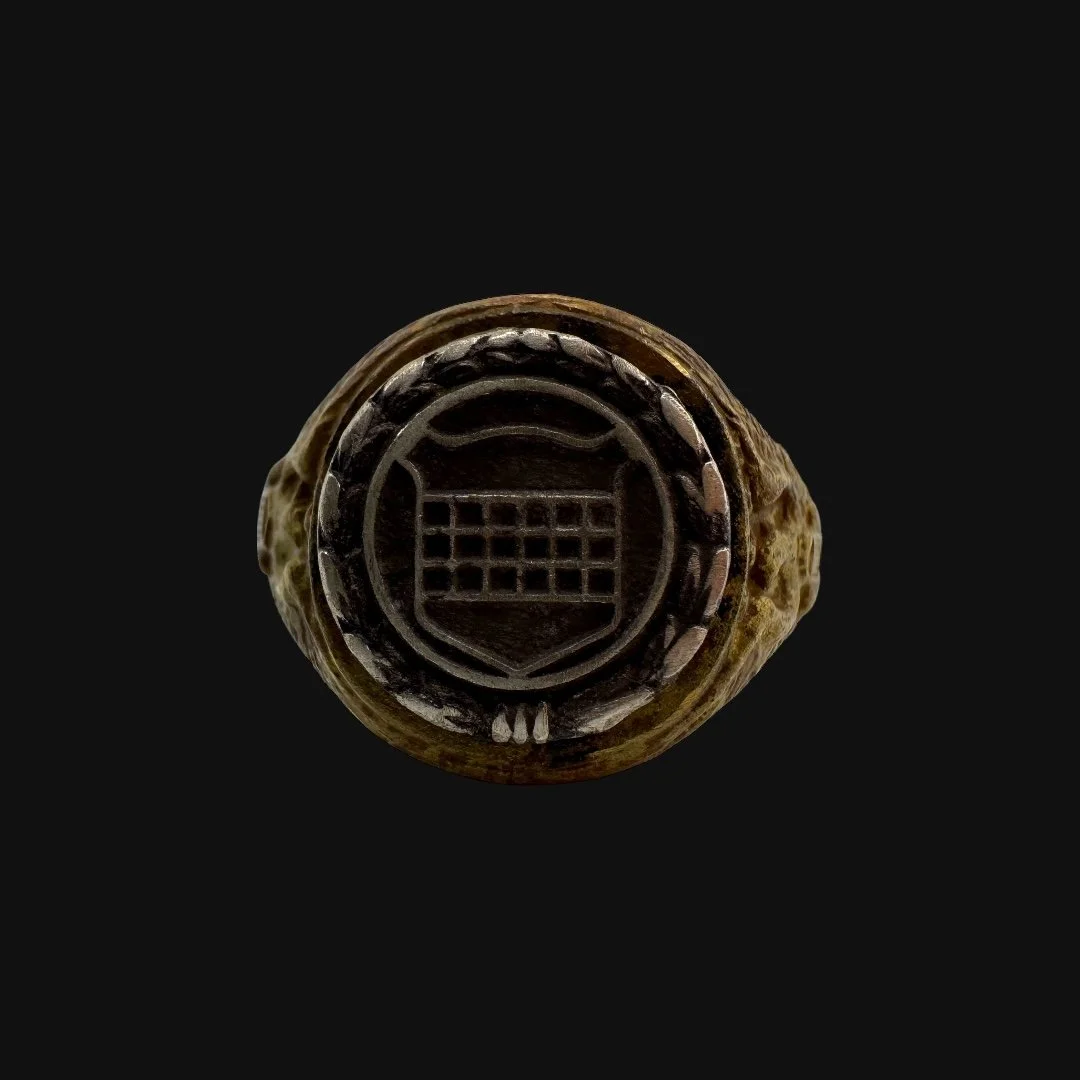 Image 3 of 15
Image 3 of 15

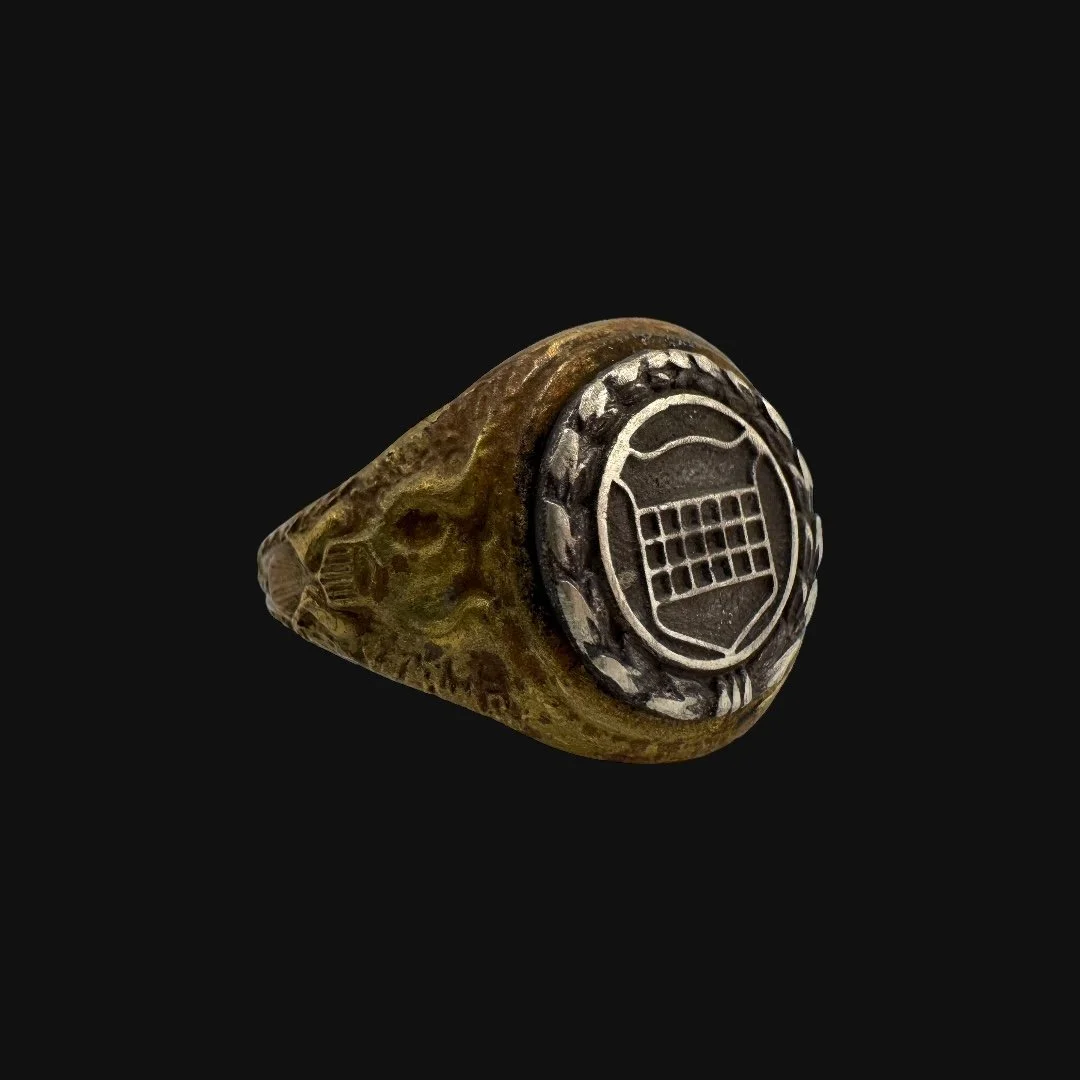 Image 4 of 15
Image 4 of 15

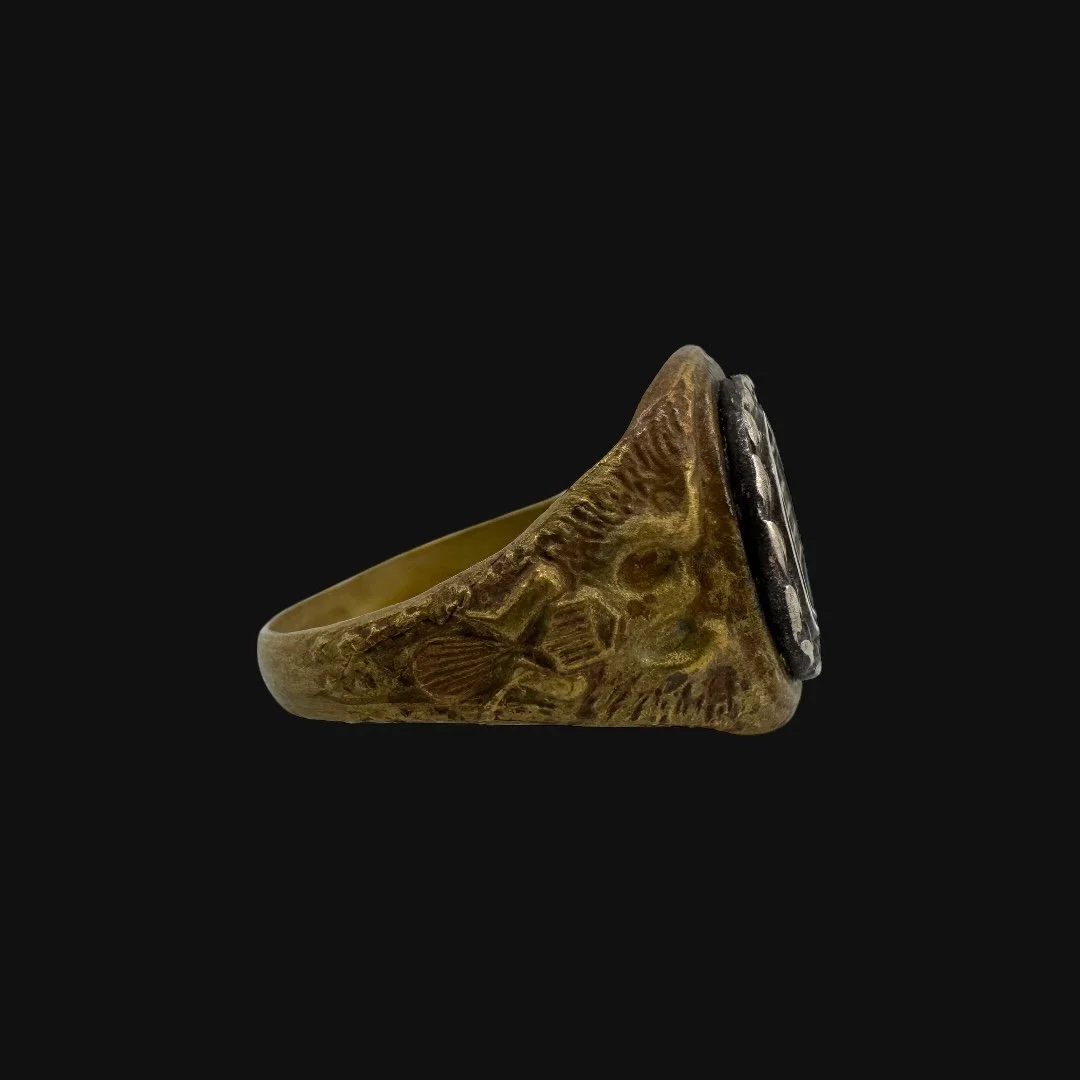 Image 5 of 15
Image 5 of 15

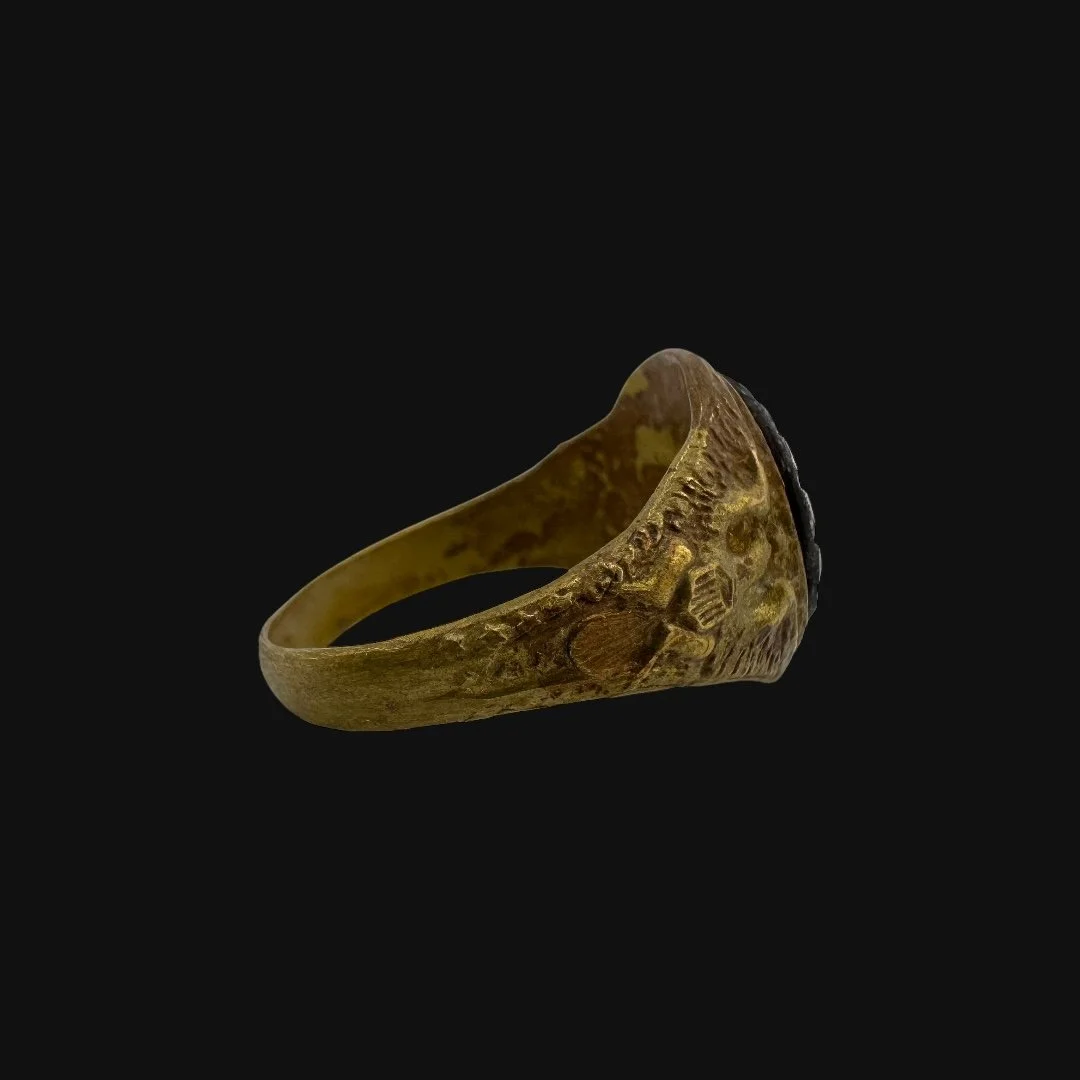 Image 6 of 15
Image 6 of 15

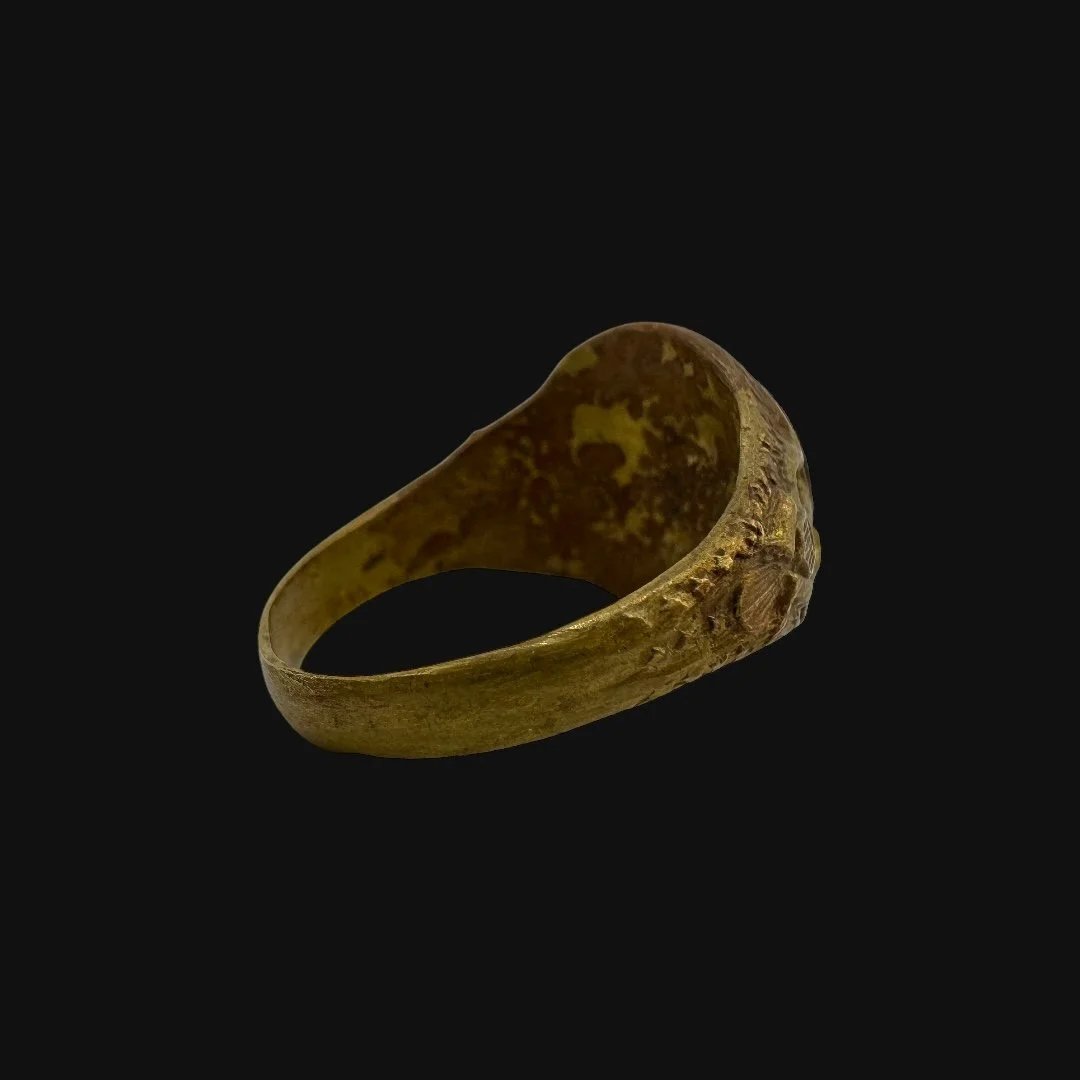 Image 7 of 15
Image 7 of 15

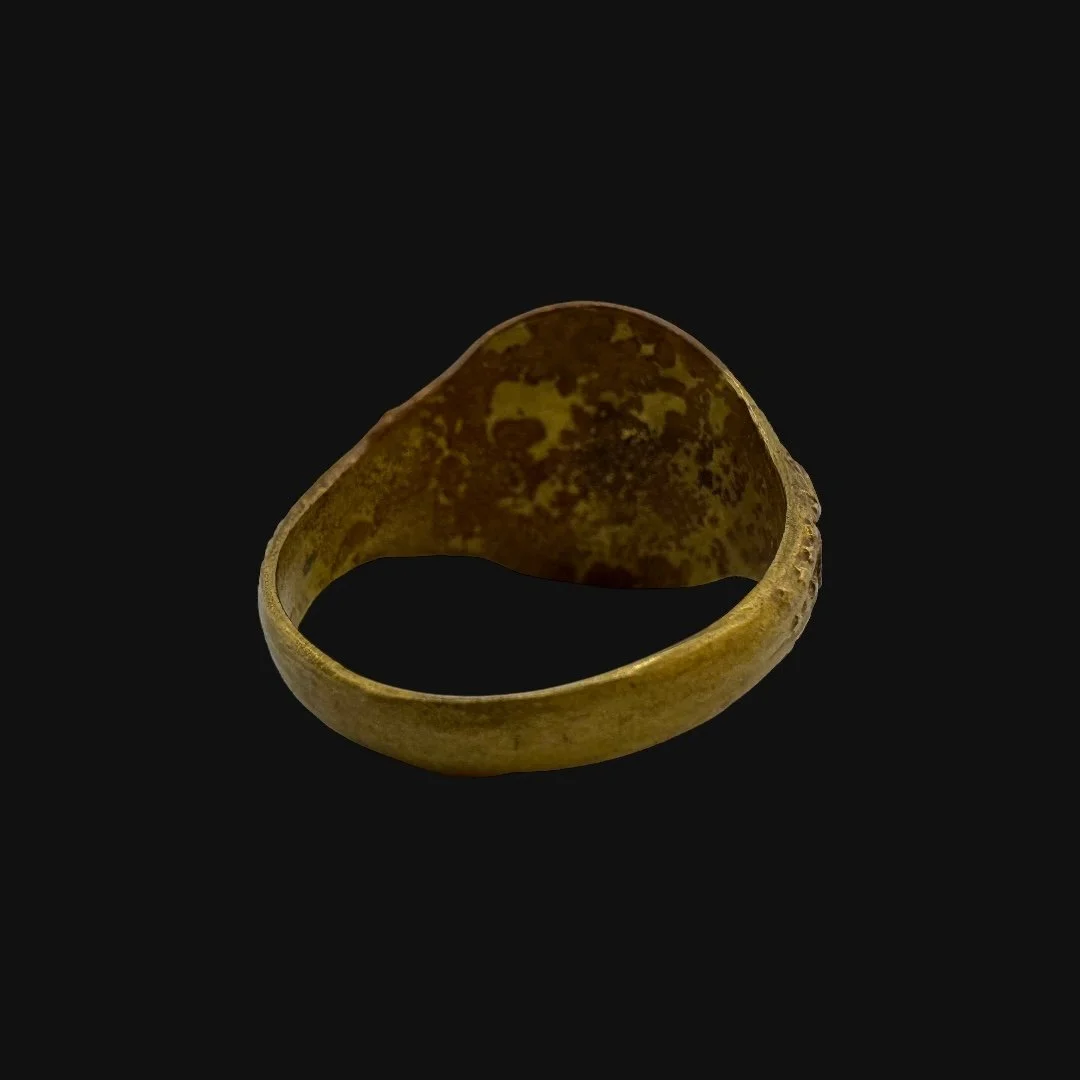 Image 8 of 15
Image 8 of 15

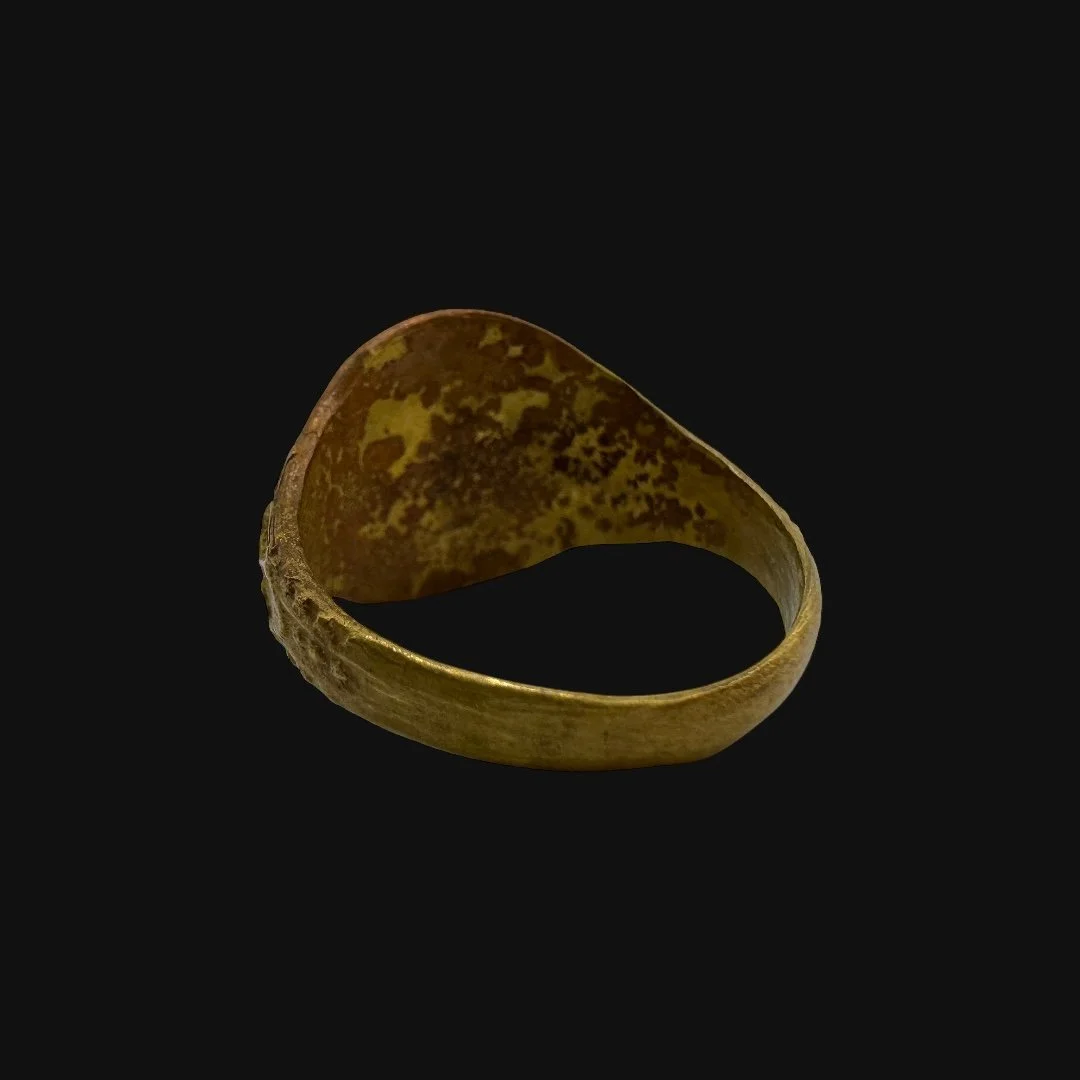 Image 9 of 15
Image 9 of 15

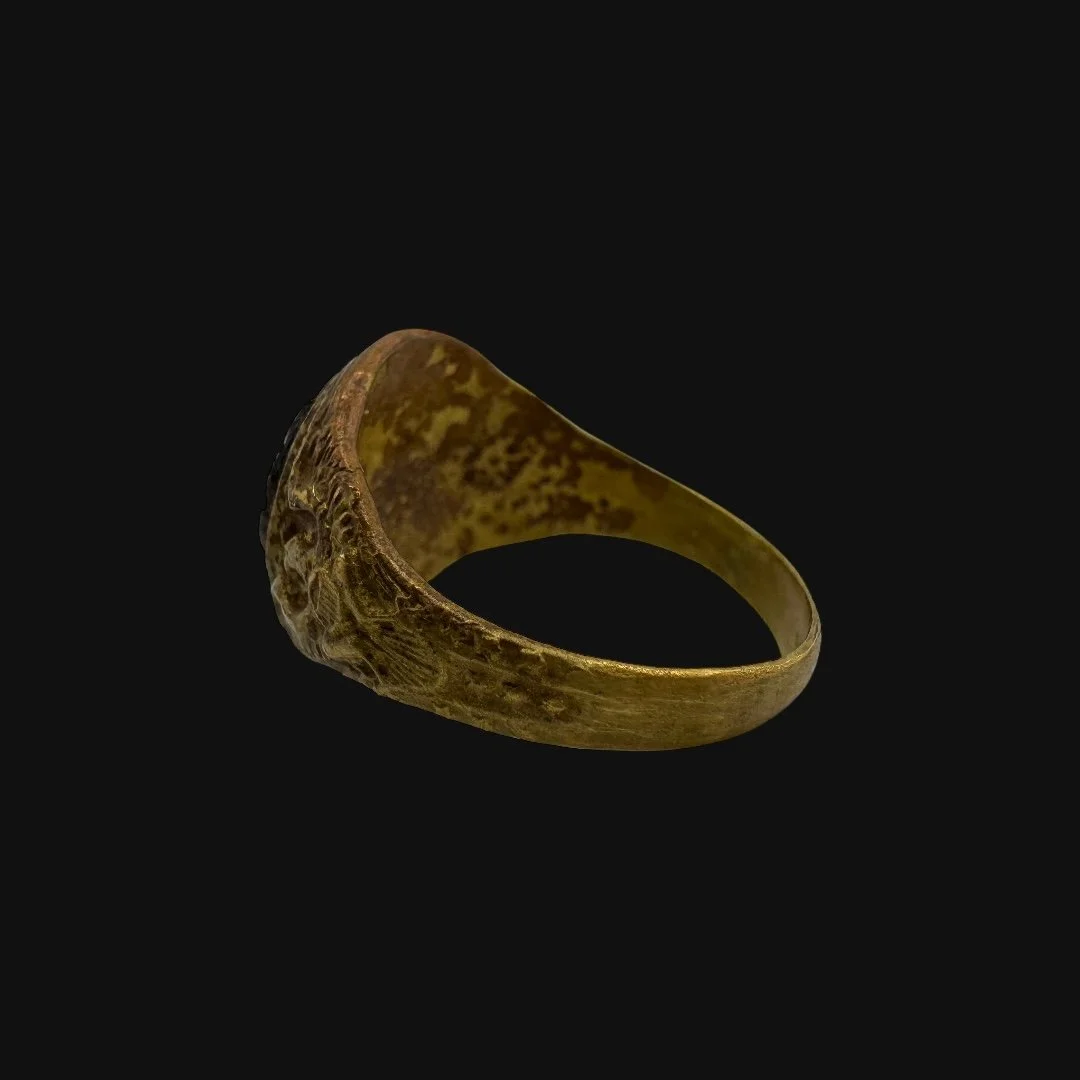 Image 10 of 15
Image 10 of 15

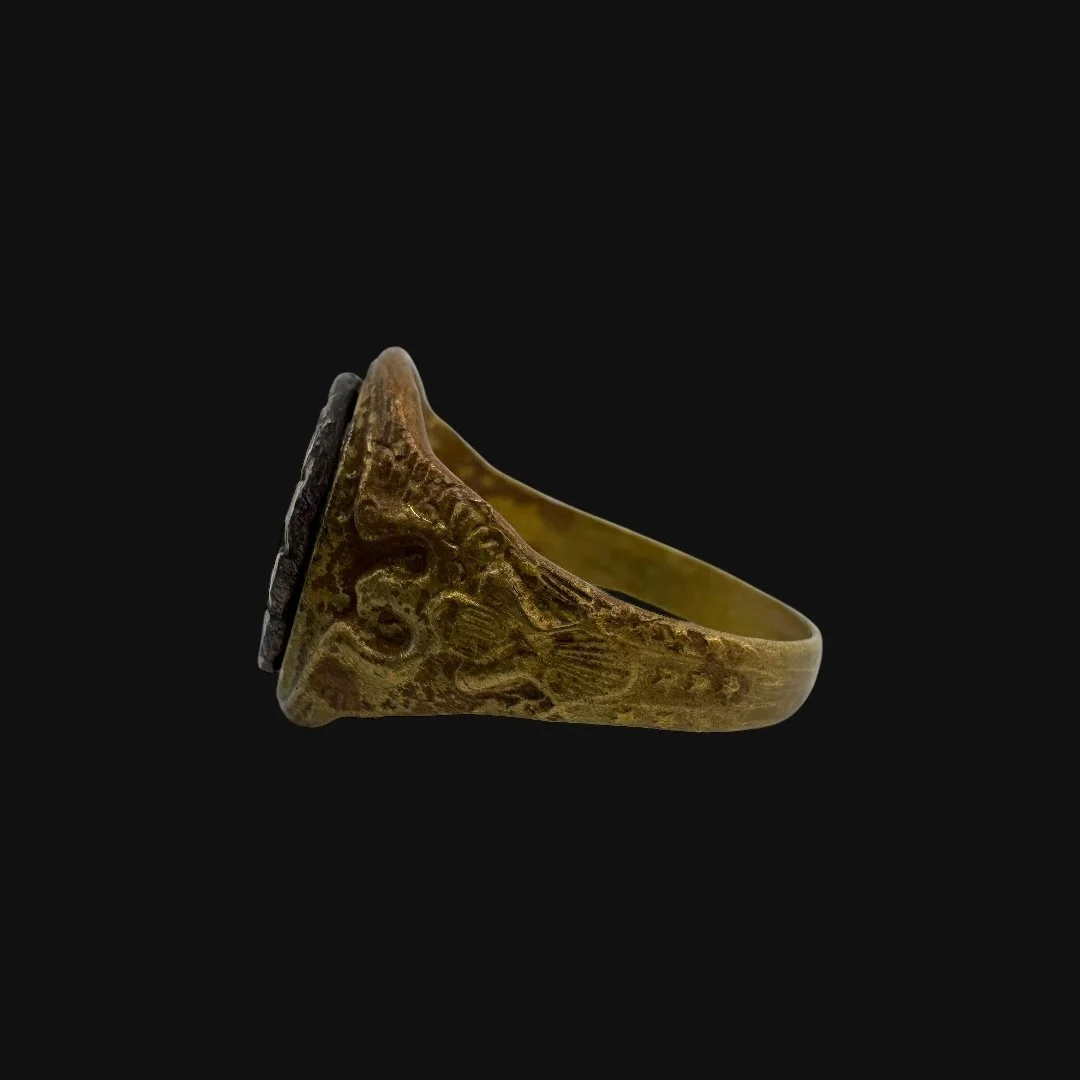 Image 11 of 15
Image 11 of 15

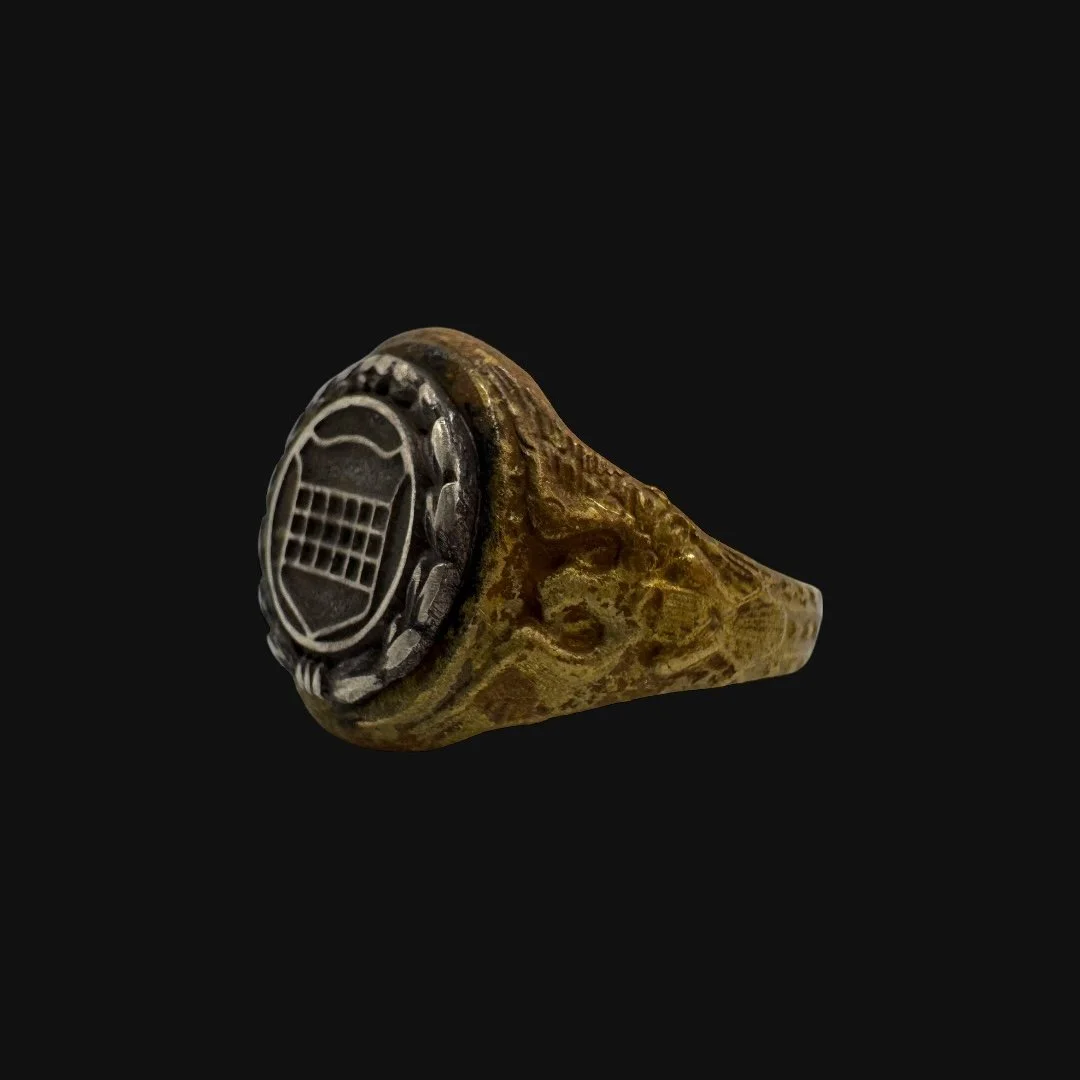 Image 12 of 15
Image 12 of 15

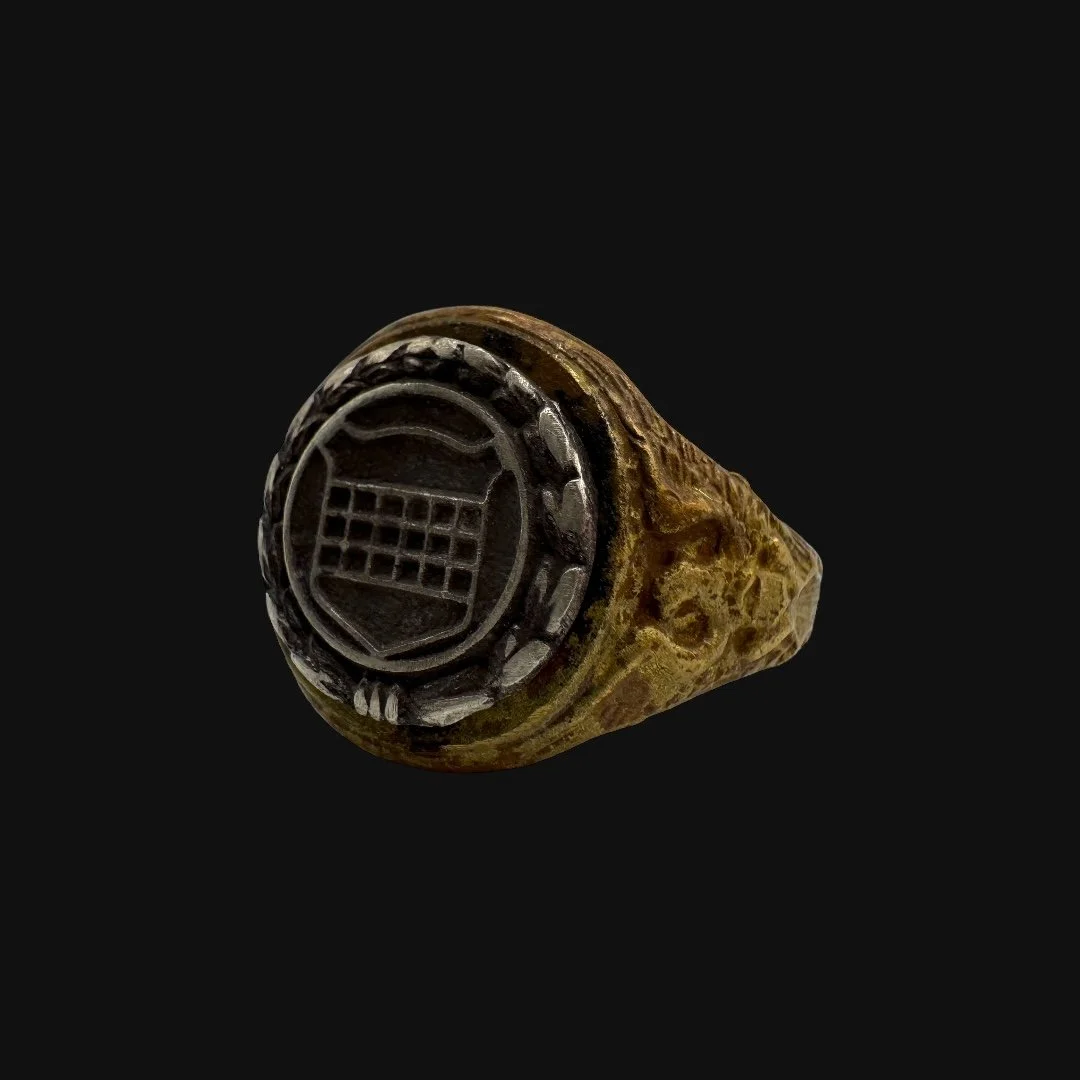 Image 13 of 15
Image 13 of 15

 Image 14 of 15
Image 14 of 15

 Image 15 of 15
Image 15 of 15
















Original WWII 1943-1945 U.S. Army 99th Infantry Division “Checkerboard Division” Combat Soldier's Military Ring (Size 11)
Comes with a hand-signed C.O.A. and a full historical research write-up
From: World War II
Branch: U.S. Army
Division: 99th Infantry Division (Checkerboard Division)
Dated: 1943-1945
Ring Size: 11 (US)
Material: Bronze & Sterling Silver
Wearable History Collection:
This authentic 1943-1945 WWII-era ring, preserved in its original and unaltered condition, combines exceptional craftsmanship with lasting durability, making it fully suitable for modern wear today. As part of our exclusive World War II “Wearable History Ring Collection,” it offers the rare opportunity to own and wear a genuine piece of World War II. Both a timeless accessory and a tangible link to the past, this truly one-of-a-kind ring stands as a wearable tribute to the courage and sacrifice of a generation.
Historical Significance to the 44th Infantry Division During WWII:
The 99th Infantry Division, the “Checkerboard Division,” was one of the U.S. Army’s most remarkable formations of World War II, achieving distinction despite being composed largely of young, inexperienced draftees when it entered combat in late 1944. Activated in 1942 and commanded by Major General Walter E. Lauer, the 99th trained extensively before taking up positions in the Ardennes in November 1944, a sector considered relatively quiet. That illusion was shattered on December 16, 1944, when the Germans launched their massive Ardennes Counteroffensive, better known as the Battle of the Bulge.
The 99th found itself directly in the path of the German Fifth Panzer Army near Elsenborn Ridge, facing overwhelming odds of nearly 5 to 1. Despite its inexperience, the division fought stubbornly at places like Höfen, Monschau, and Krinkelt-Rocherath, halting repeated assaults by German armor and infantry. Their defense of Elsenborn Ridge denied the enemy vital road networks, a factor historians agree was critical in blunting Hitler’s offensive. What began as a baptism of fire became one of the most important defensive stands of the war, earning the 99th lasting respect as a combat-hardened unit.
Following the Bulge, the division transitioned to the offensive. In early 1945, it crossed the Roer River, broke through the Siegfried Line, and helped secure crossings over the Rhine, proving its adaptability in large-scale attacks. The 99th then joined in clearing the Ruhr Pocket, capturing thousands of German troops, before advancing into Bavaria and overseeing surrenders as the war came to an end. Over 200 days of combat, its soldiers earned numerous decorations for valor and established themselves as equals among veteran divisions.
The historical significance of the 99th Infantry Division lies in its transformation from an untested formation into a decisive contributor to Allied victory. Its stand at the Battle of the Bulge ensured the failure of Germany’s last major offensive, while its role in breaching the Siegfried Line, crossing the Rhine, and dismantling the Ruhr cemented its importance in the final drive into Germany. The Checkerboard Division’s legacy is one of resilience, sacrifice, and the enduring strength of America’s citizen-soldiers when thrust into history’s greatest conflict.
The Legacy Within This Ring:
This original World War II 99th Infantry Division ring is a rare and deeply personal artifact, privately commissioned by a soldier of the famed “Checkerboard Division.” Bearing the division’s distinctive black-and-white emblem on the front, the ring allowed its owner to carry the symbol of his service not only on his uniform but also as a constant reminder on his hand. For the men of the 99th—young and often untested when they entered combat—the emblem became a badge of resilience, earned on the frozen fields of the Battle of the Bulge and carried with them through the brutal advance into Germany. Such rings were more than jewelry. They stood as tokens of sacrifice, endurance, and brotherhood forged in fire. Every engraved detail reflects the pride these men held in their division, whose steadfast defense on Elsenborn Ridgedenied the German Fifth Panzer Army the breakthroughs it sought and helped blunt Hitler’s last great offensive. From that desperate stand, through the breaching of the Siegfried Line and the crossing of the Rhine, to the final drive into Bavaria, the emblem of the 99th marked soldiers who had risen to the challenge of history’s greatest conflict. Today, this ring endures as a wearable relic of the 99th Infantry Division’s legacy. It represents not only the courage of those who held the line against overwhelming odds in December 1944, but also the enduring spirit of the Checkerboard Division, ordinary citizen-soldiers who became extraordinary in the crucible of war. More than a collectible, it is a symbol of resilience, loyalty, and the sacrifices that secured victory in Europe.
Comes with a hand-signed C.O.A. and a full historical research write-up
From: World War II
Branch: U.S. Army
Division: 99th Infantry Division (Checkerboard Division)
Dated: 1943-1945
Ring Size: 11 (US)
Material: Bronze & Sterling Silver
Wearable History Collection:
This authentic 1943-1945 WWII-era ring, preserved in its original and unaltered condition, combines exceptional craftsmanship with lasting durability, making it fully suitable for modern wear today. As part of our exclusive World War II “Wearable History Ring Collection,” it offers the rare opportunity to own and wear a genuine piece of World War II. Both a timeless accessory and a tangible link to the past, this truly one-of-a-kind ring stands as a wearable tribute to the courage and sacrifice of a generation.
Historical Significance to the 44th Infantry Division During WWII:
The 99th Infantry Division, the “Checkerboard Division,” was one of the U.S. Army’s most remarkable formations of World War II, achieving distinction despite being composed largely of young, inexperienced draftees when it entered combat in late 1944. Activated in 1942 and commanded by Major General Walter E. Lauer, the 99th trained extensively before taking up positions in the Ardennes in November 1944, a sector considered relatively quiet. That illusion was shattered on December 16, 1944, when the Germans launched their massive Ardennes Counteroffensive, better known as the Battle of the Bulge.
The 99th found itself directly in the path of the German Fifth Panzer Army near Elsenborn Ridge, facing overwhelming odds of nearly 5 to 1. Despite its inexperience, the division fought stubbornly at places like Höfen, Monschau, and Krinkelt-Rocherath, halting repeated assaults by German armor and infantry. Their defense of Elsenborn Ridge denied the enemy vital road networks, a factor historians agree was critical in blunting Hitler’s offensive. What began as a baptism of fire became one of the most important defensive stands of the war, earning the 99th lasting respect as a combat-hardened unit.
Following the Bulge, the division transitioned to the offensive. In early 1945, it crossed the Roer River, broke through the Siegfried Line, and helped secure crossings over the Rhine, proving its adaptability in large-scale attacks. The 99th then joined in clearing the Ruhr Pocket, capturing thousands of German troops, before advancing into Bavaria and overseeing surrenders as the war came to an end. Over 200 days of combat, its soldiers earned numerous decorations for valor and established themselves as equals among veteran divisions.
The historical significance of the 99th Infantry Division lies in its transformation from an untested formation into a decisive contributor to Allied victory. Its stand at the Battle of the Bulge ensured the failure of Germany’s last major offensive, while its role in breaching the Siegfried Line, crossing the Rhine, and dismantling the Ruhr cemented its importance in the final drive into Germany. The Checkerboard Division’s legacy is one of resilience, sacrifice, and the enduring strength of America’s citizen-soldiers when thrust into history’s greatest conflict.
The Legacy Within This Ring:
This original World War II 99th Infantry Division ring is a rare and deeply personal artifact, privately commissioned by a soldier of the famed “Checkerboard Division.” Bearing the division’s distinctive black-and-white emblem on the front, the ring allowed its owner to carry the symbol of his service not only on his uniform but also as a constant reminder on his hand. For the men of the 99th—young and often untested when they entered combat—the emblem became a badge of resilience, earned on the frozen fields of the Battle of the Bulge and carried with them through the brutal advance into Germany. Such rings were more than jewelry. They stood as tokens of sacrifice, endurance, and brotherhood forged in fire. Every engraved detail reflects the pride these men held in their division, whose steadfast defense on Elsenborn Ridgedenied the German Fifth Panzer Army the breakthroughs it sought and helped blunt Hitler’s last great offensive. From that desperate stand, through the breaching of the Siegfried Line and the crossing of the Rhine, to the final drive into Bavaria, the emblem of the 99th marked soldiers who had risen to the challenge of history’s greatest conflict. Today, this ring endures as a wearable relic of the 99th Infantry Division’s legacy. It represents not only the courage of those who held the line against overwhelming odds in December 1944, but also the enduring spirit of the Checkerboard Division, ordinary citizen-soldiers who became extraordinary in the crucible of war. More than a collectible, it is a symbol of resilience, loyalty, and the sacrifices that secured victory in Europe.
